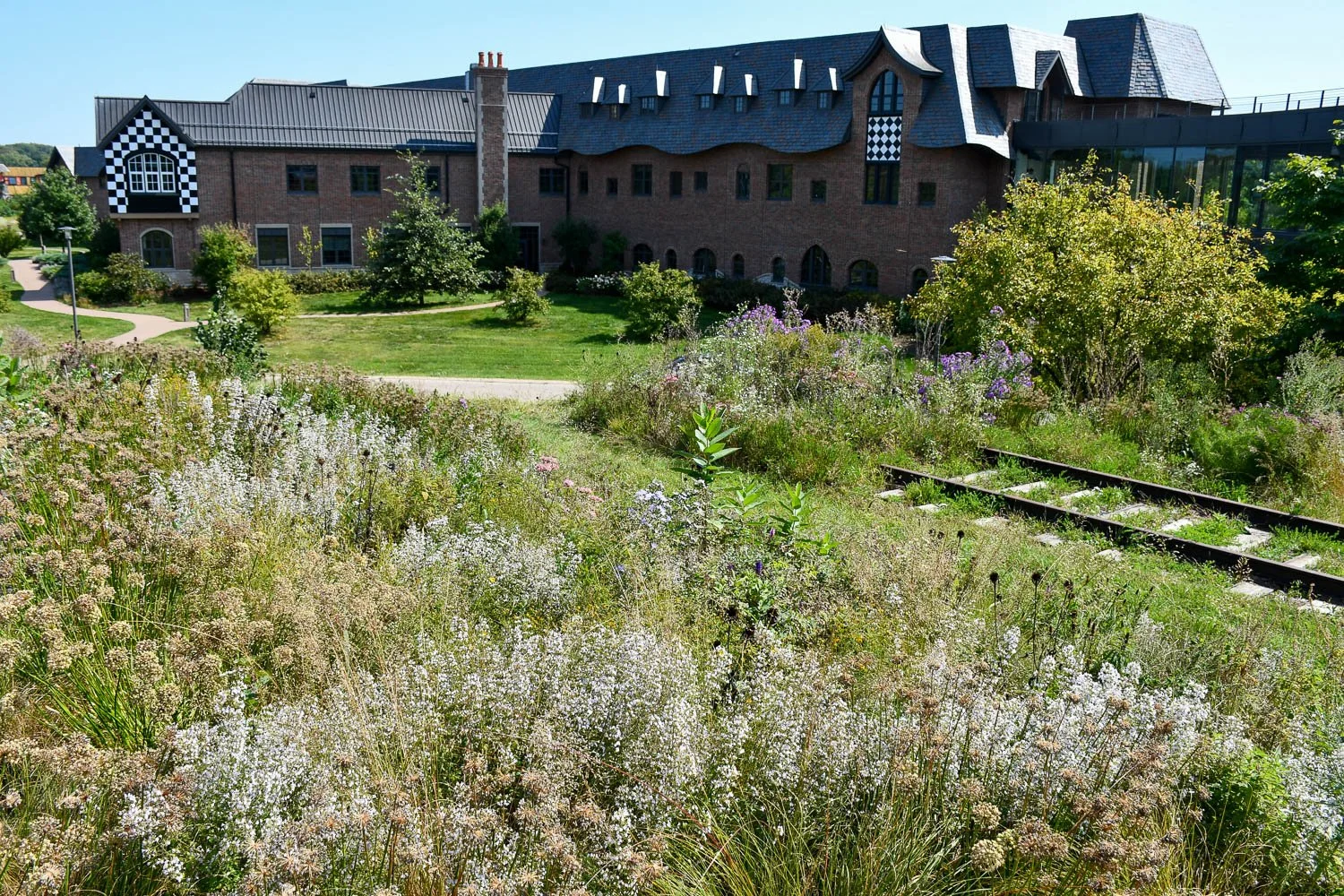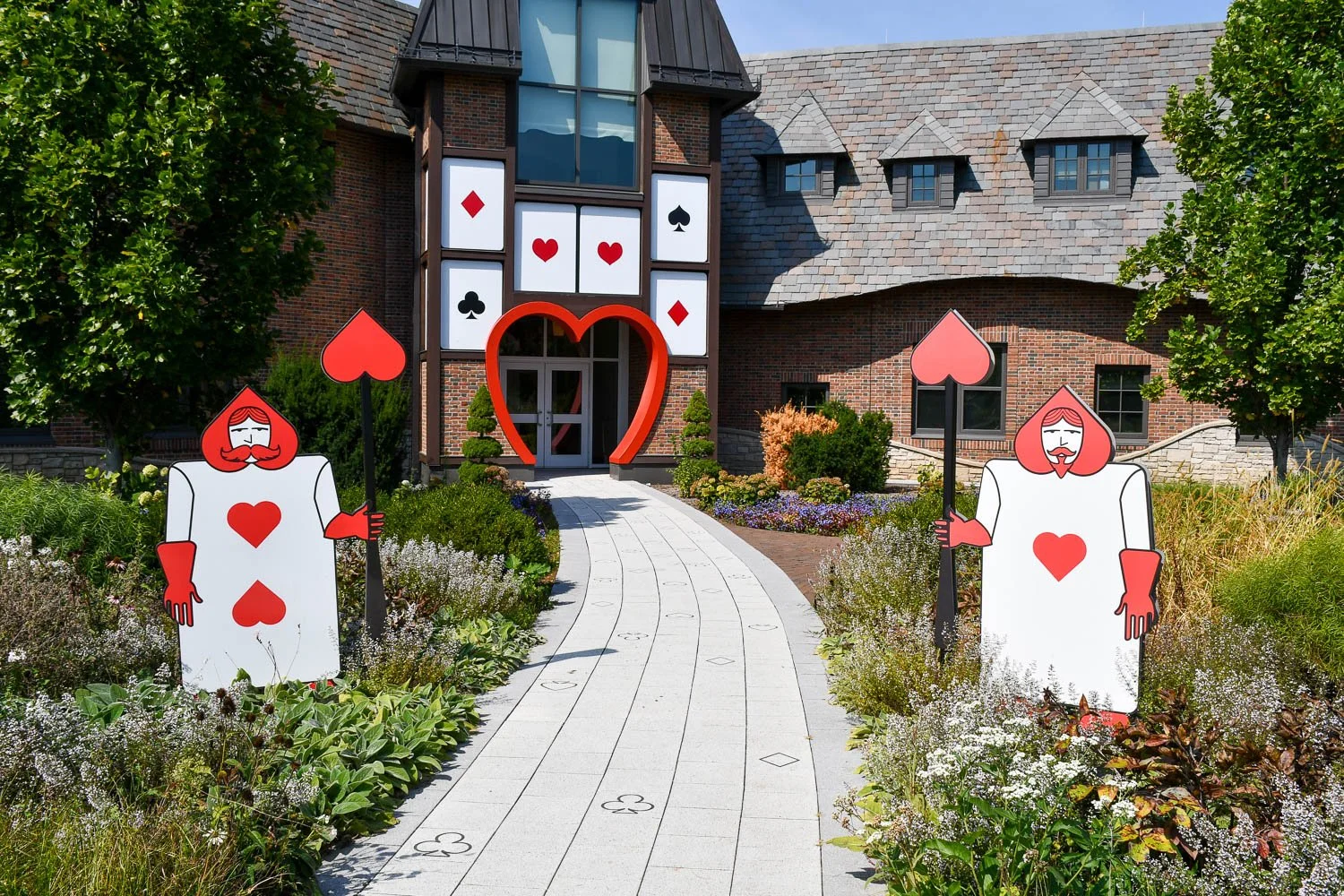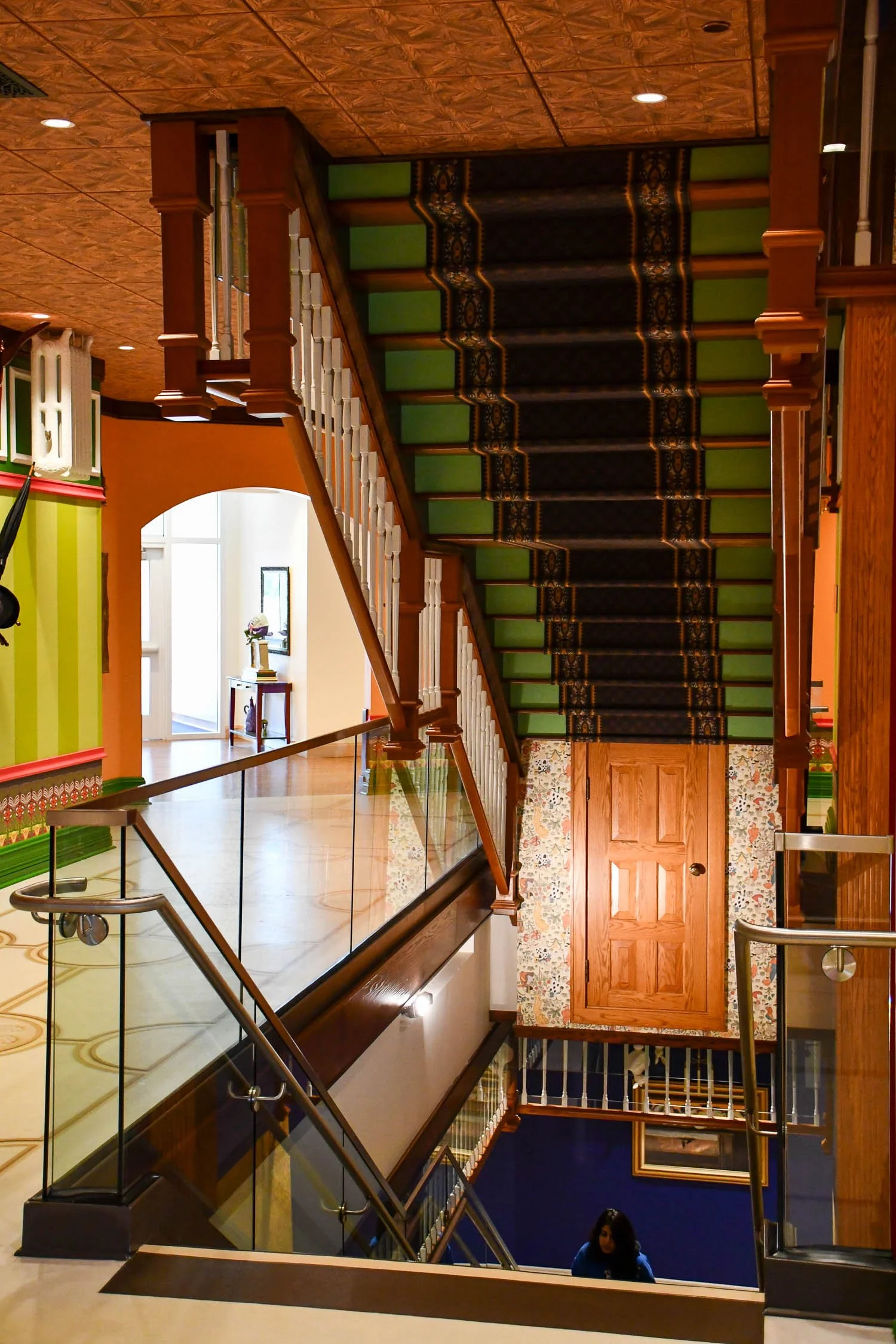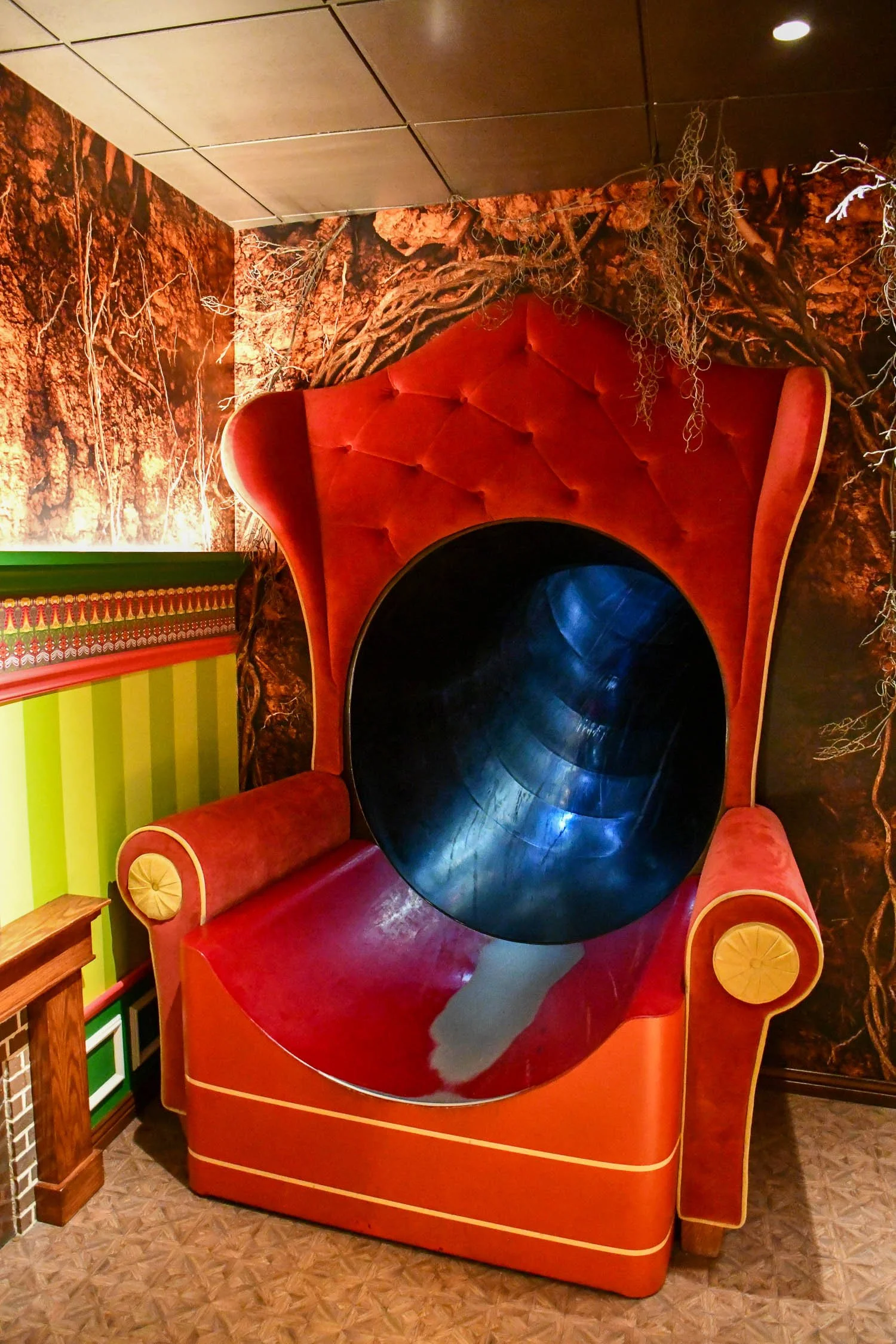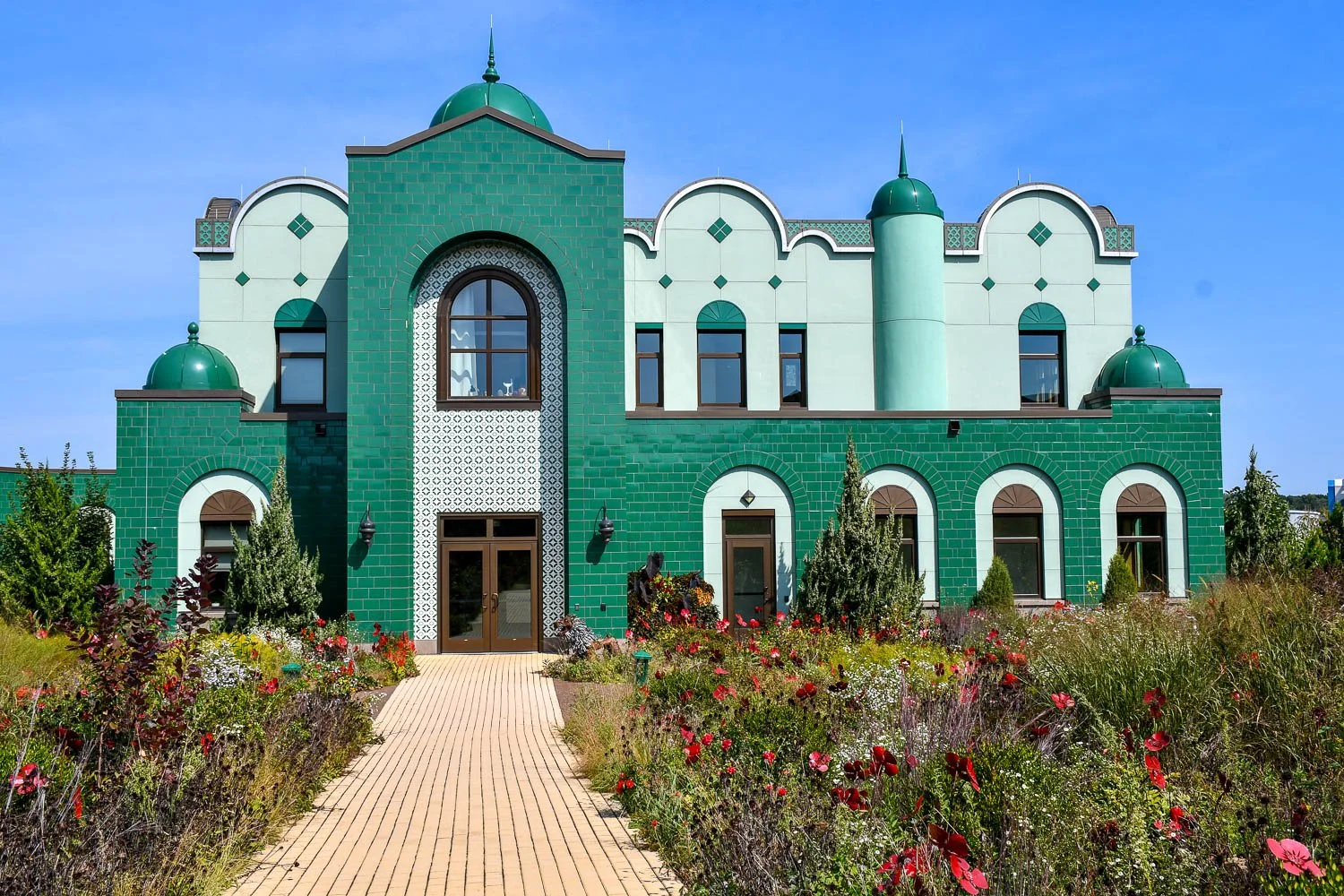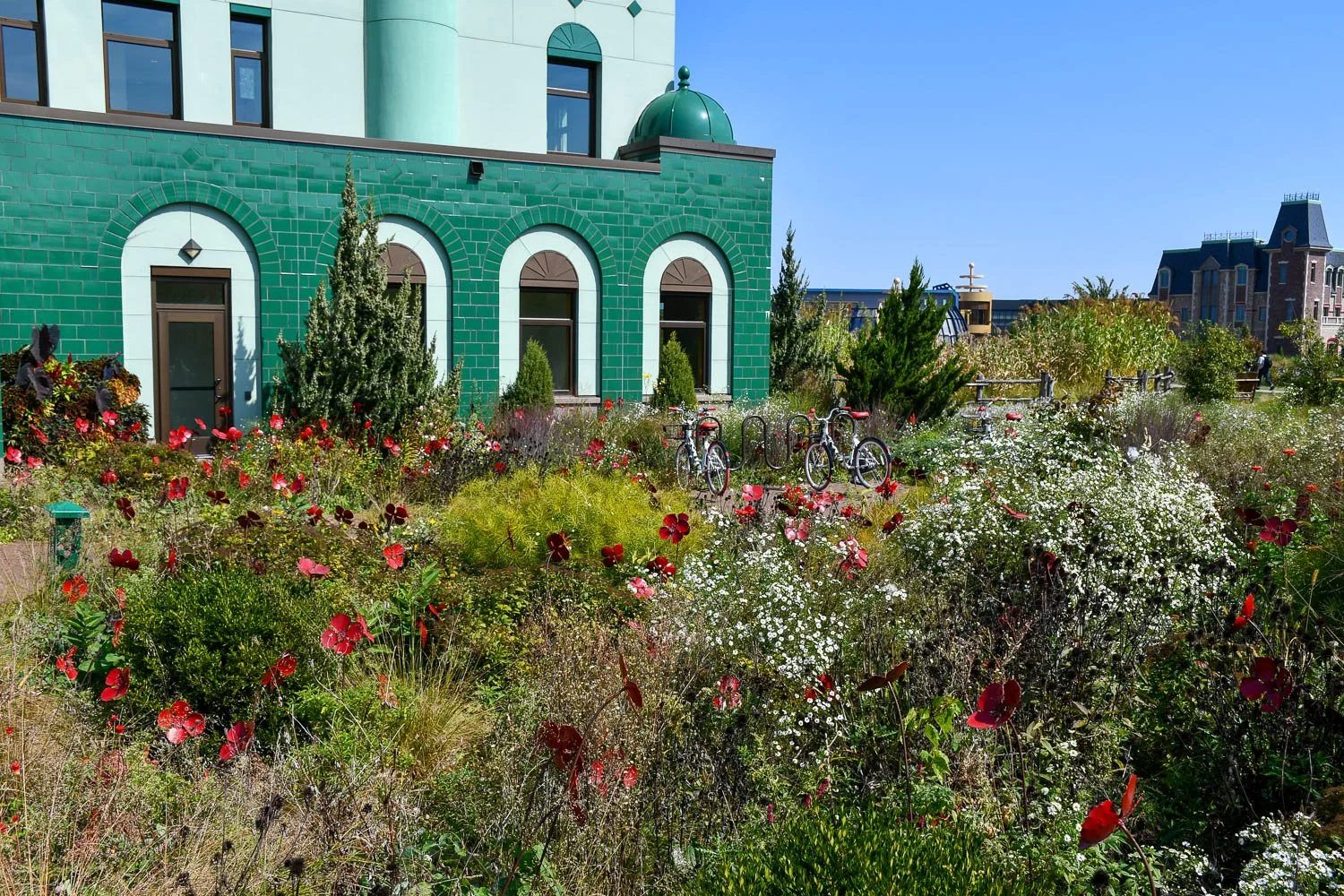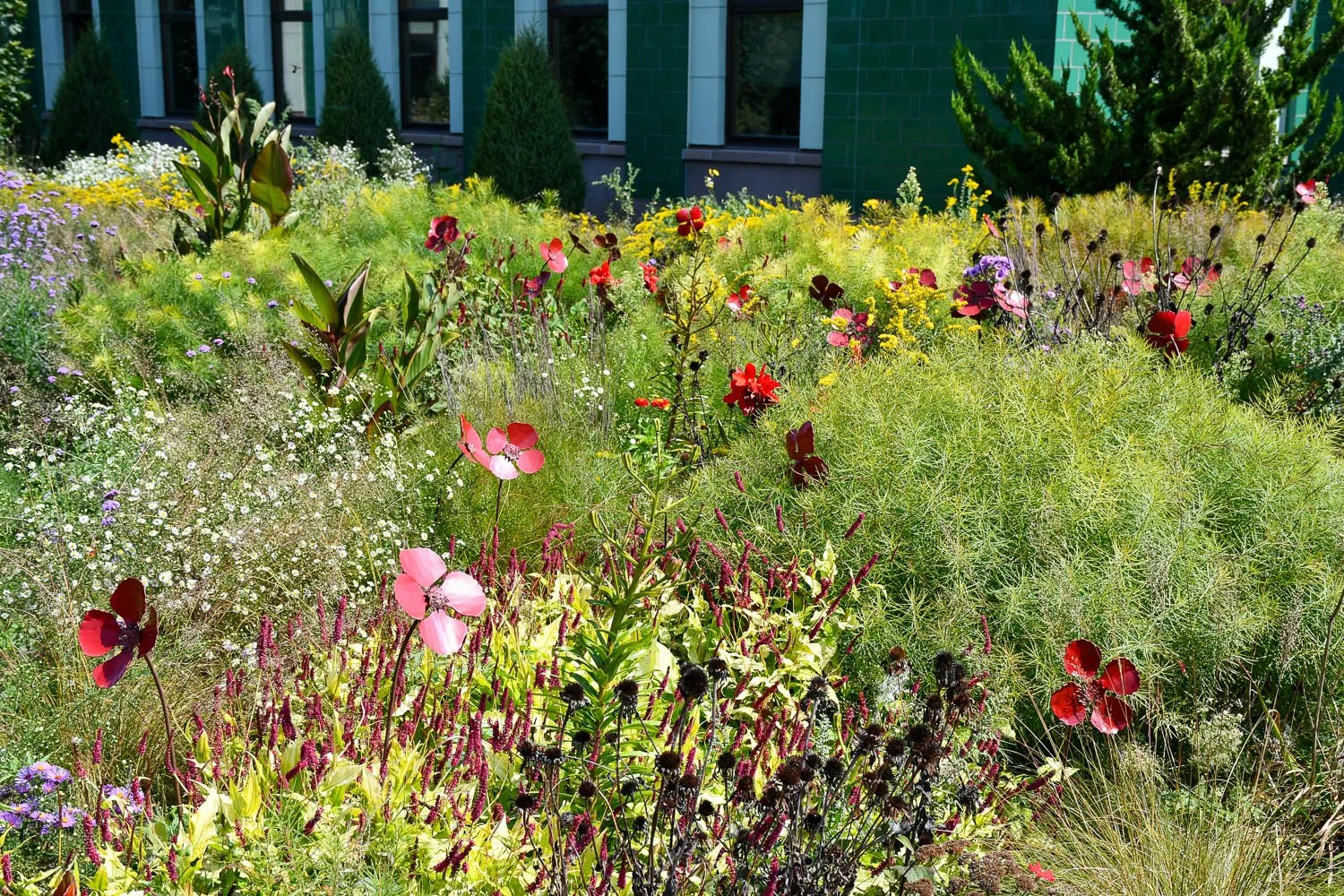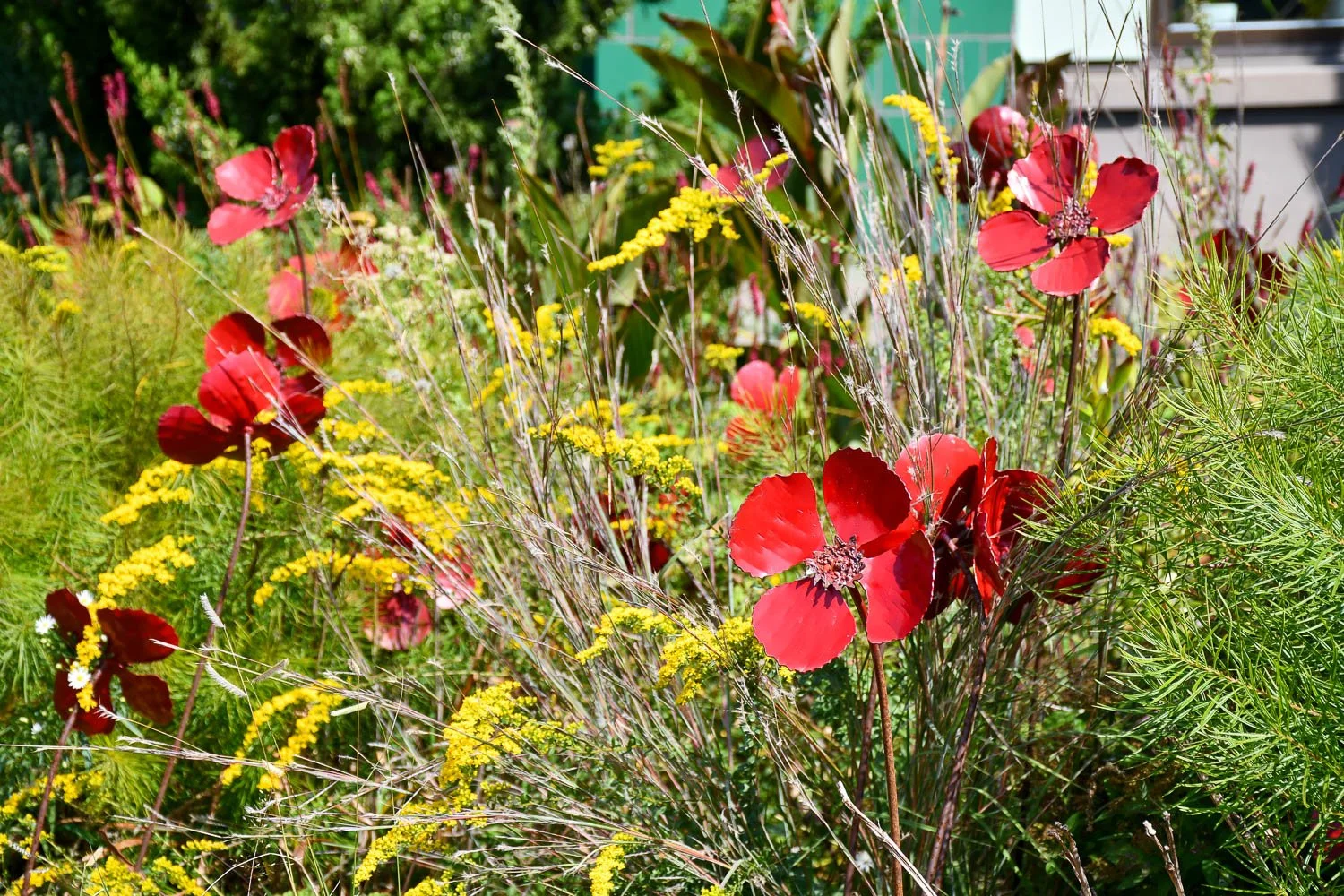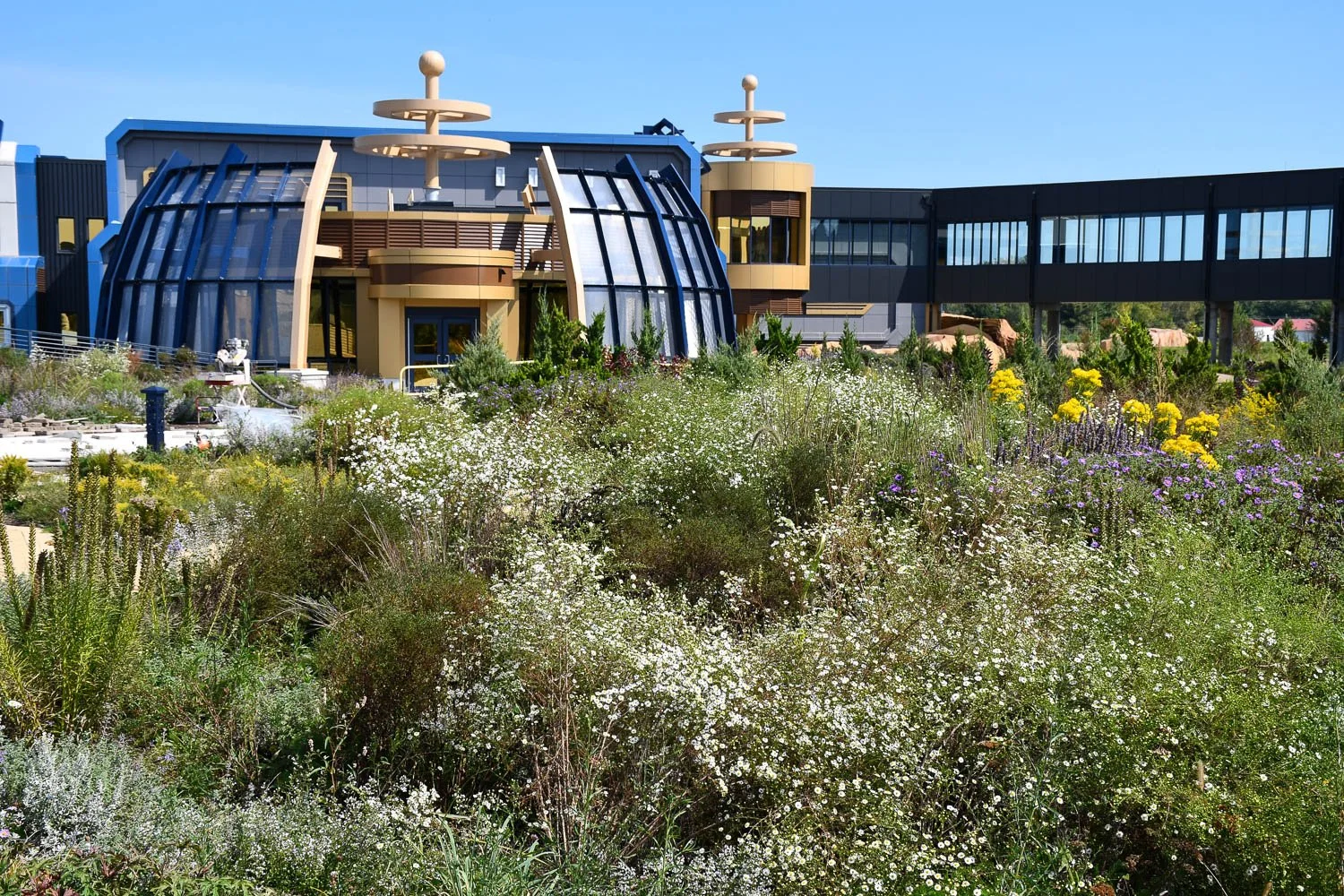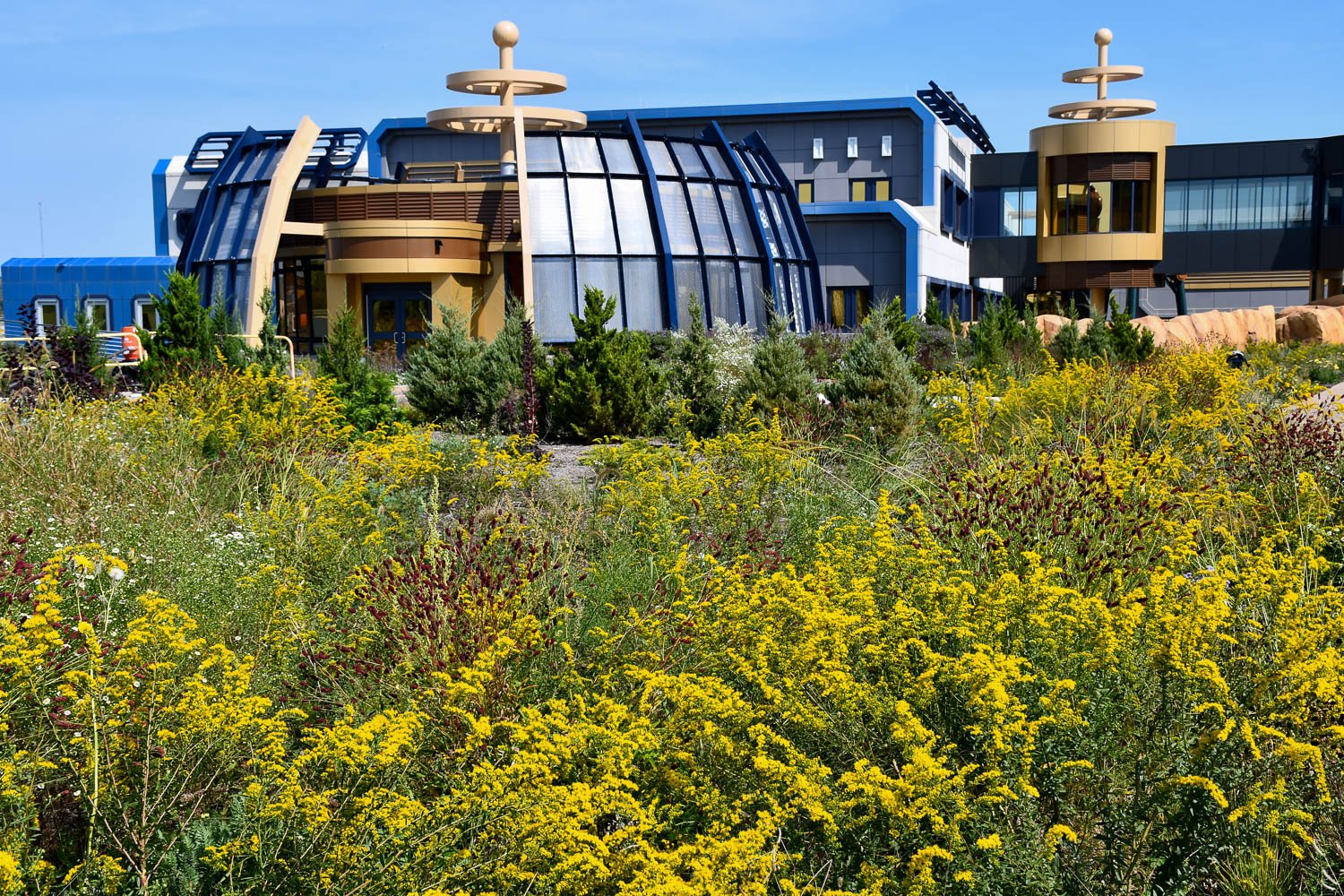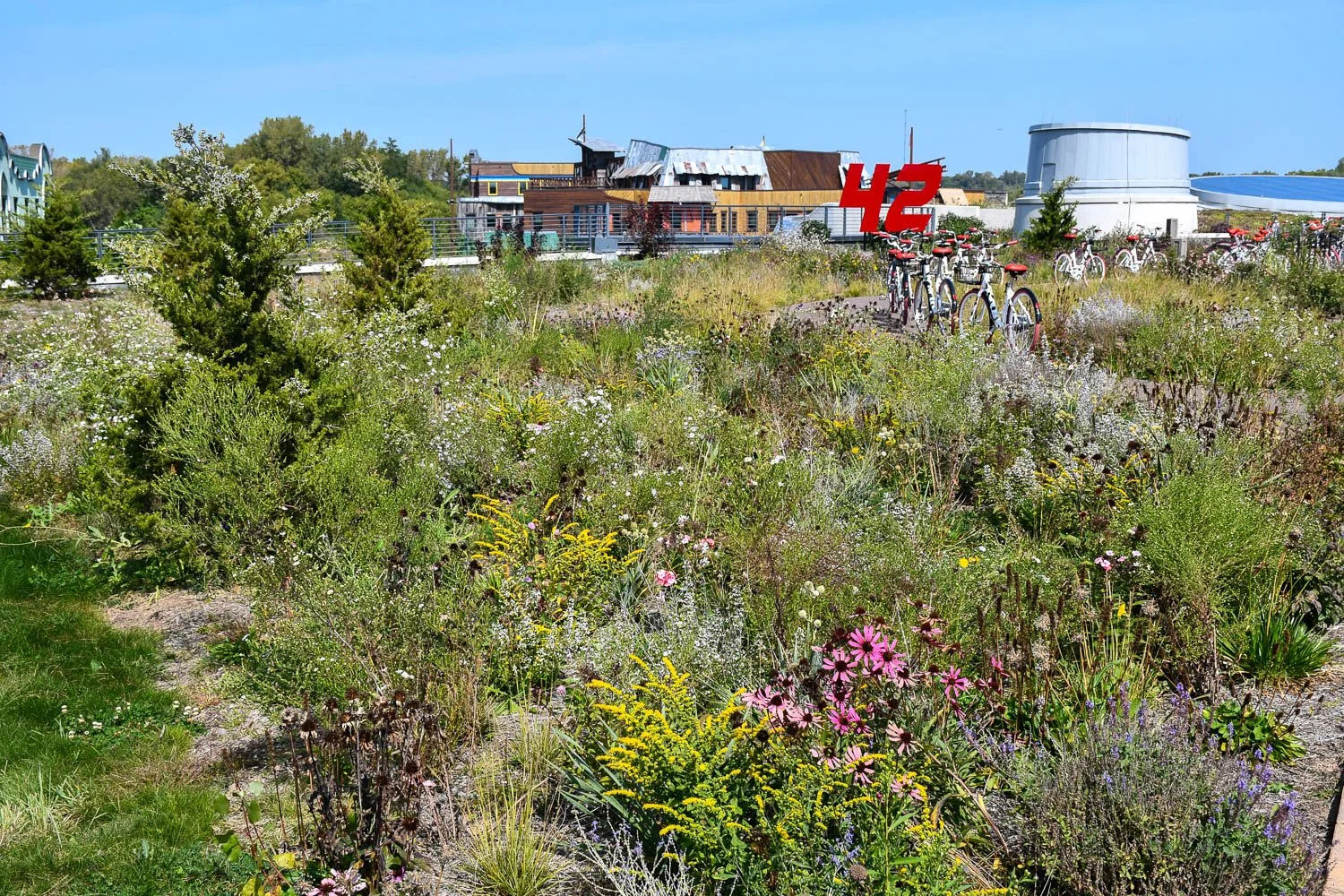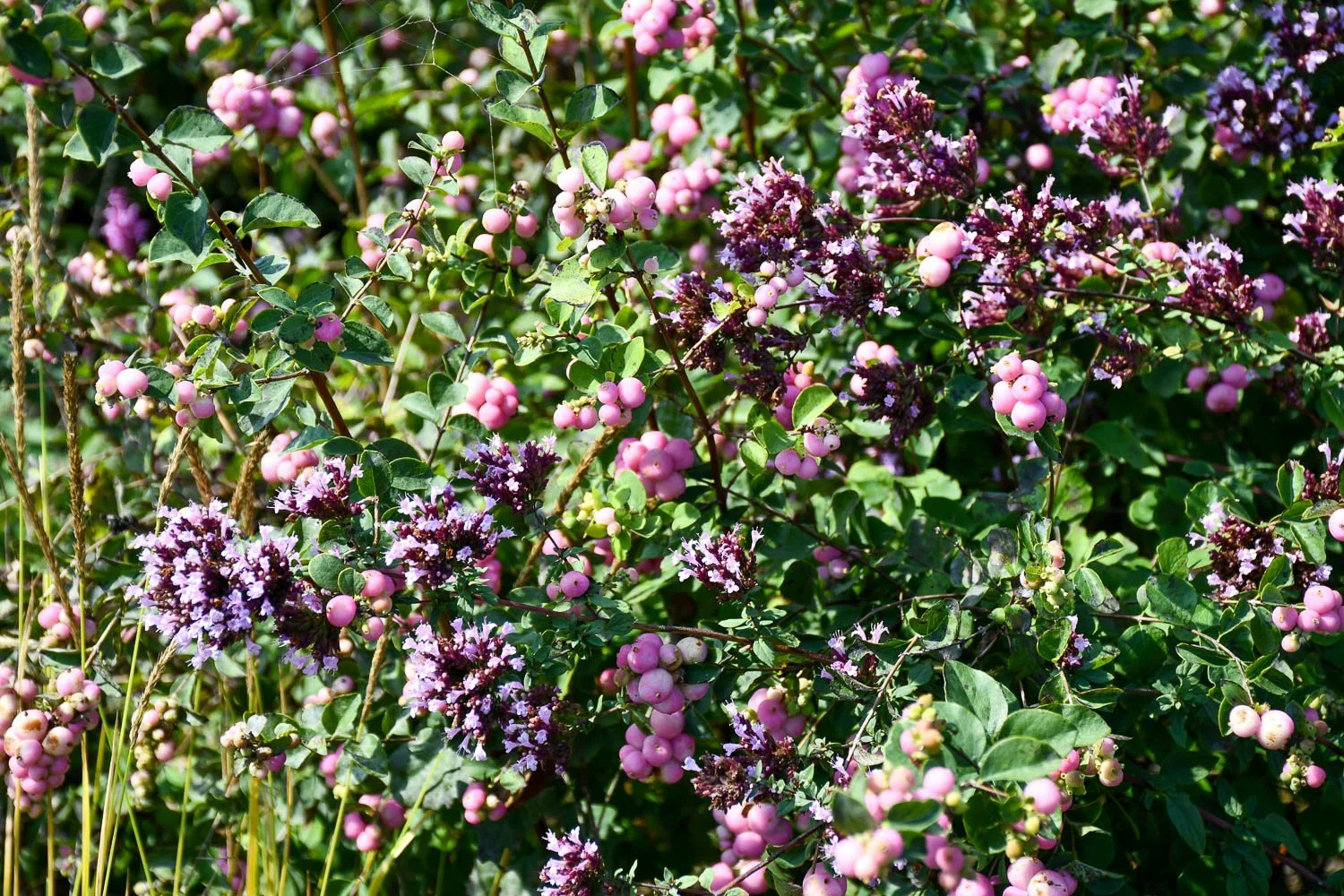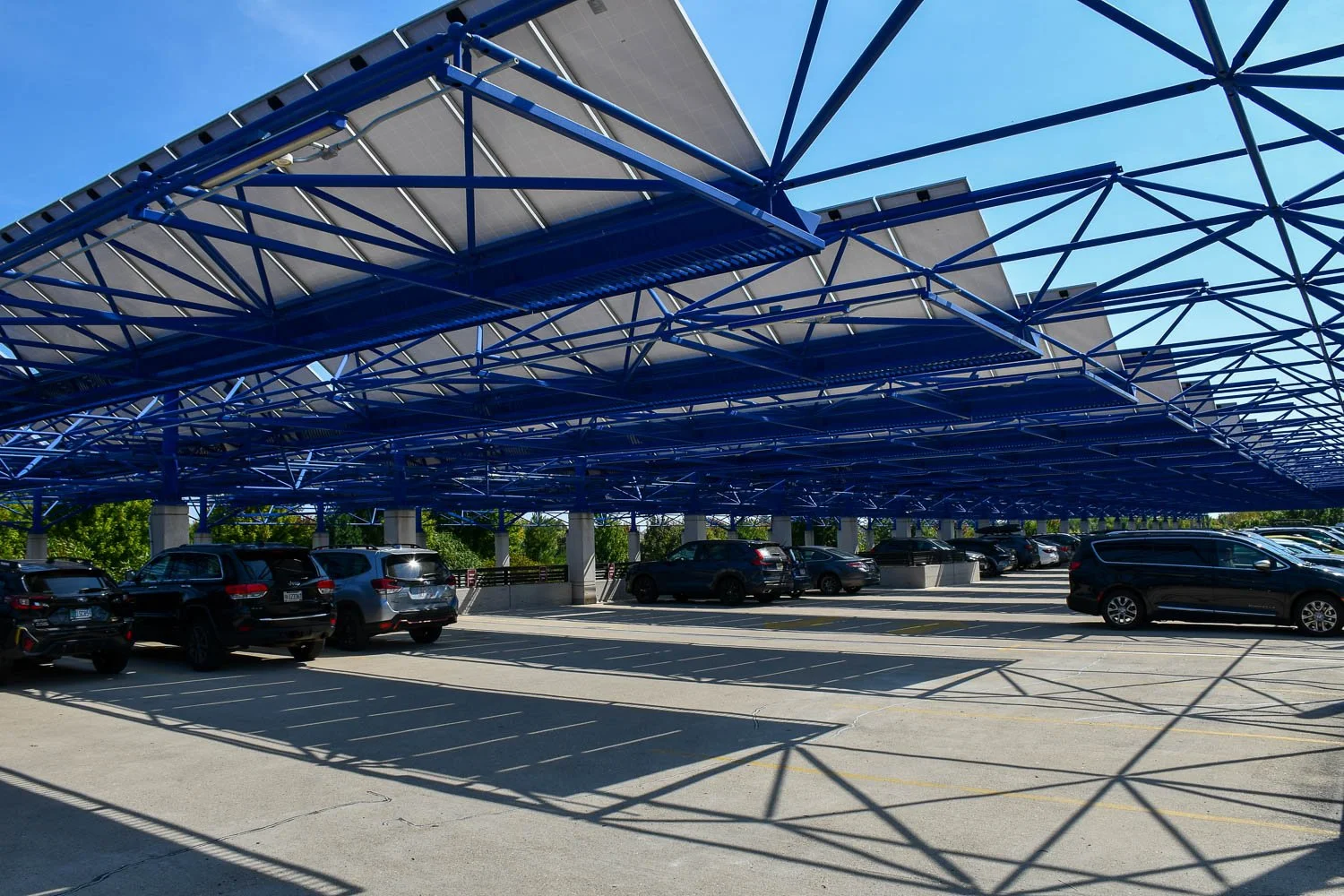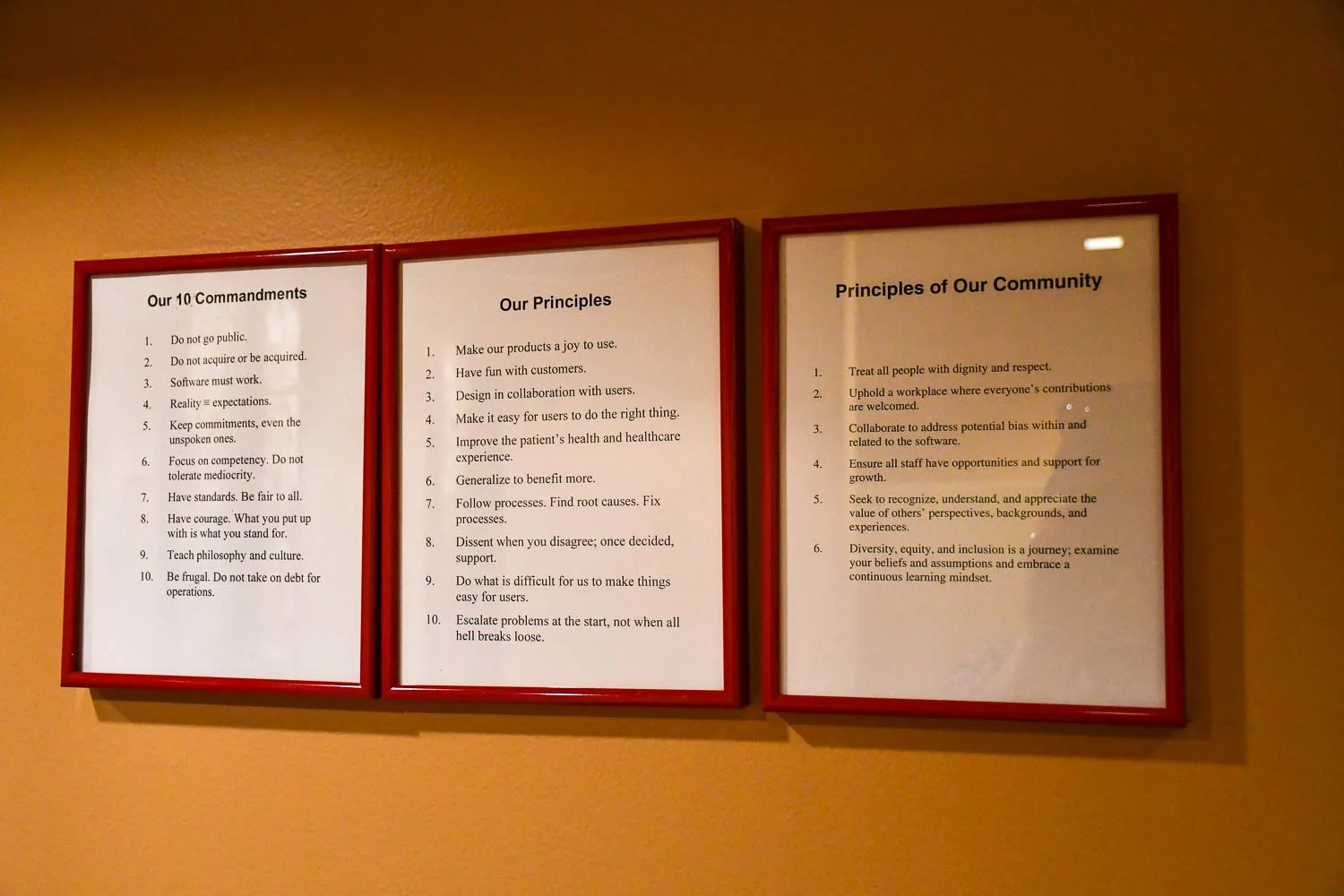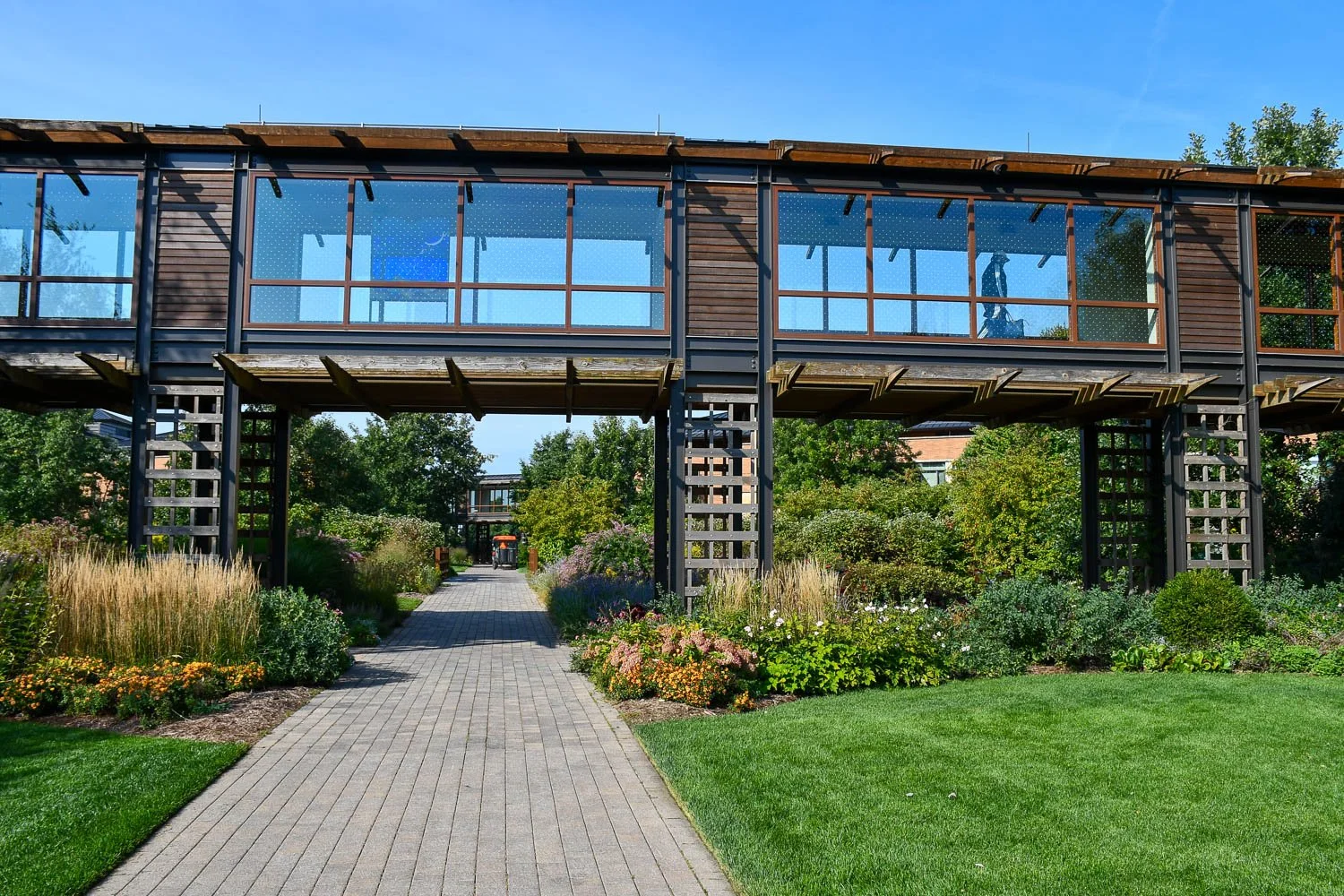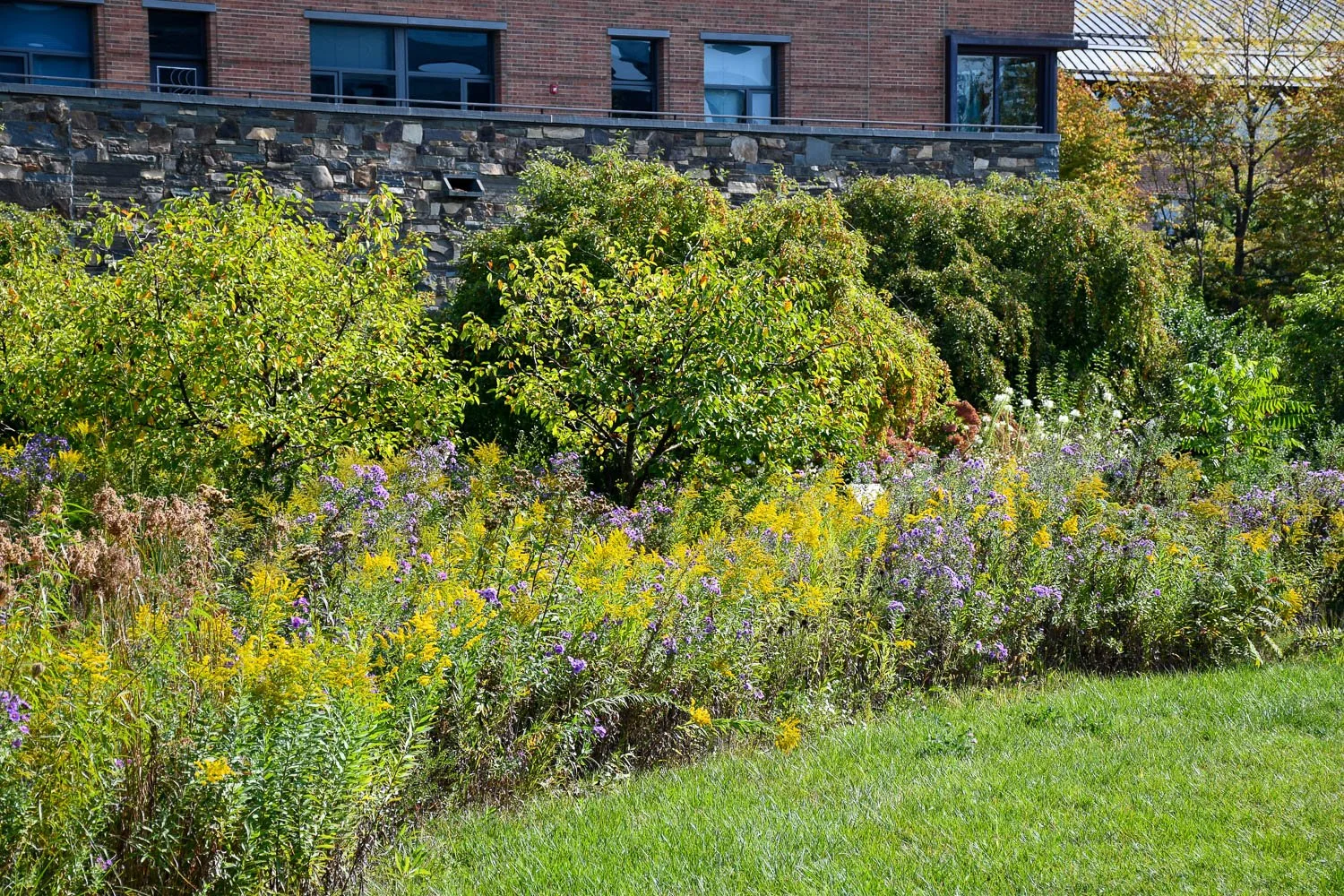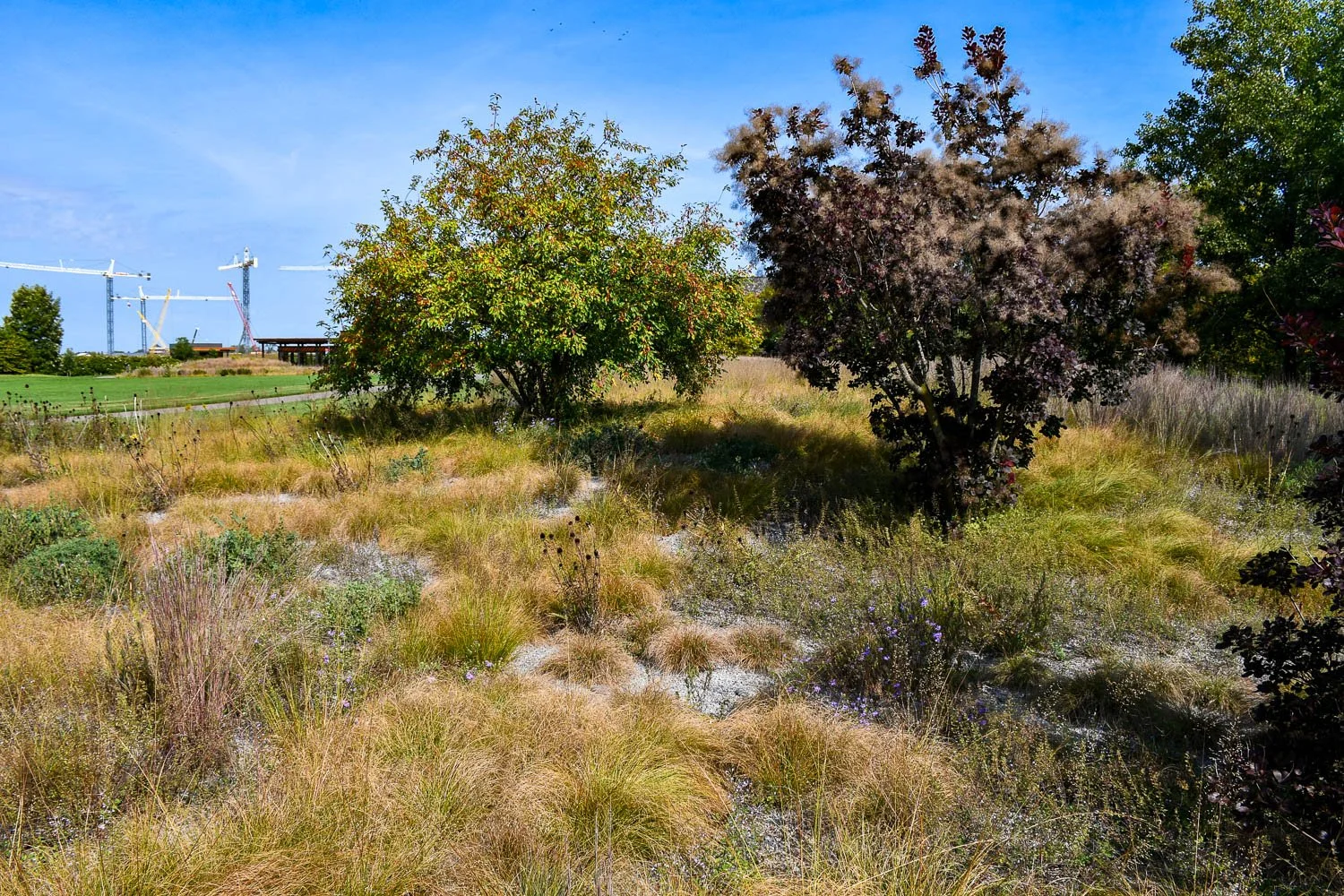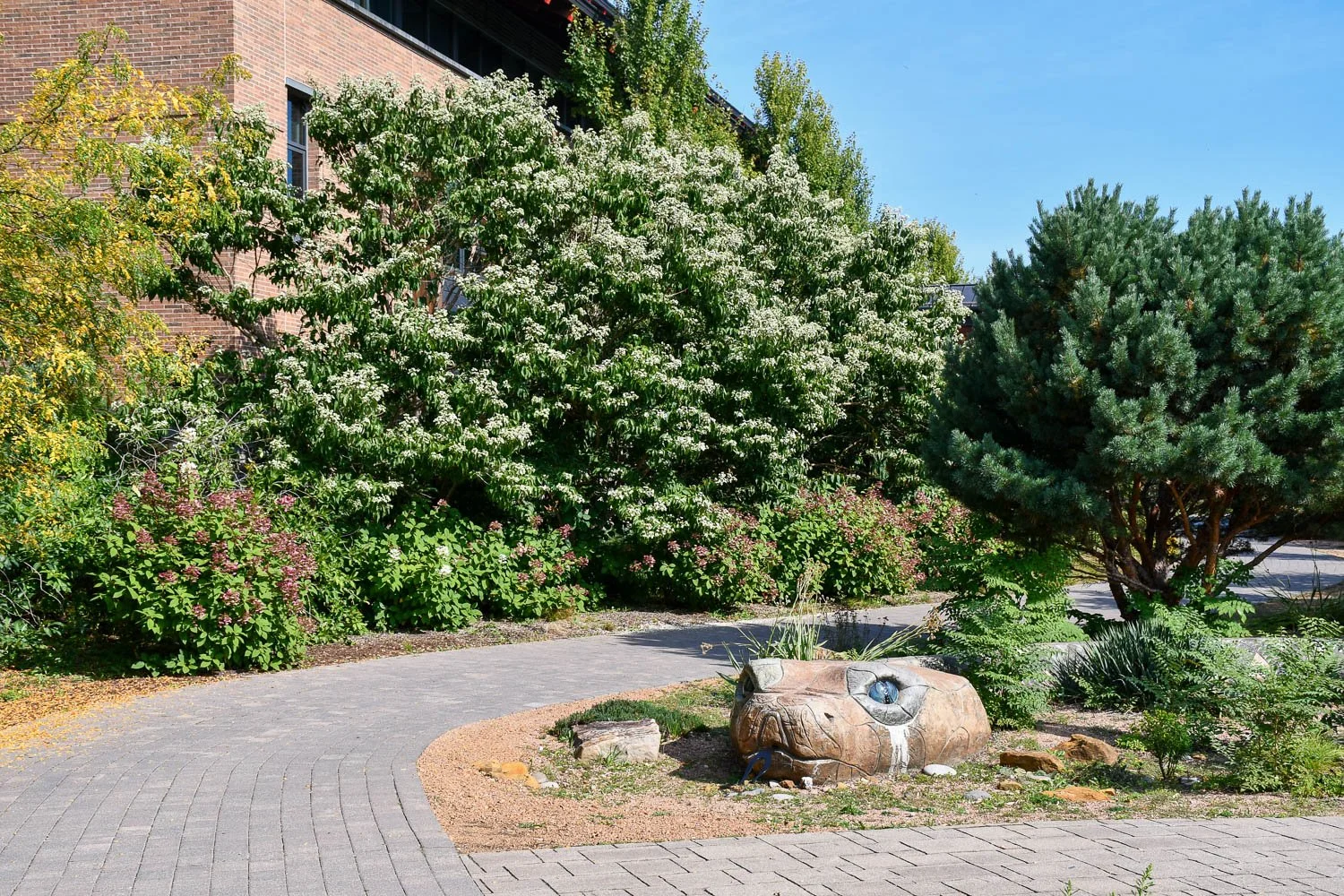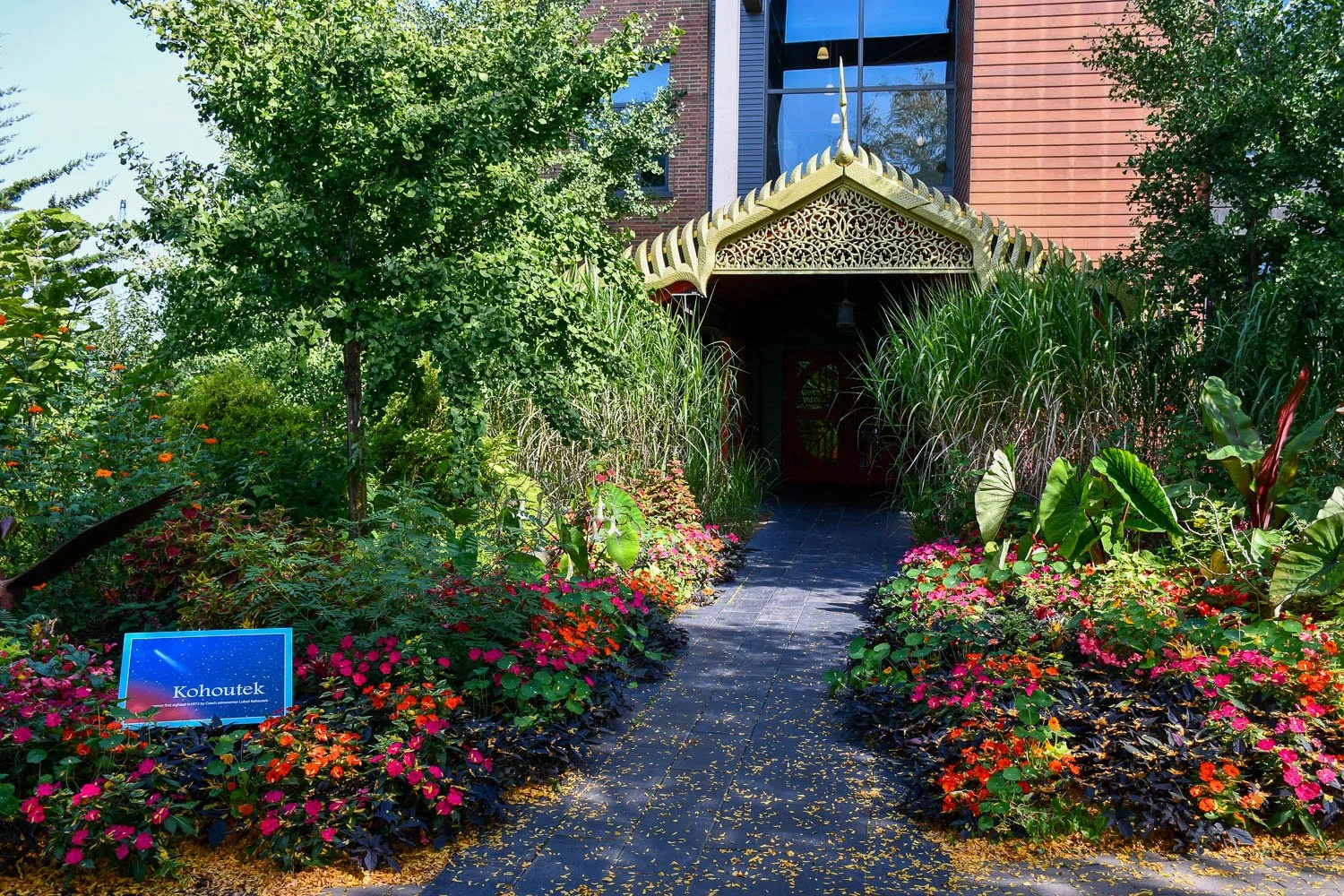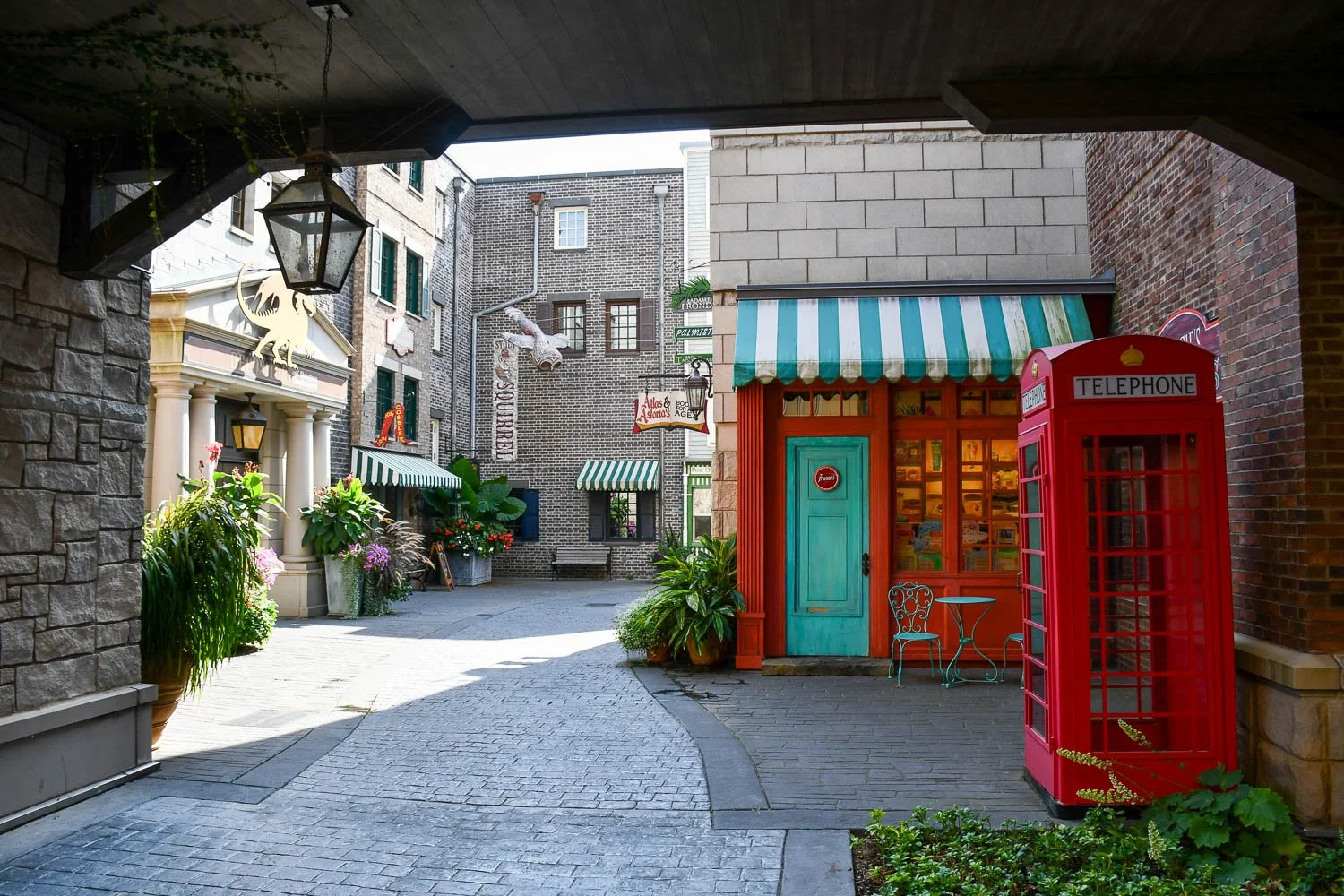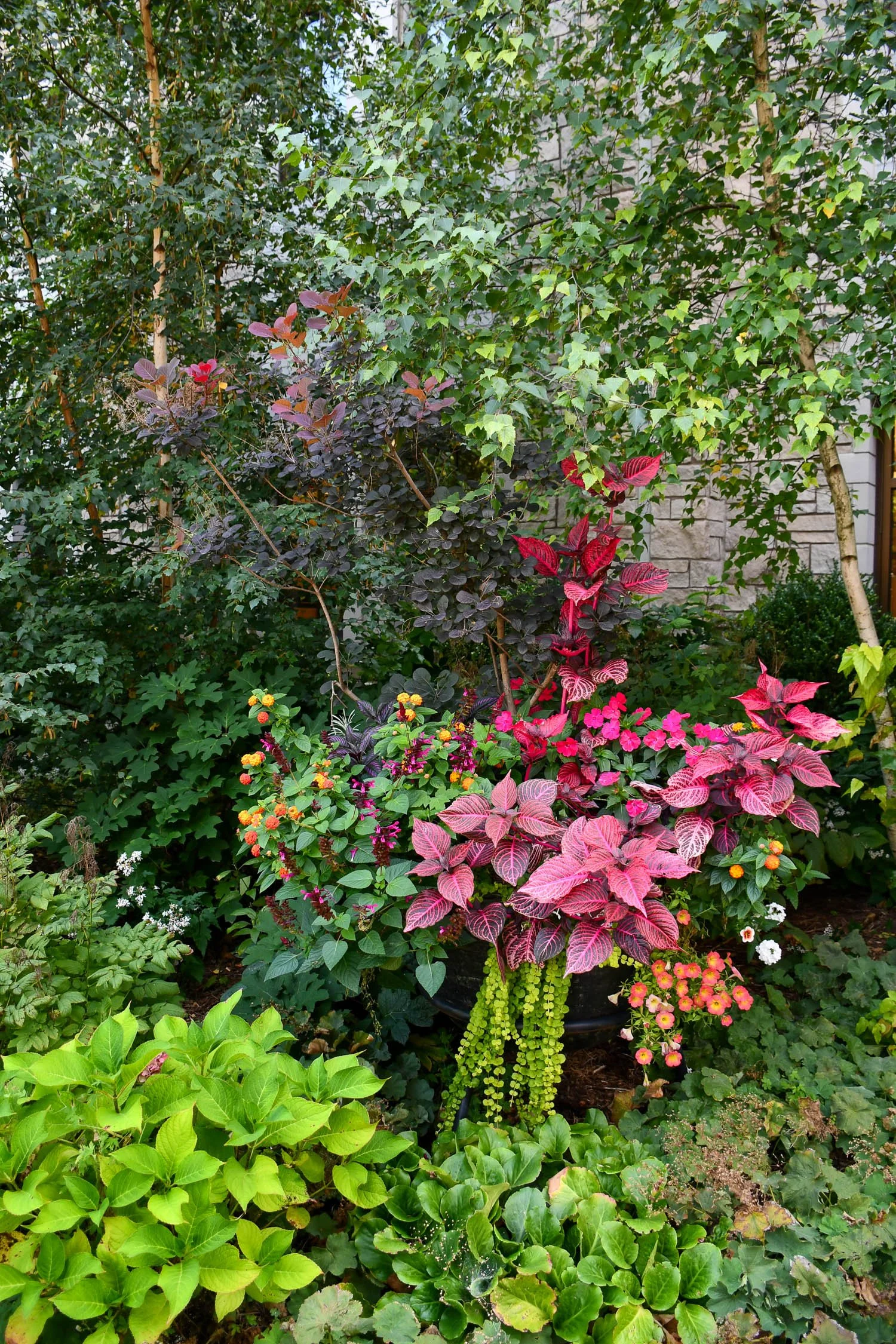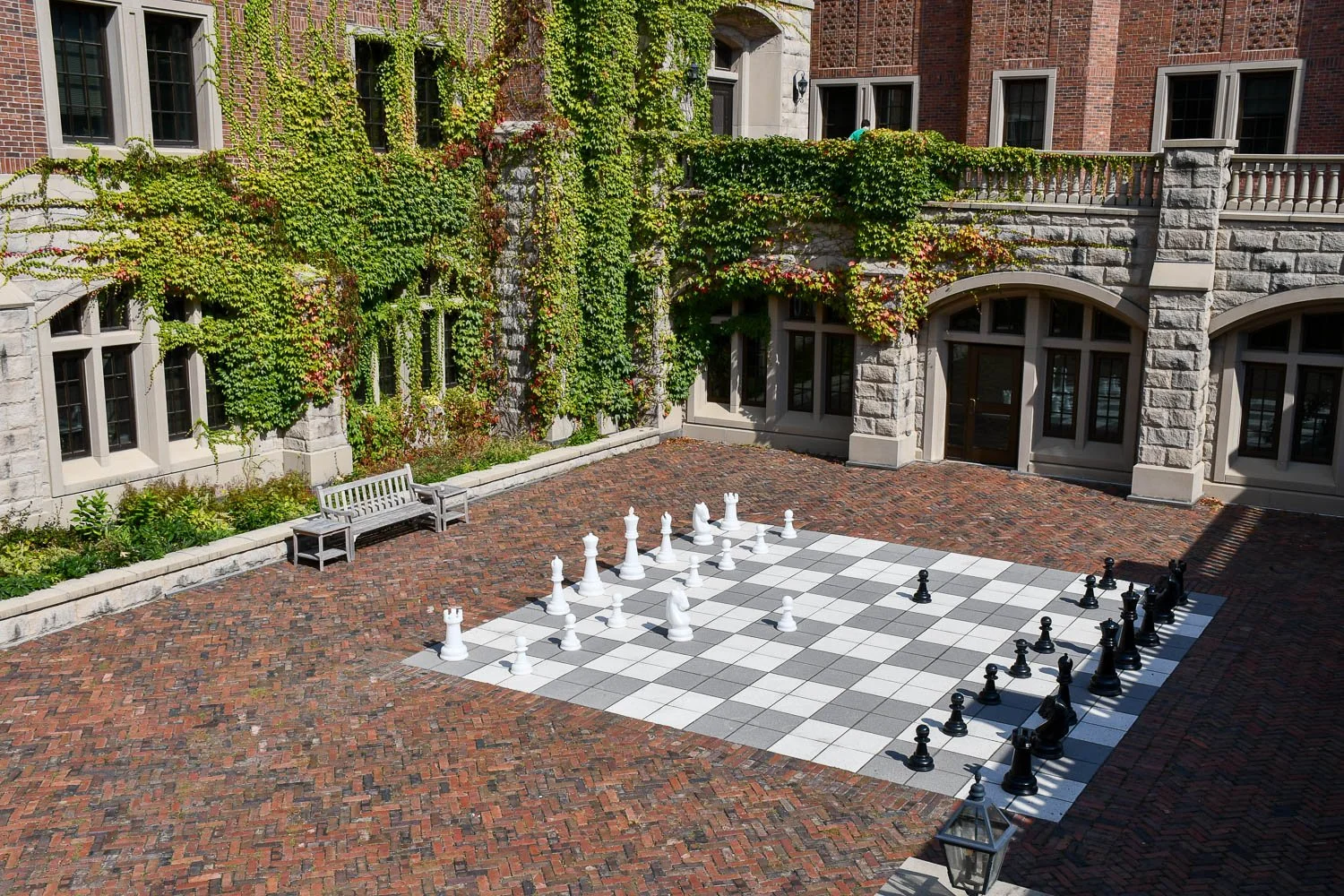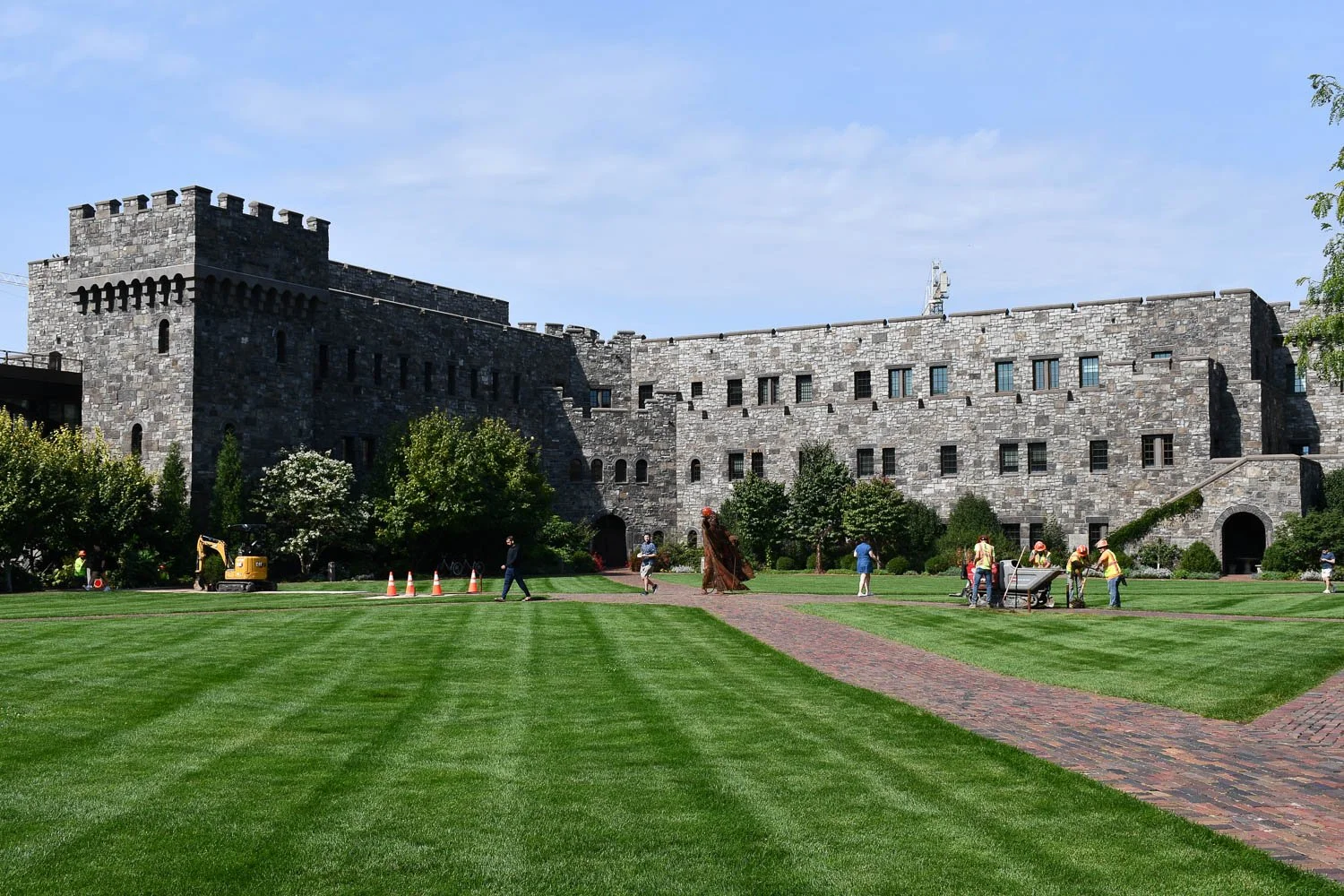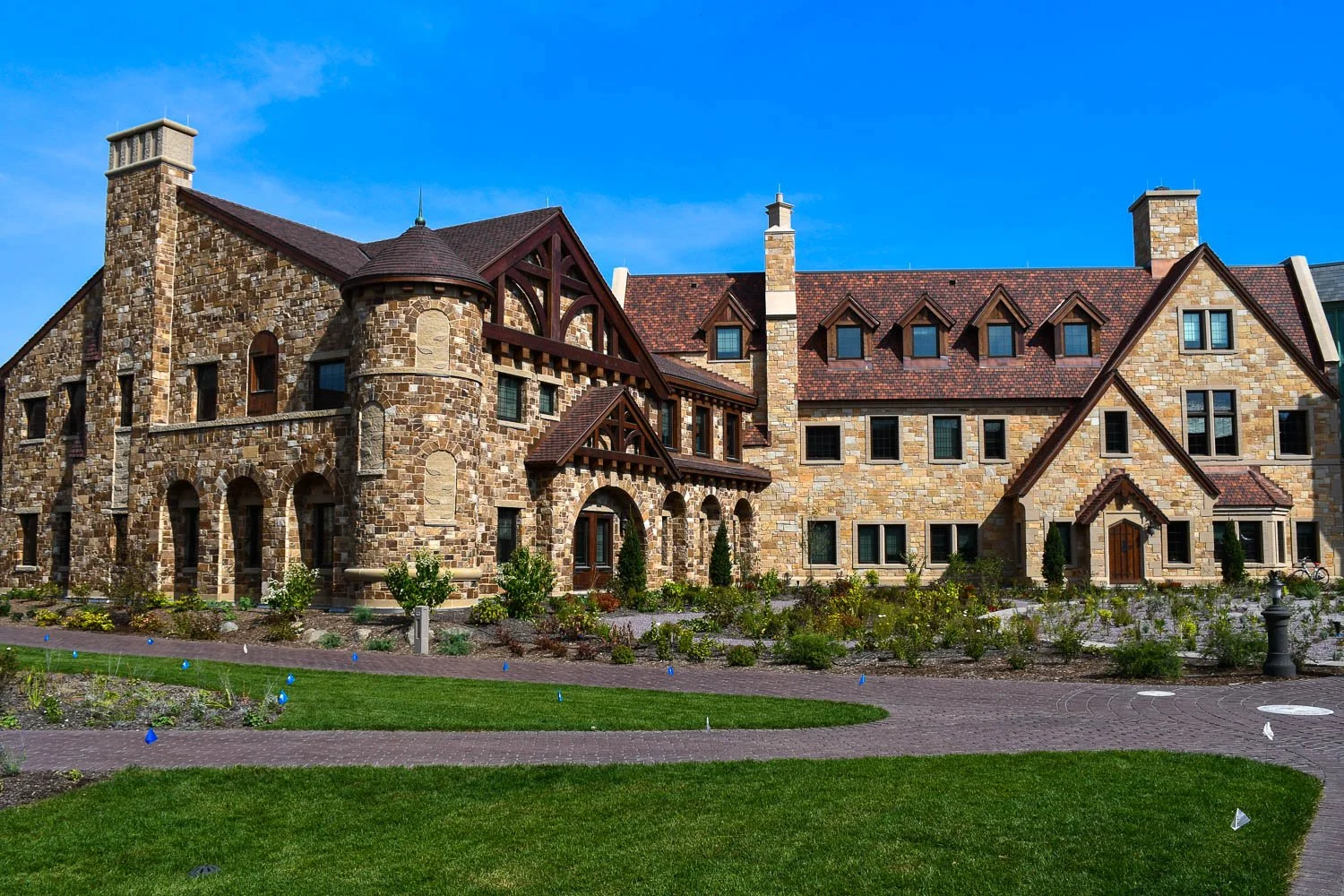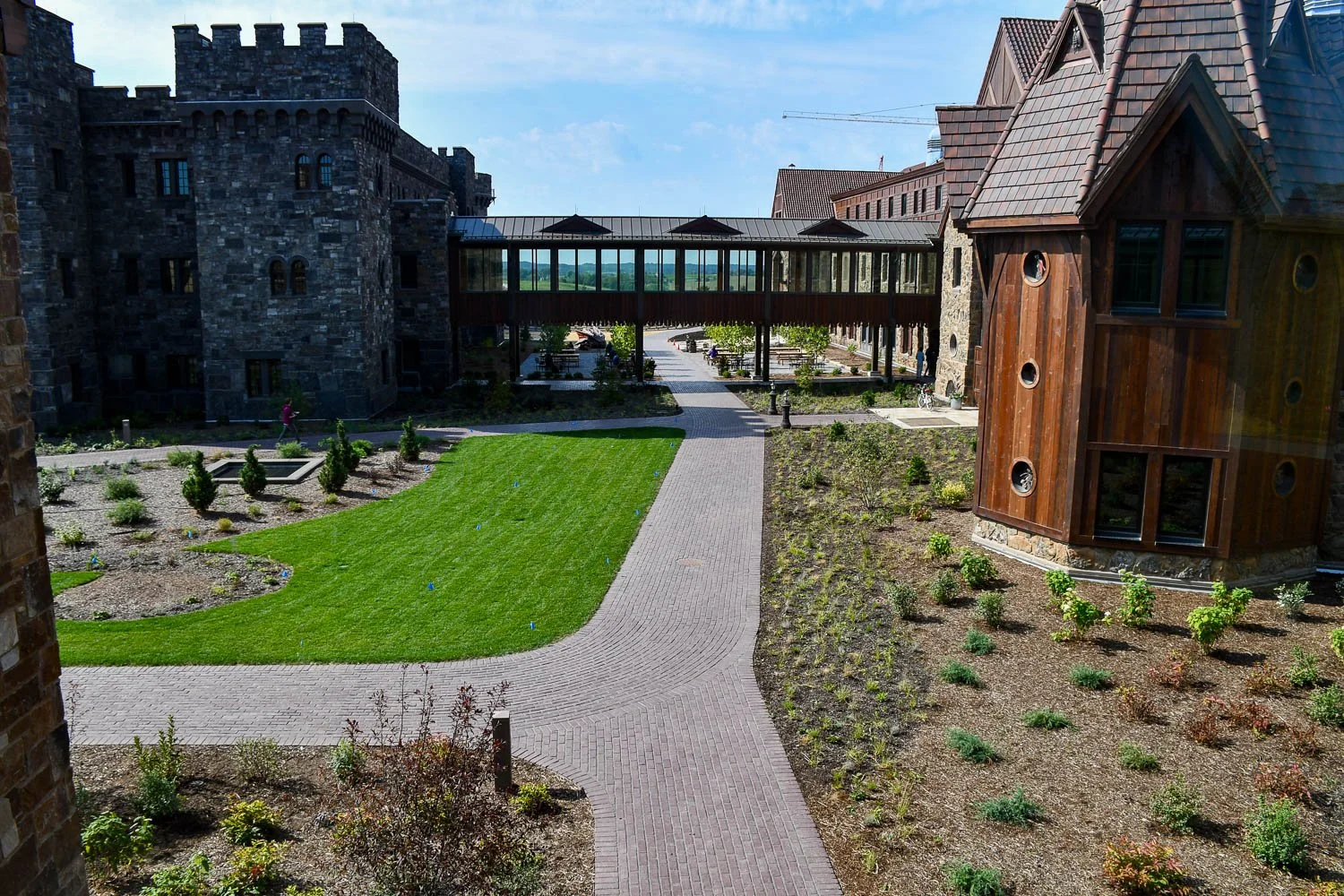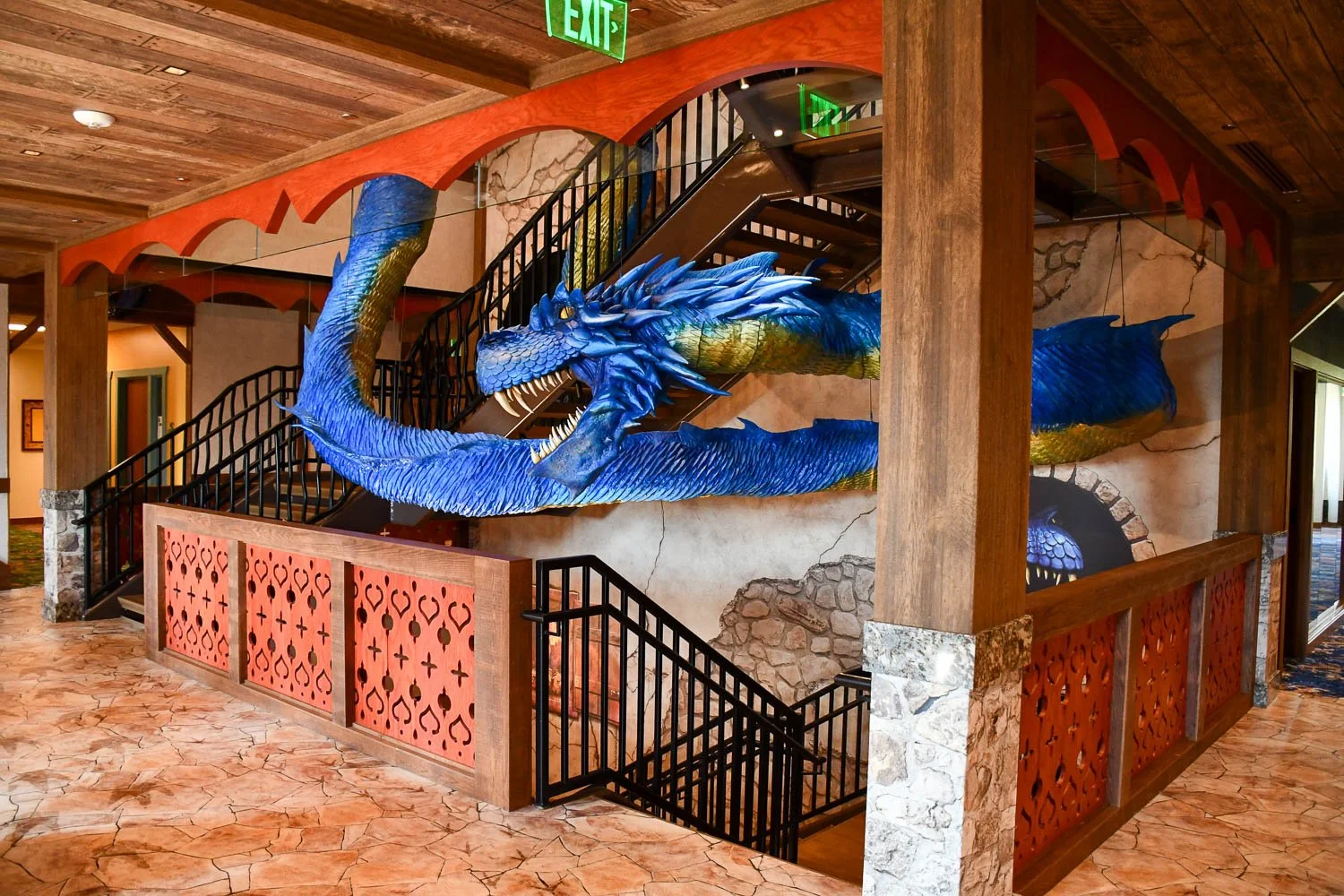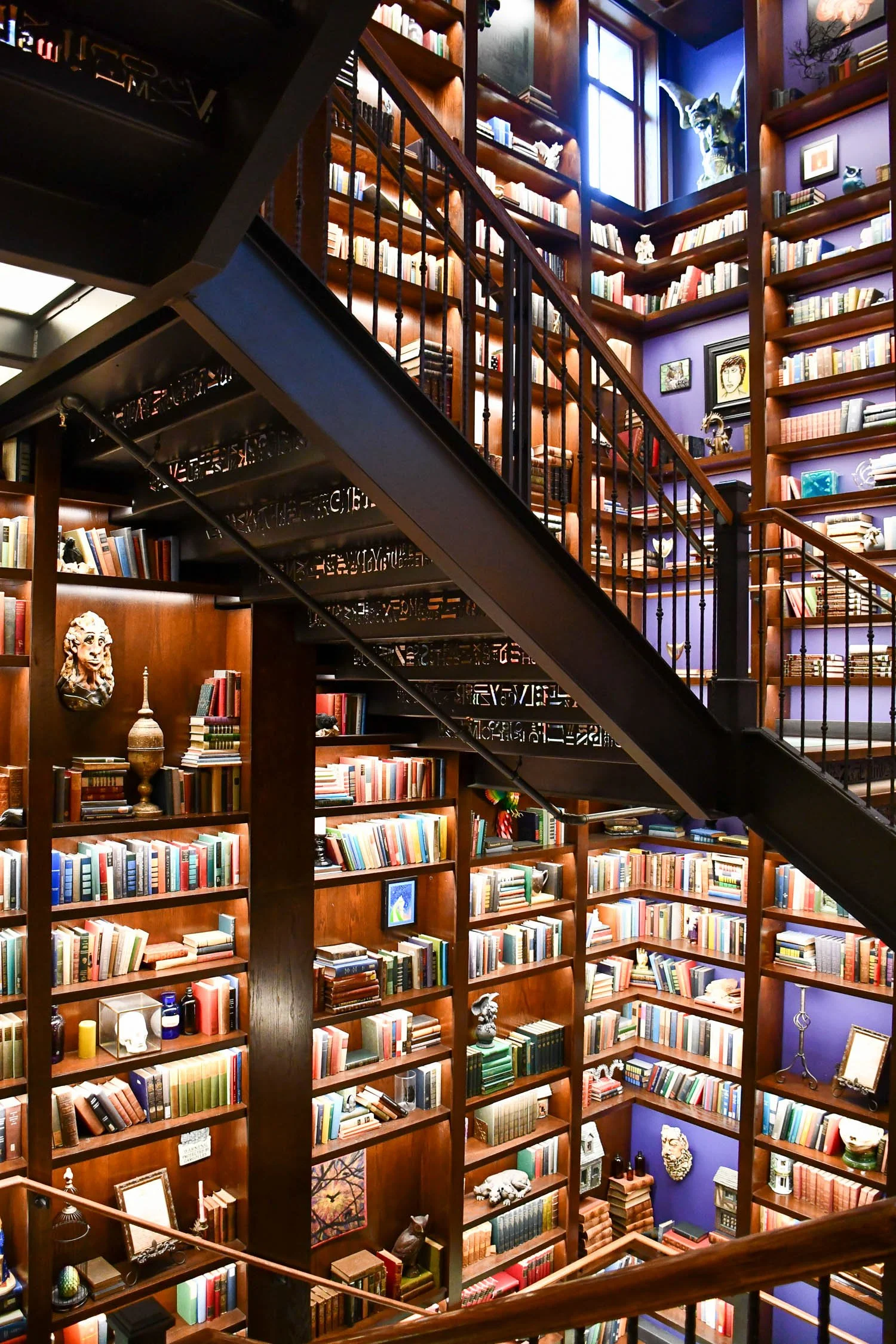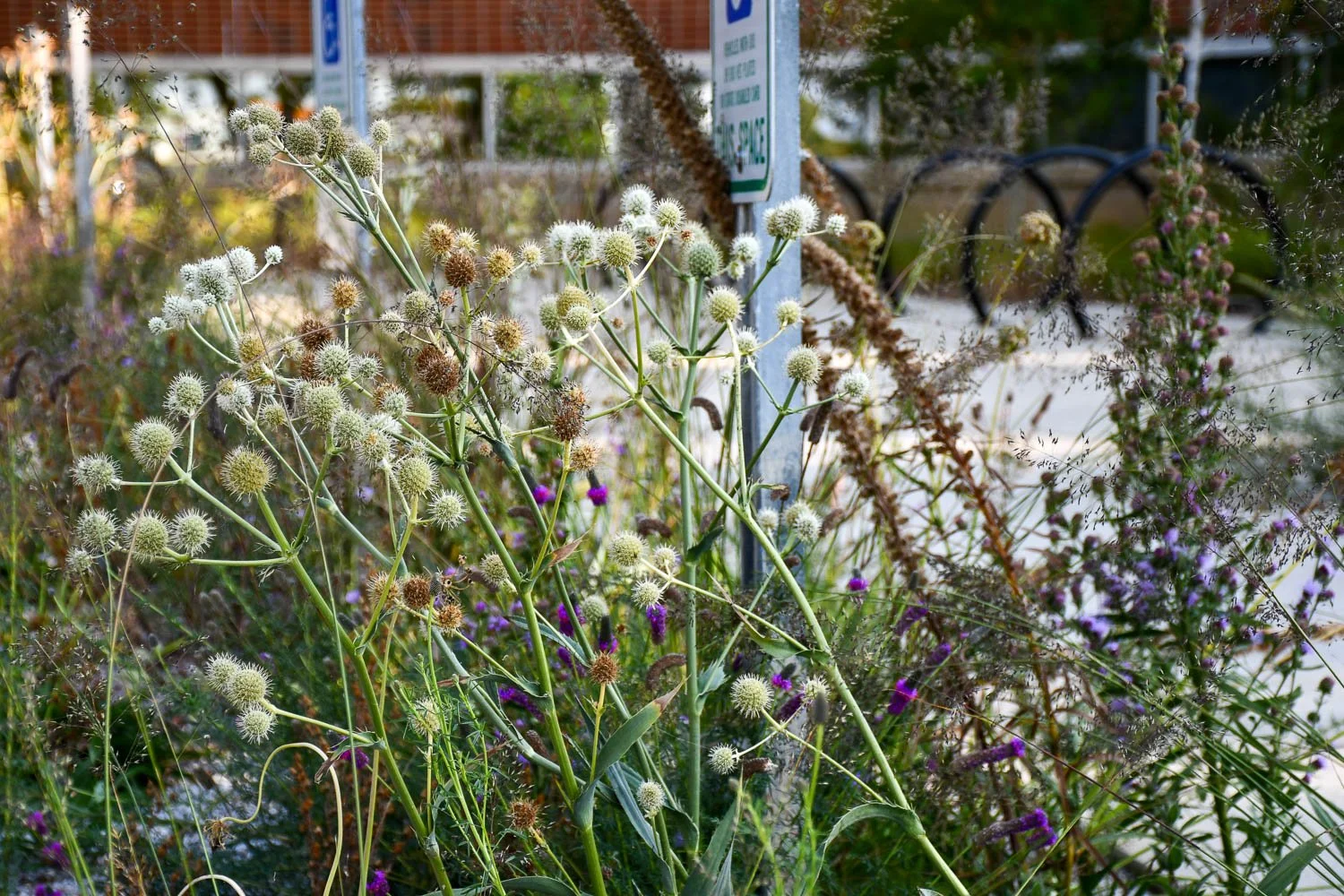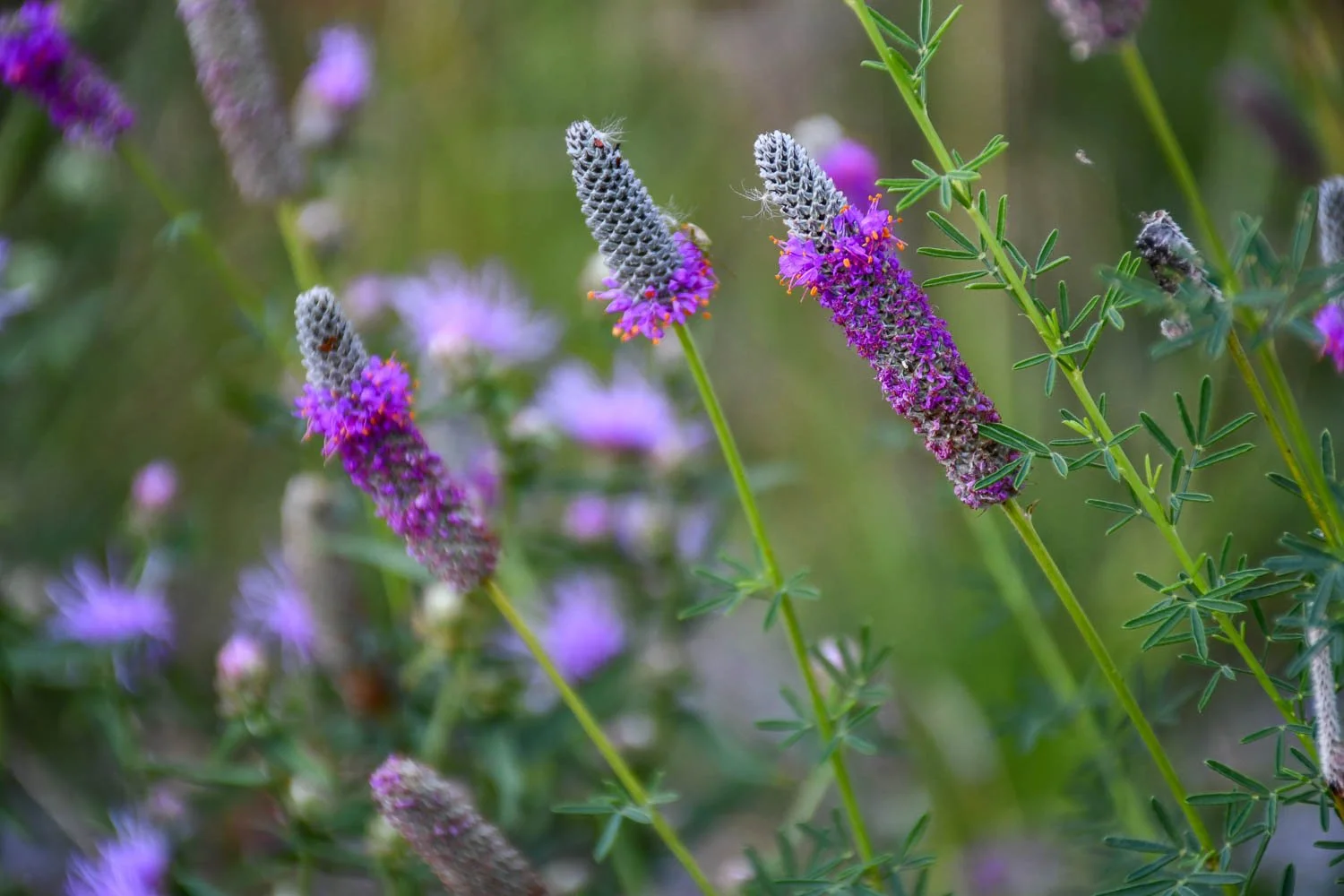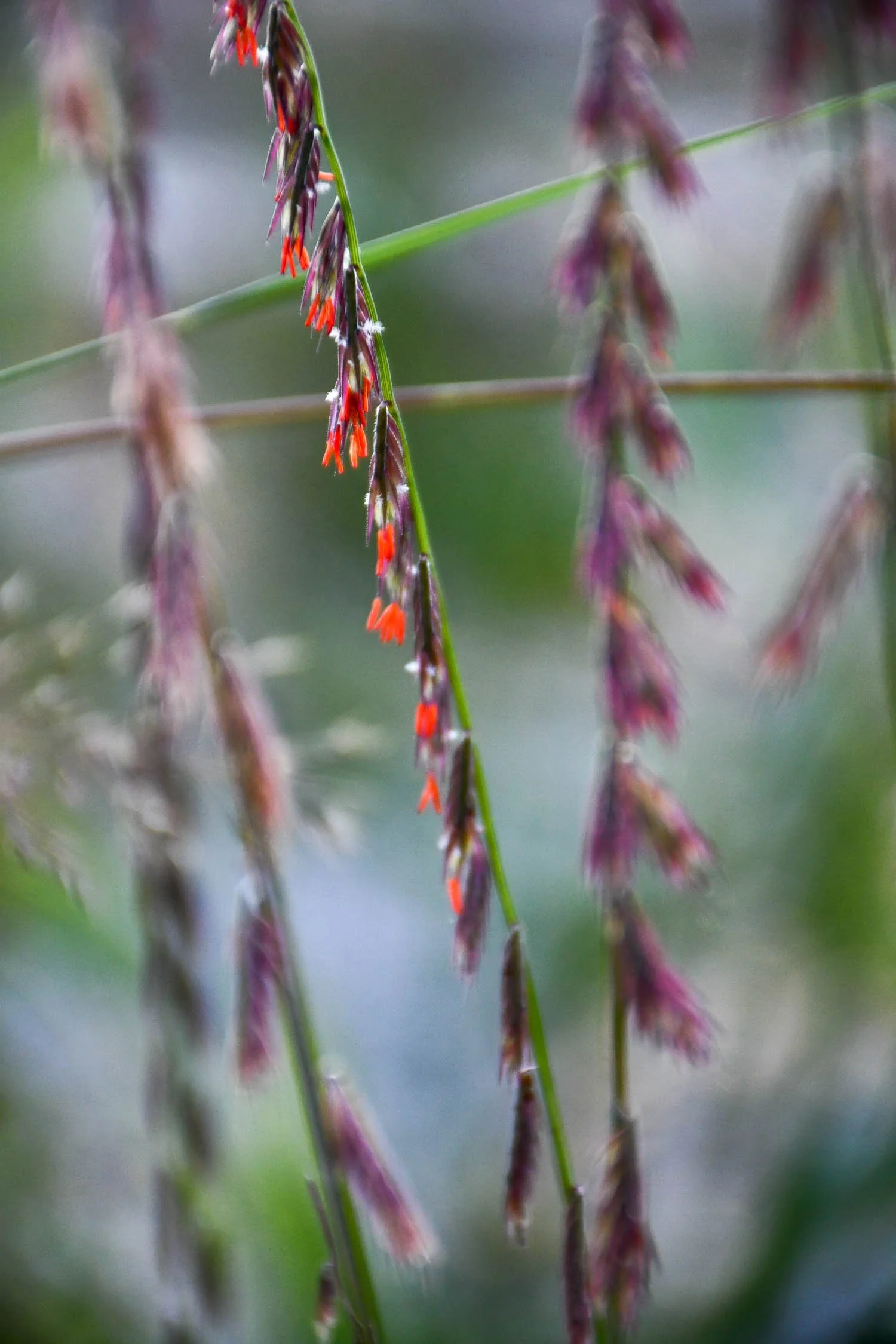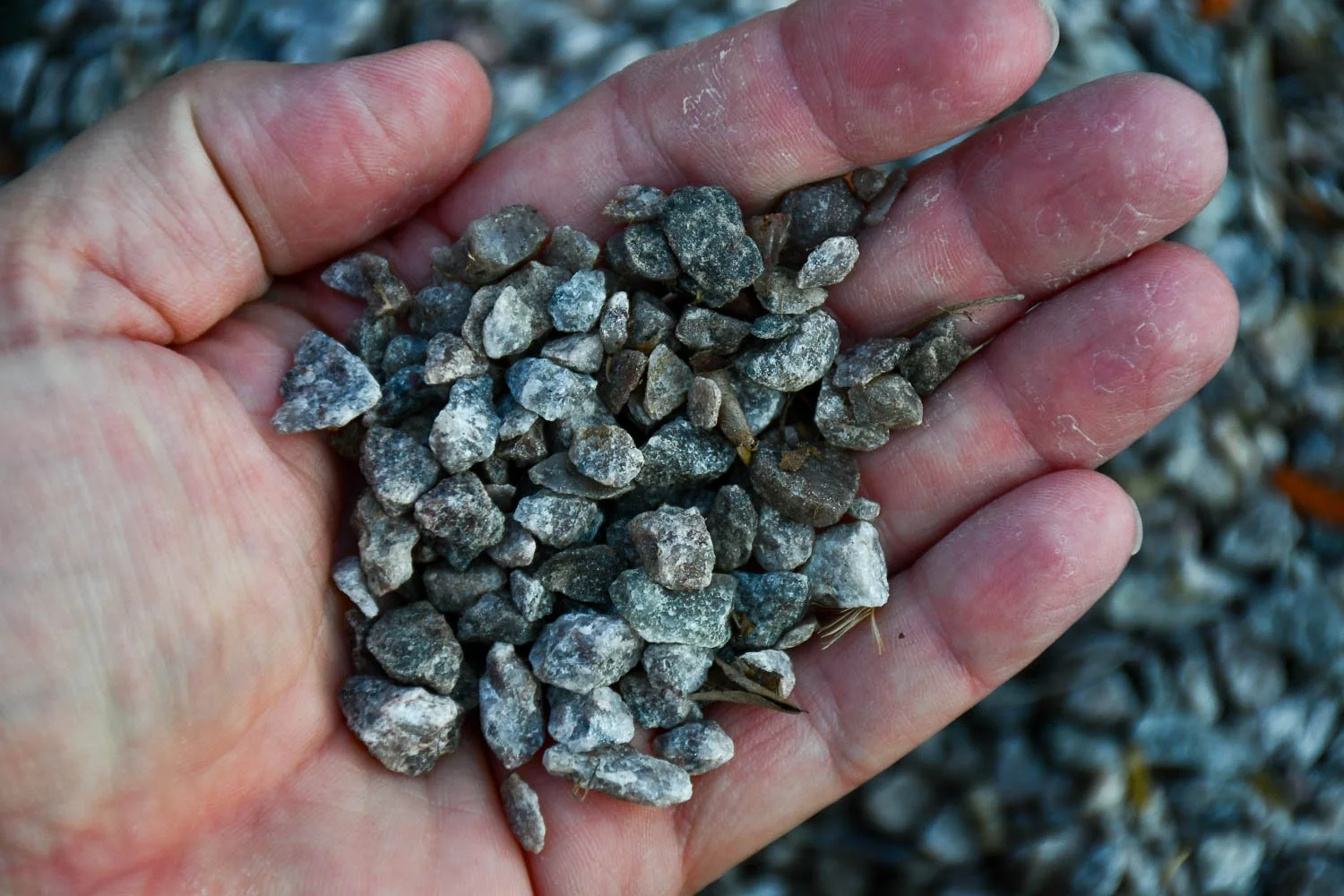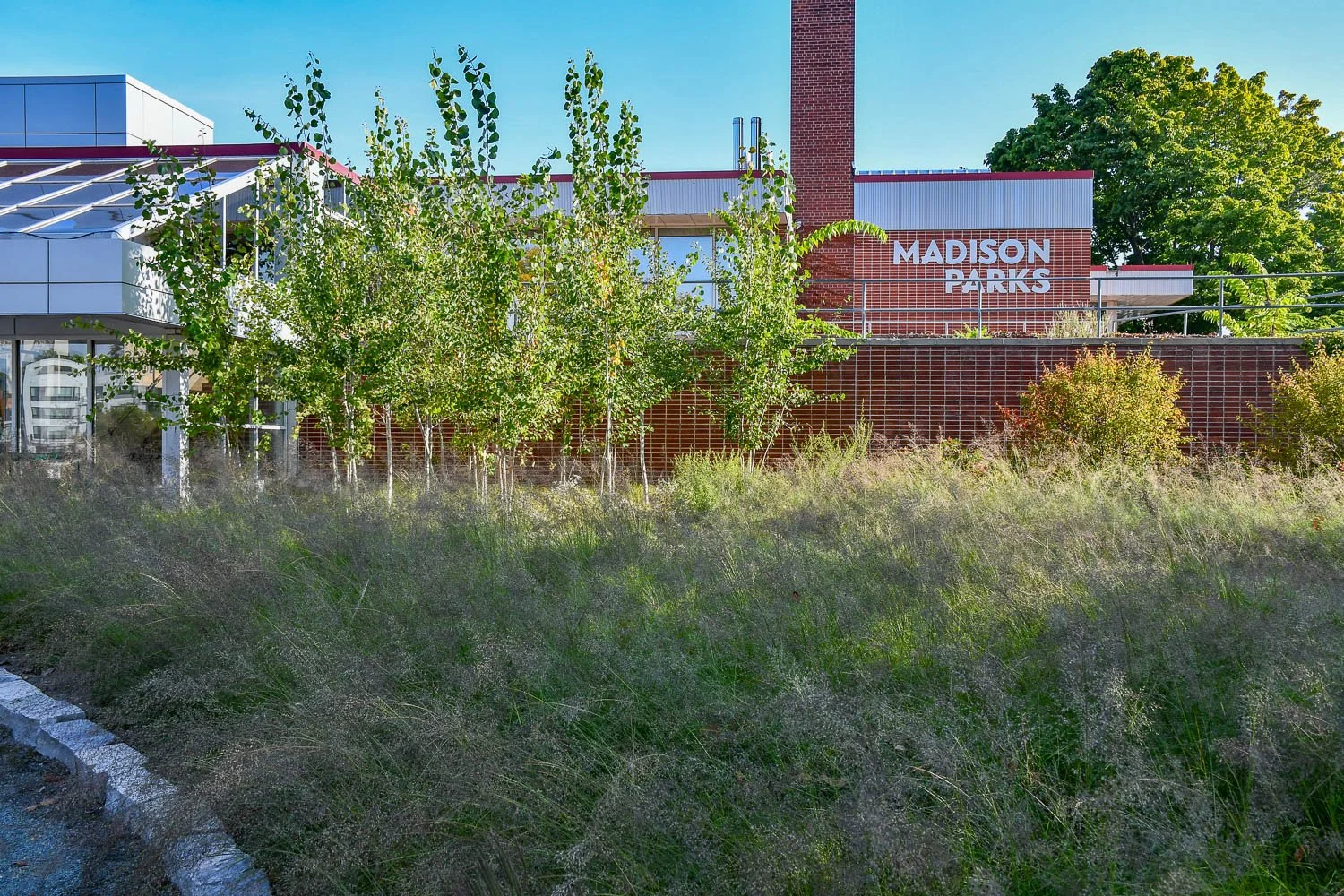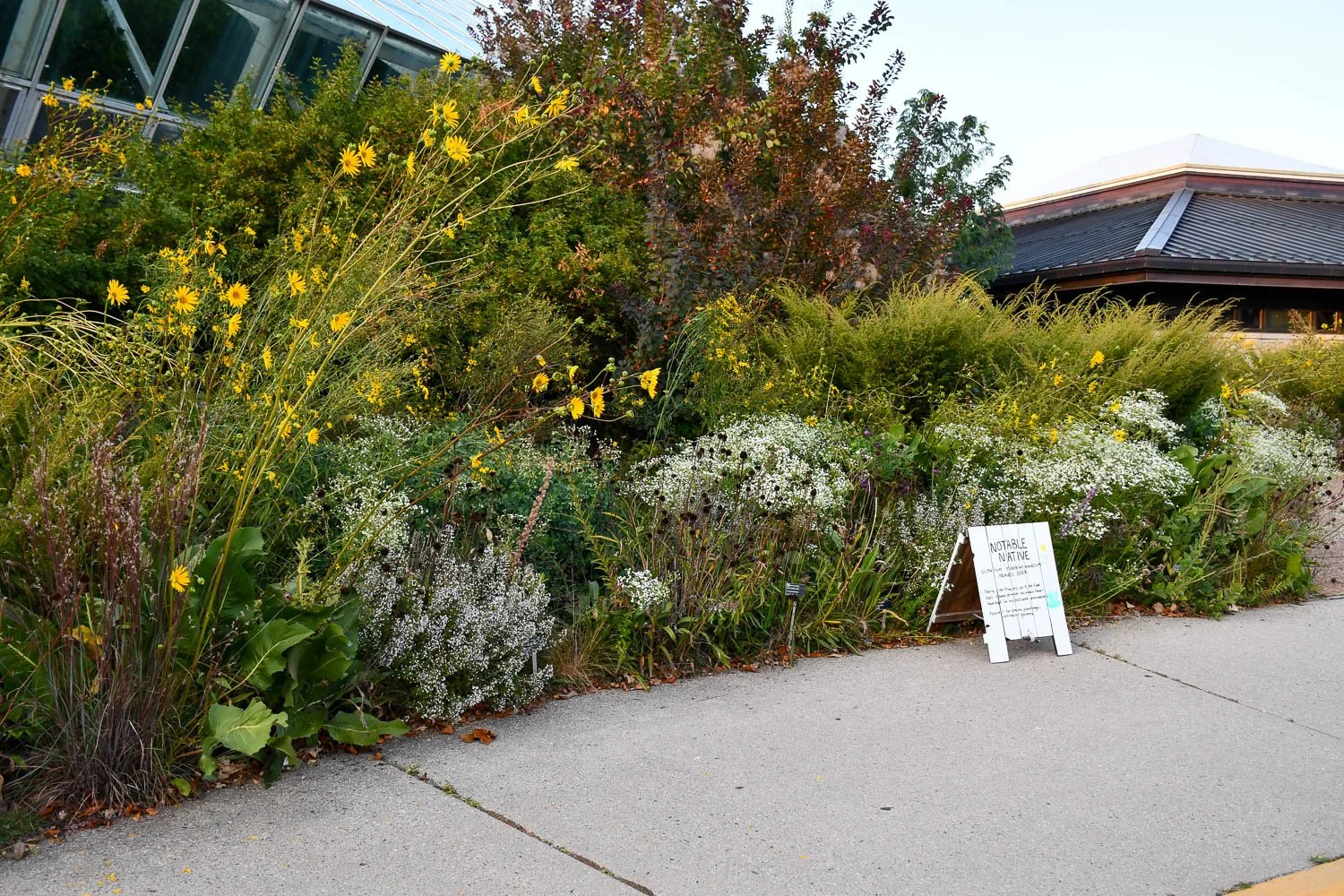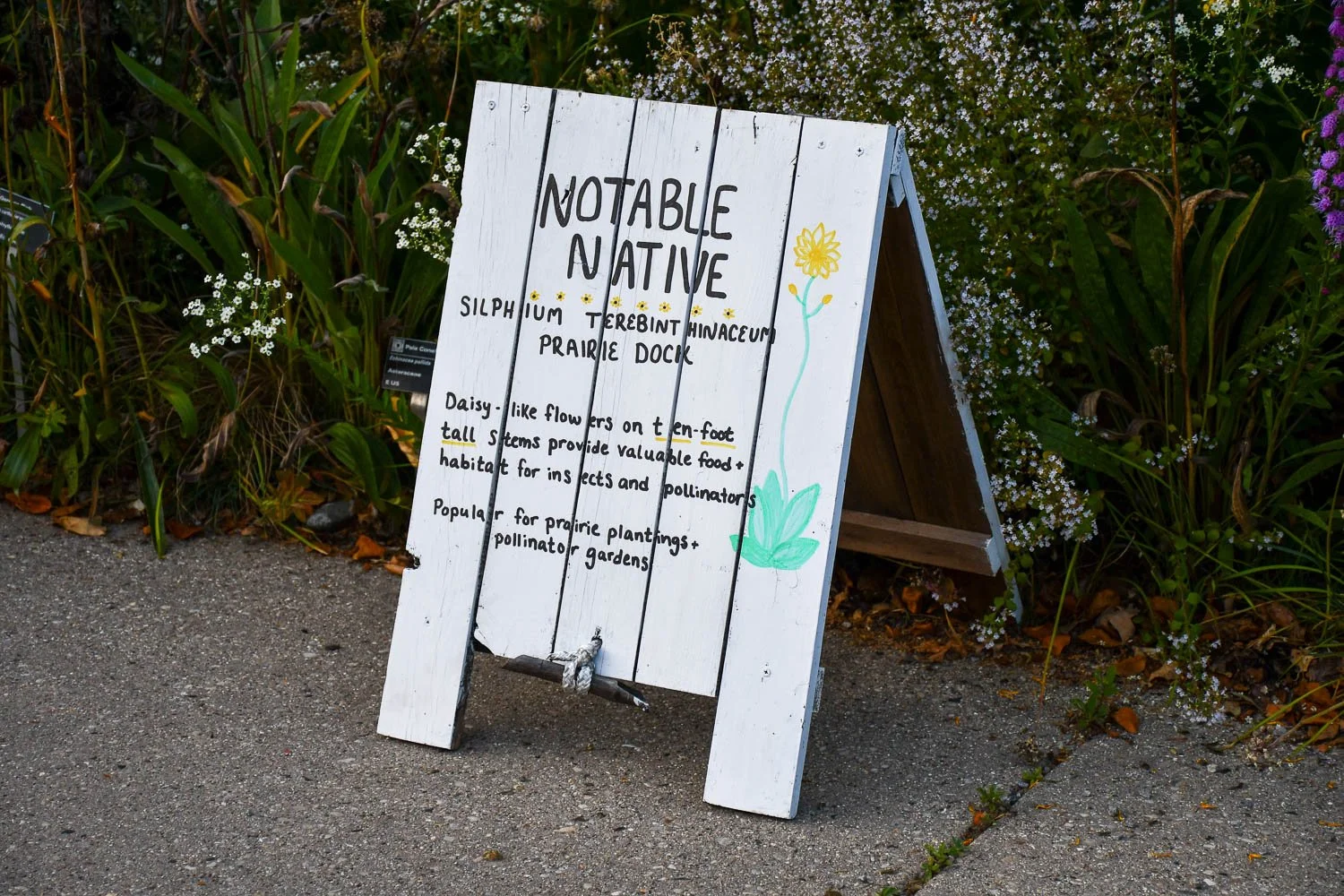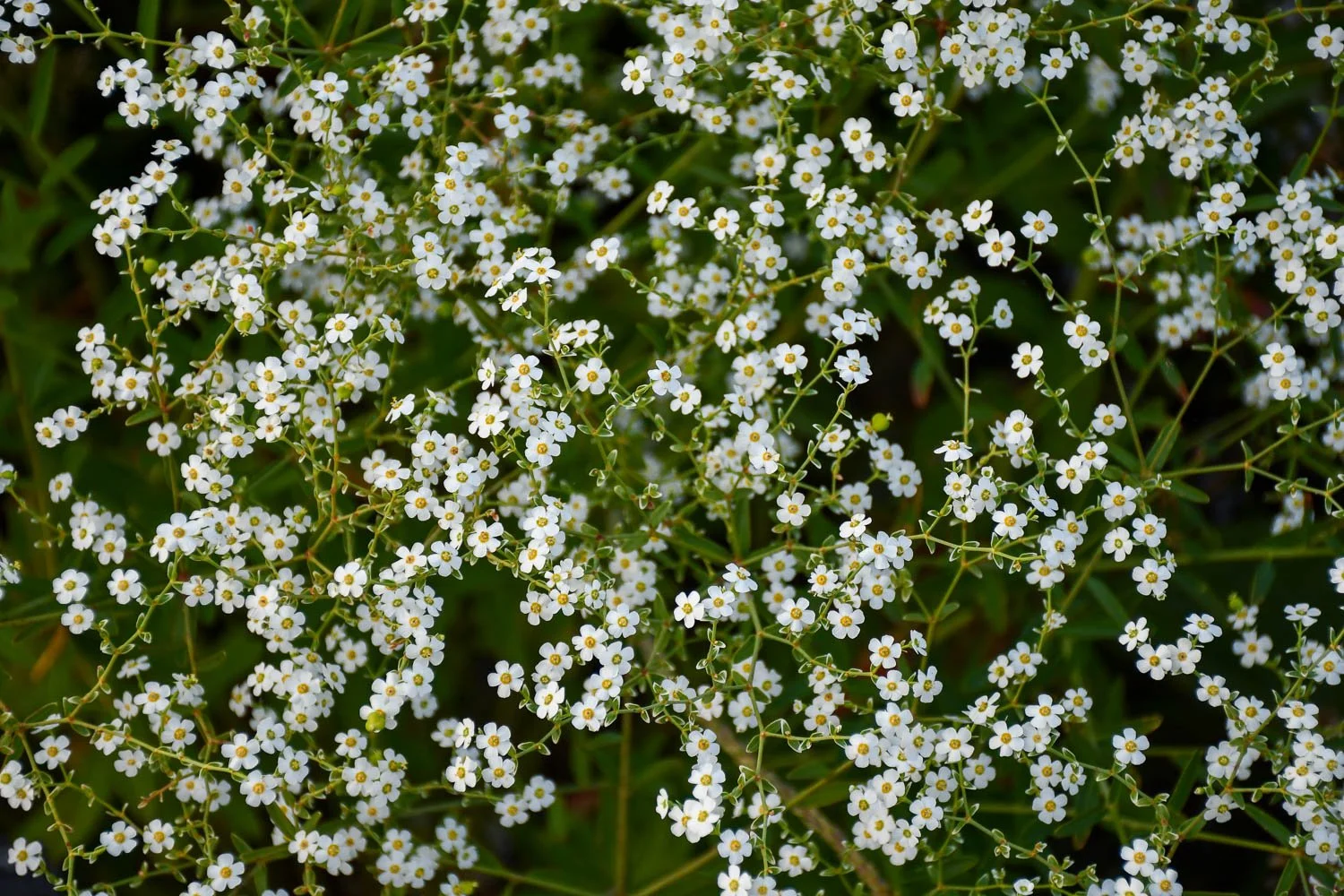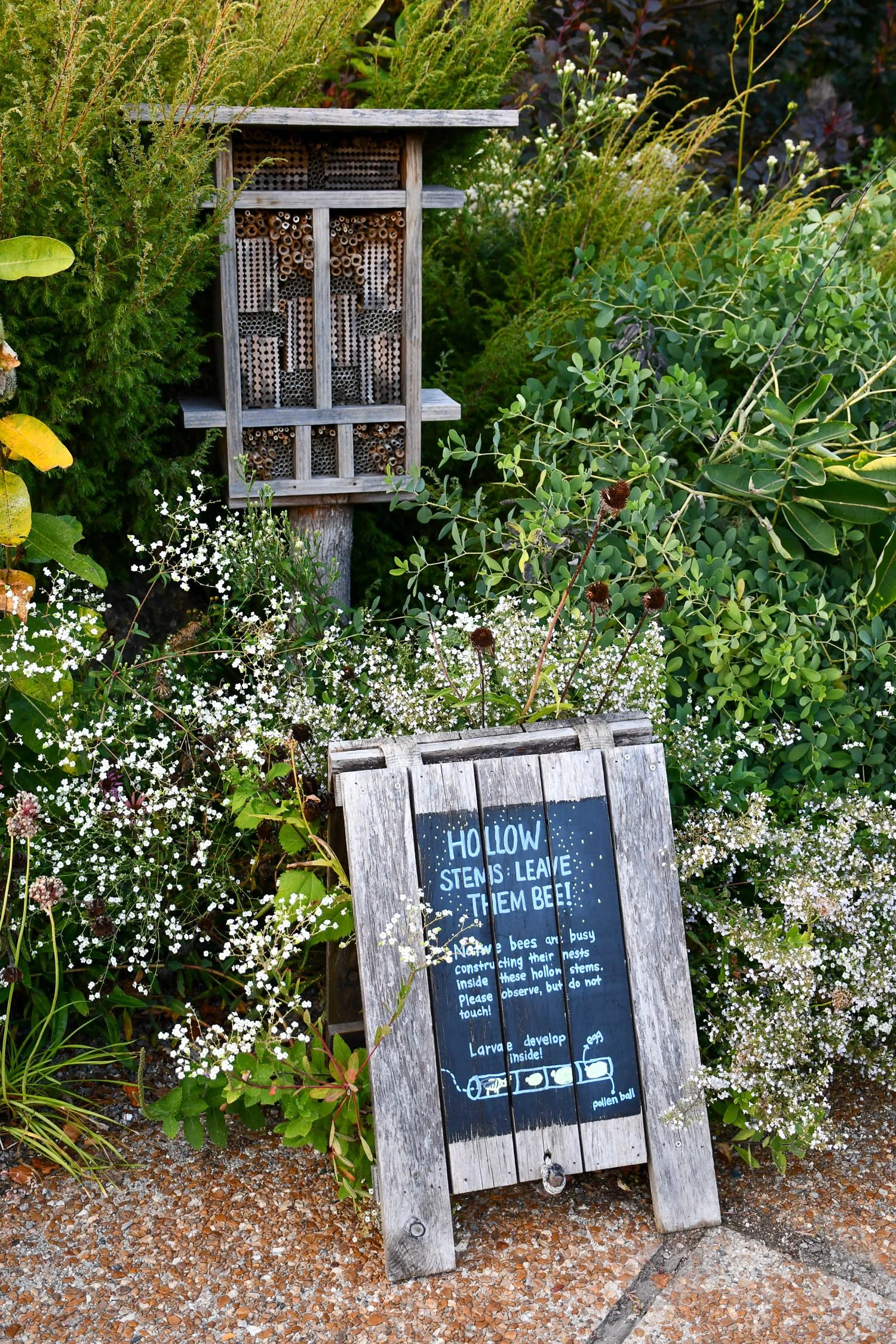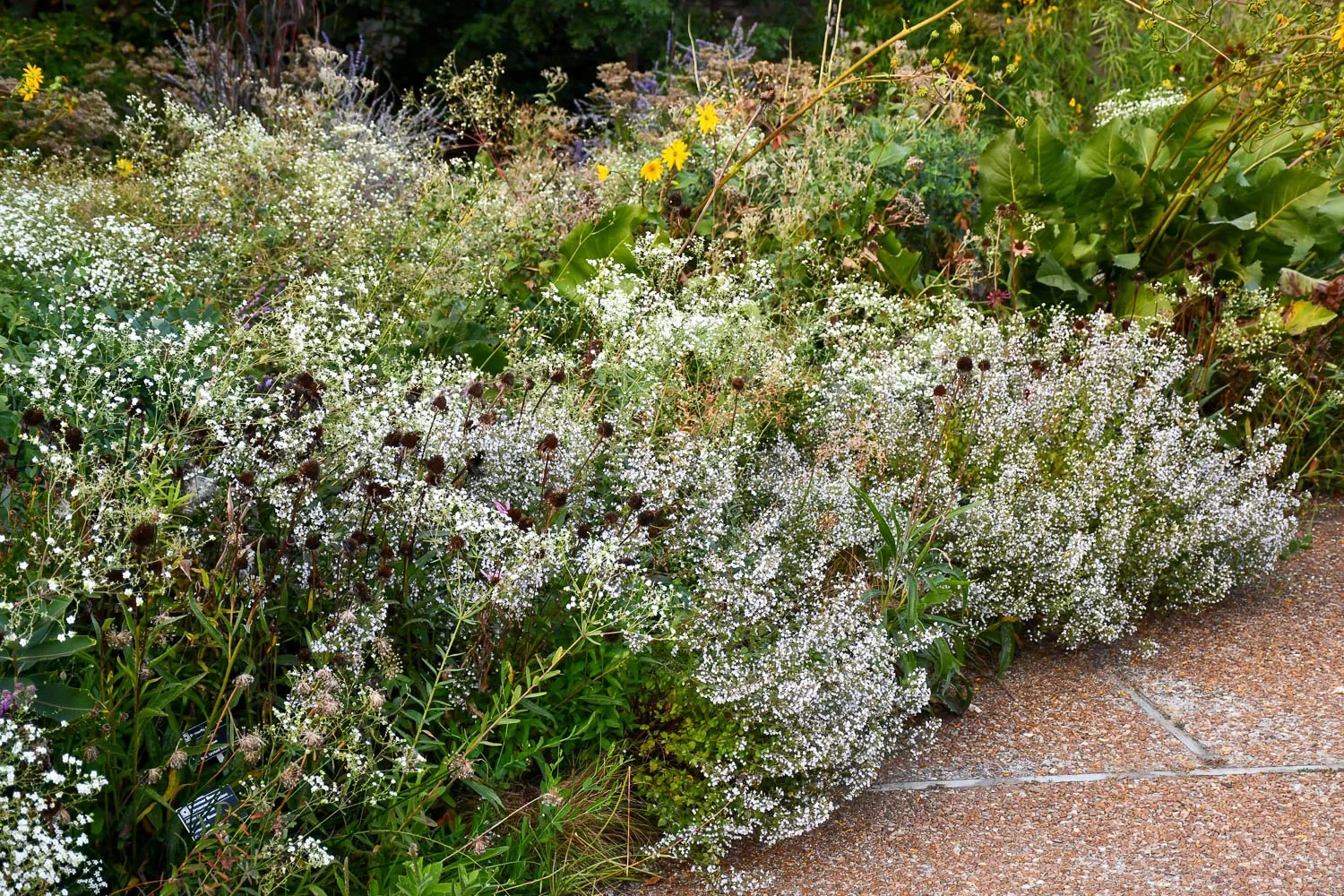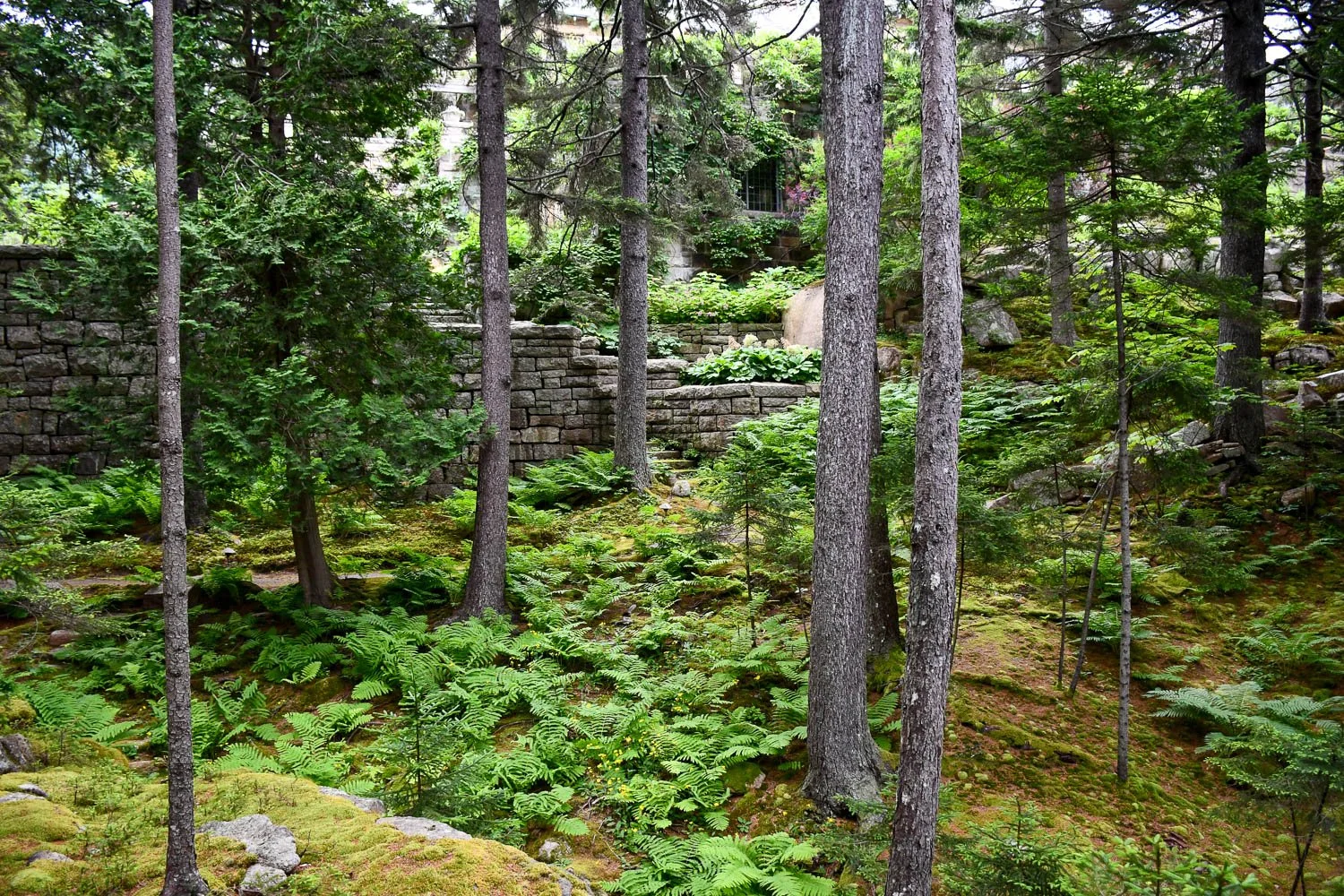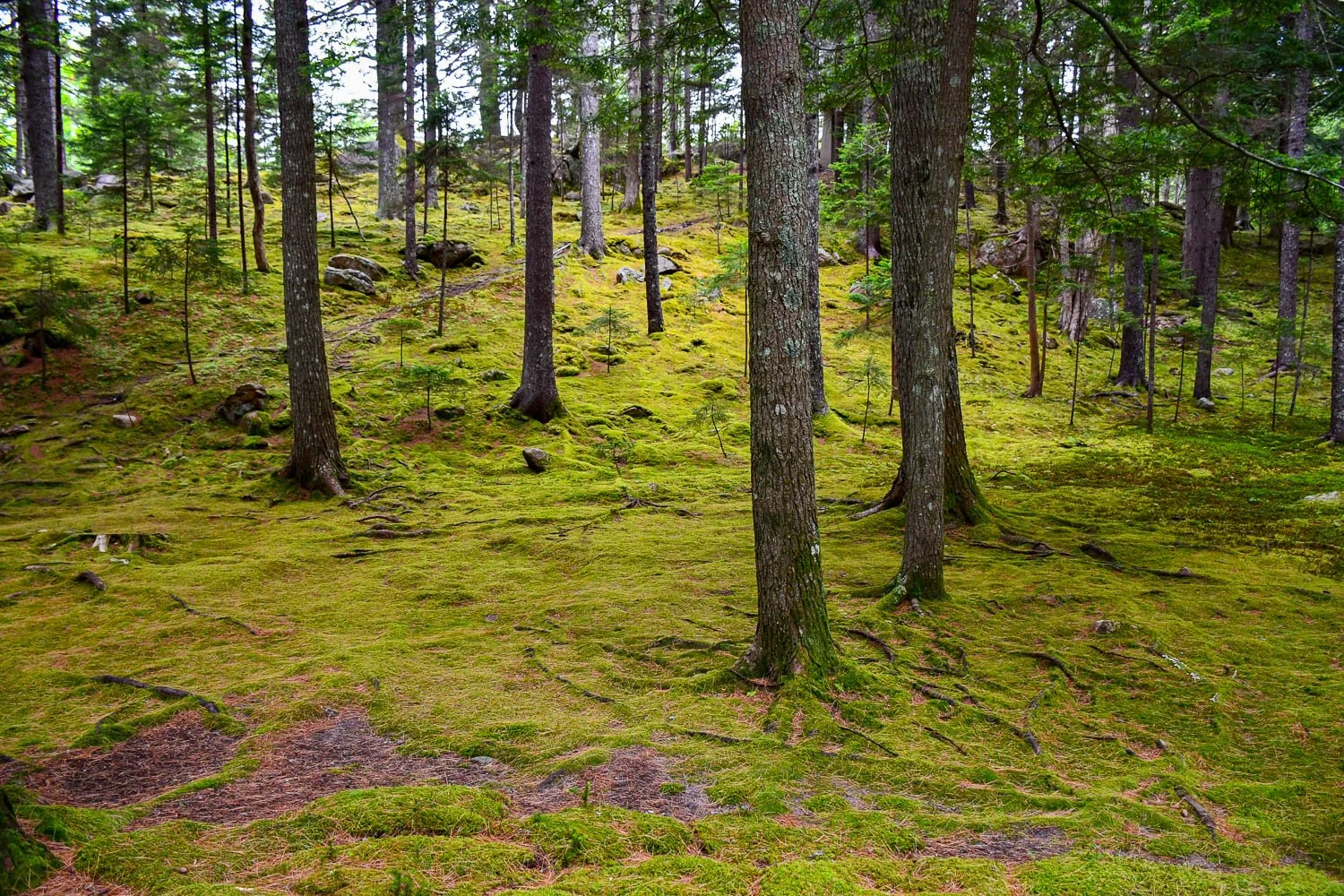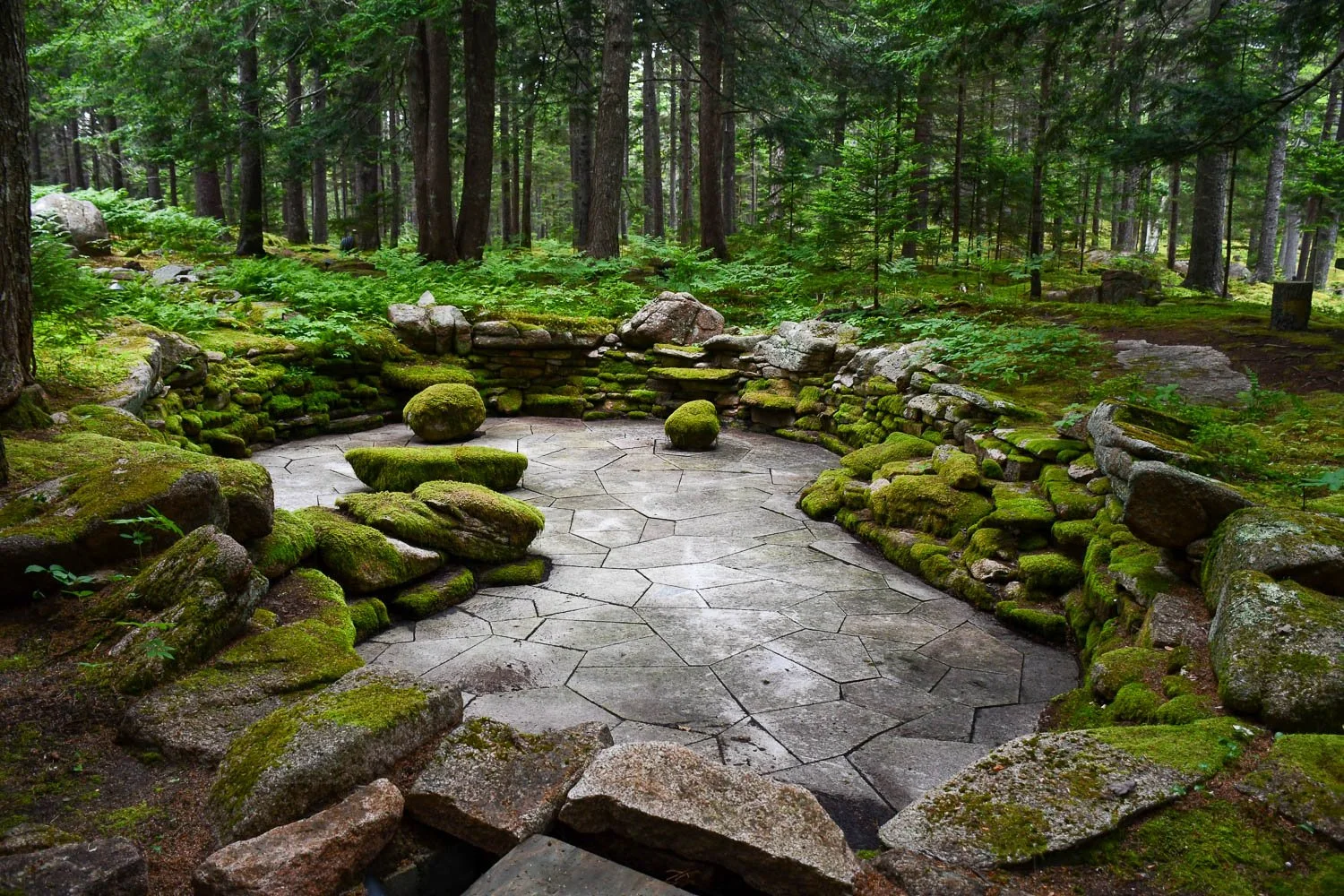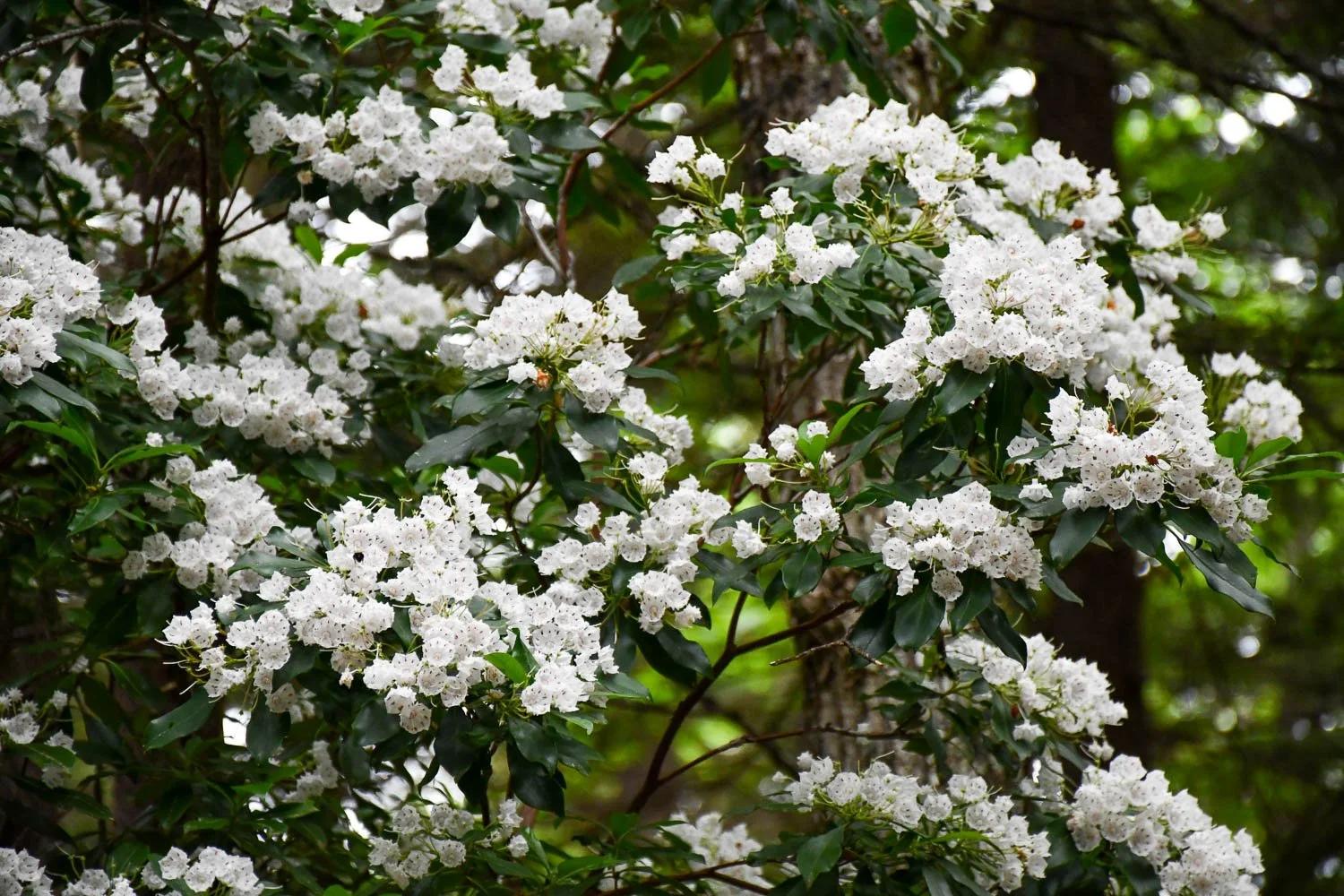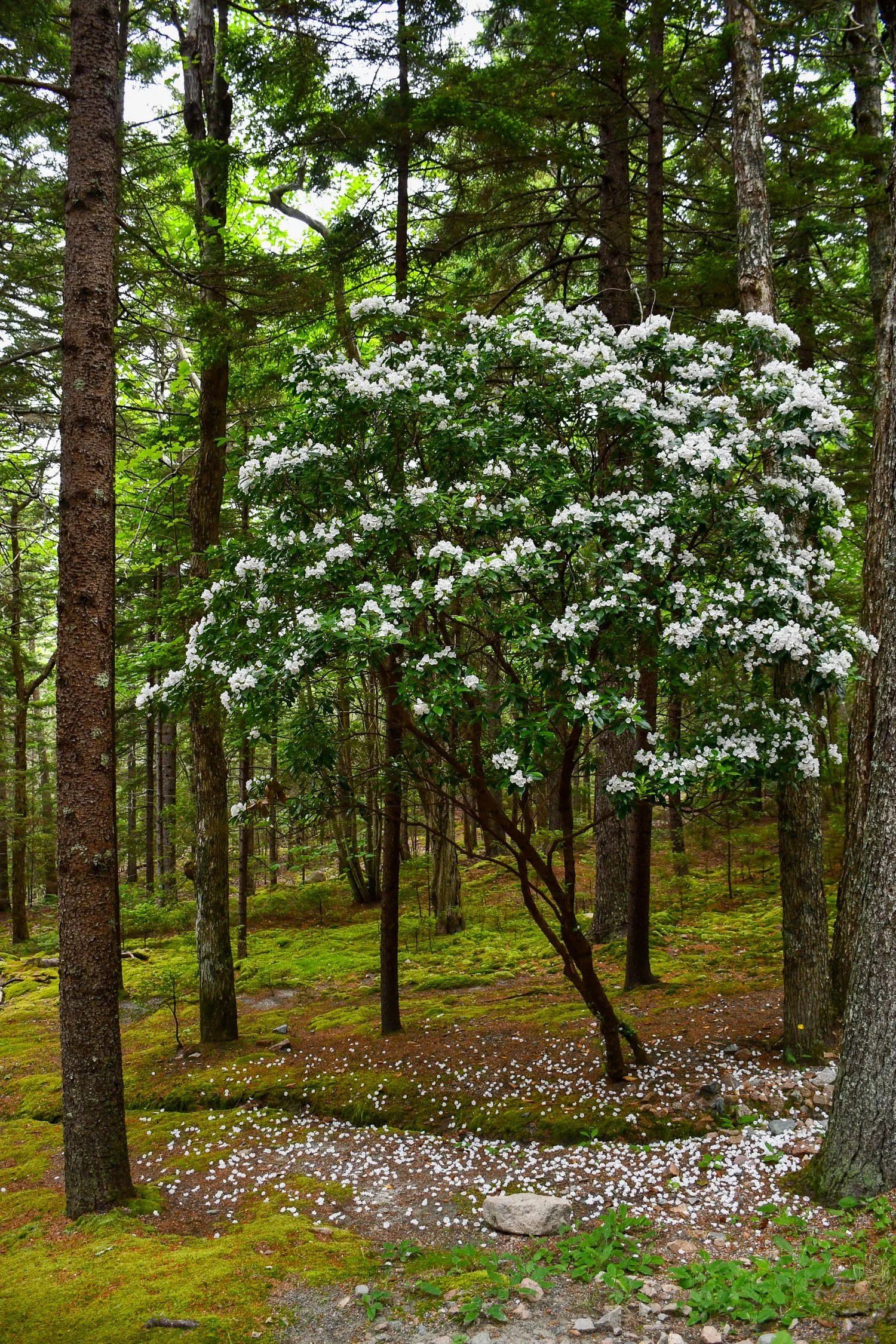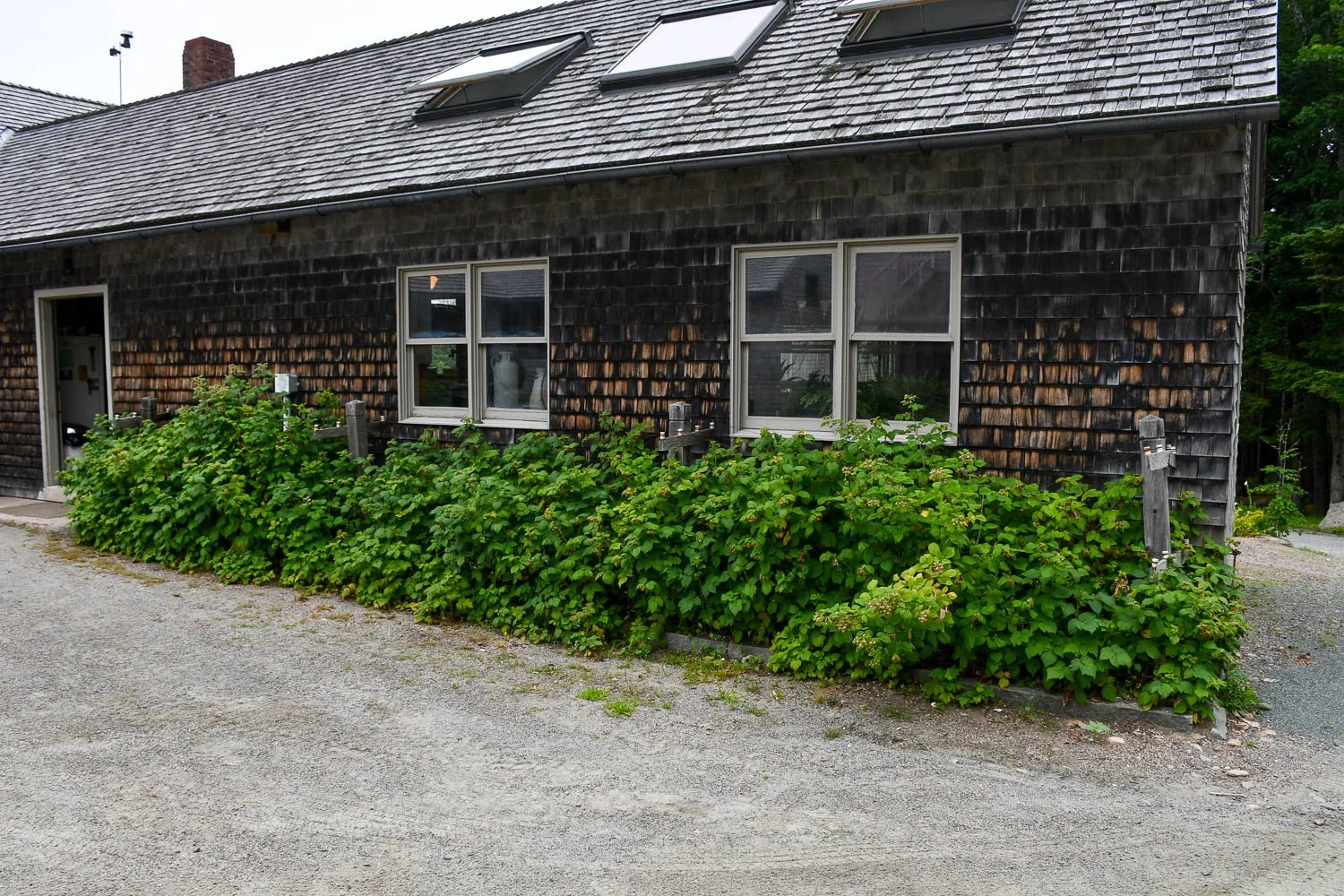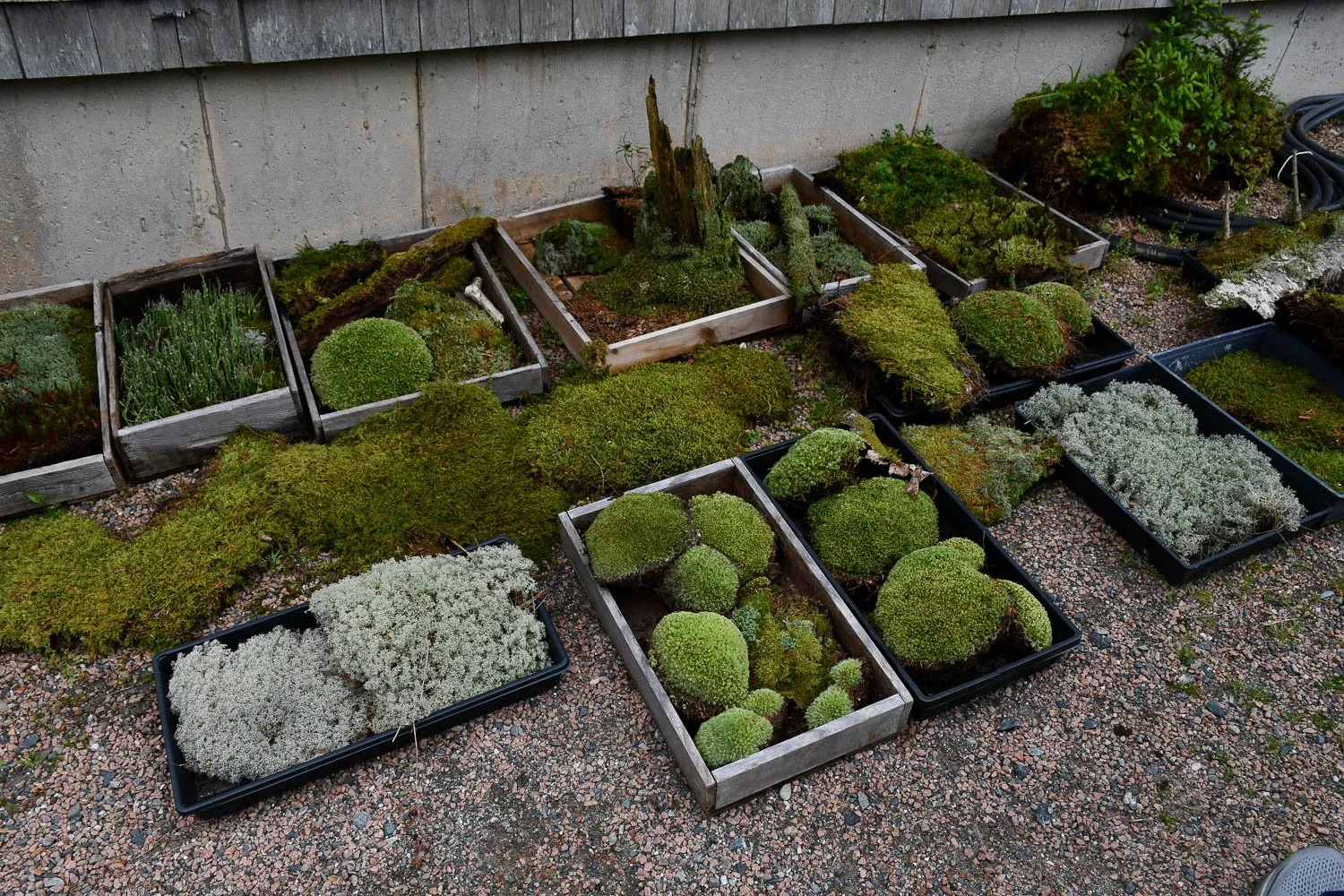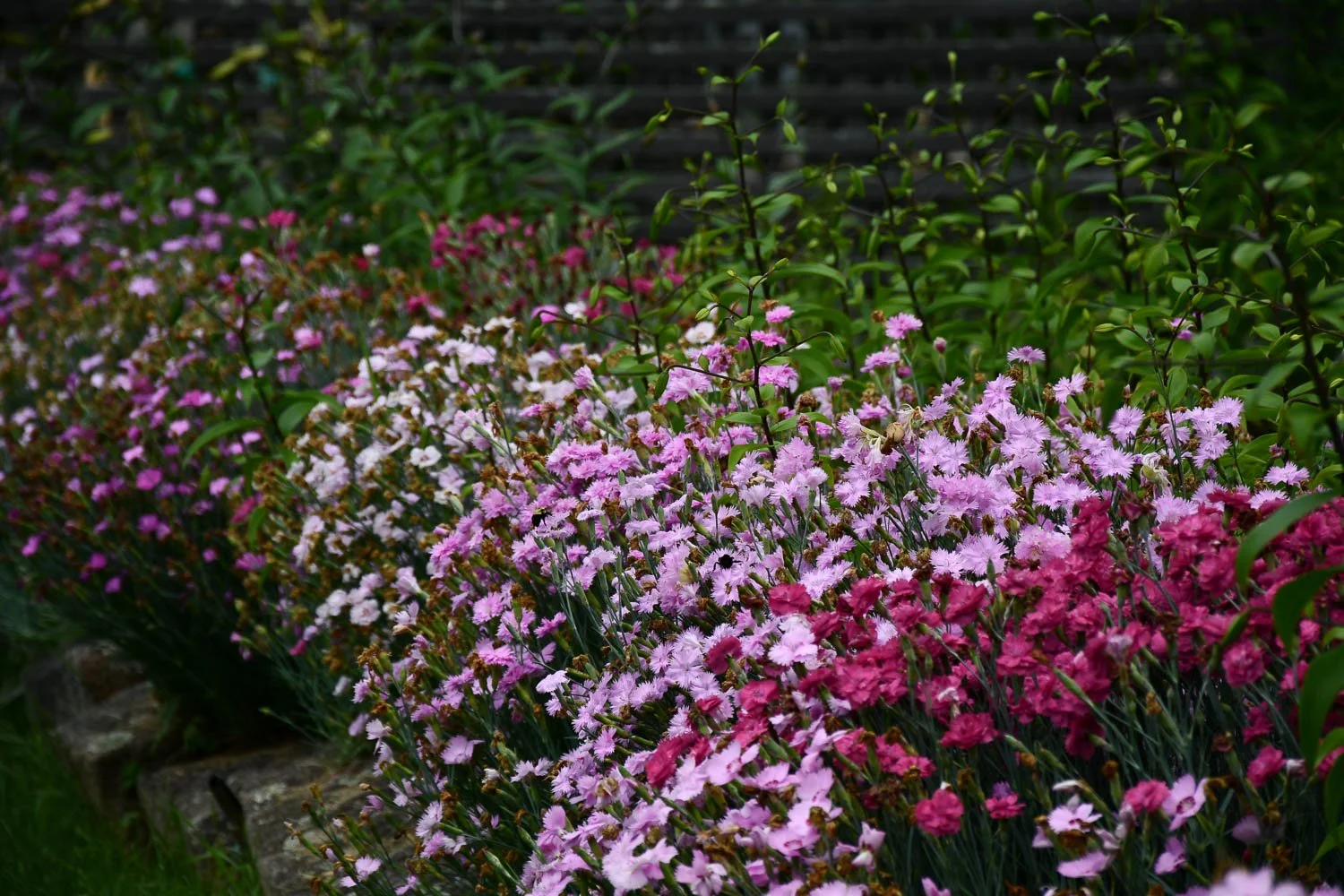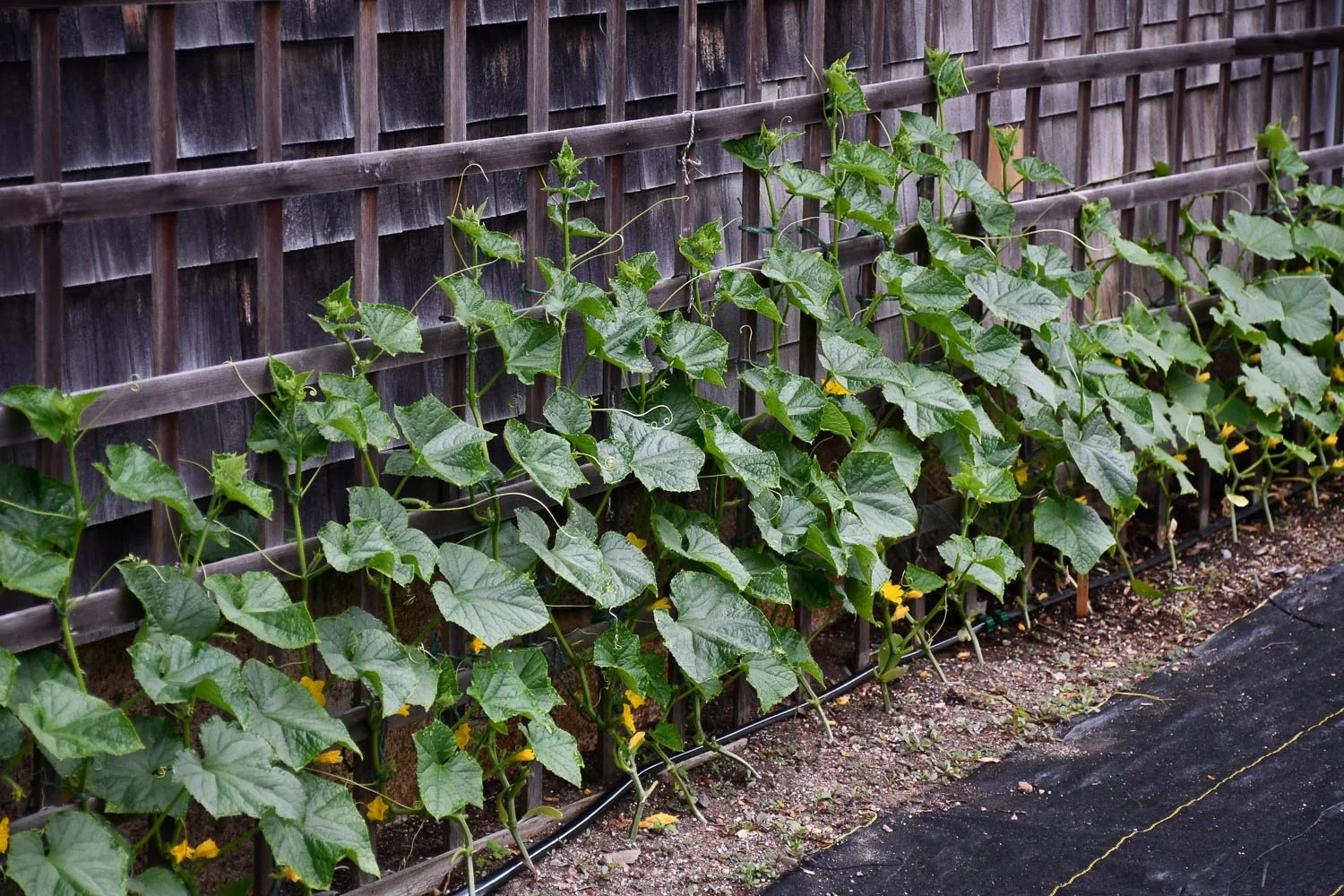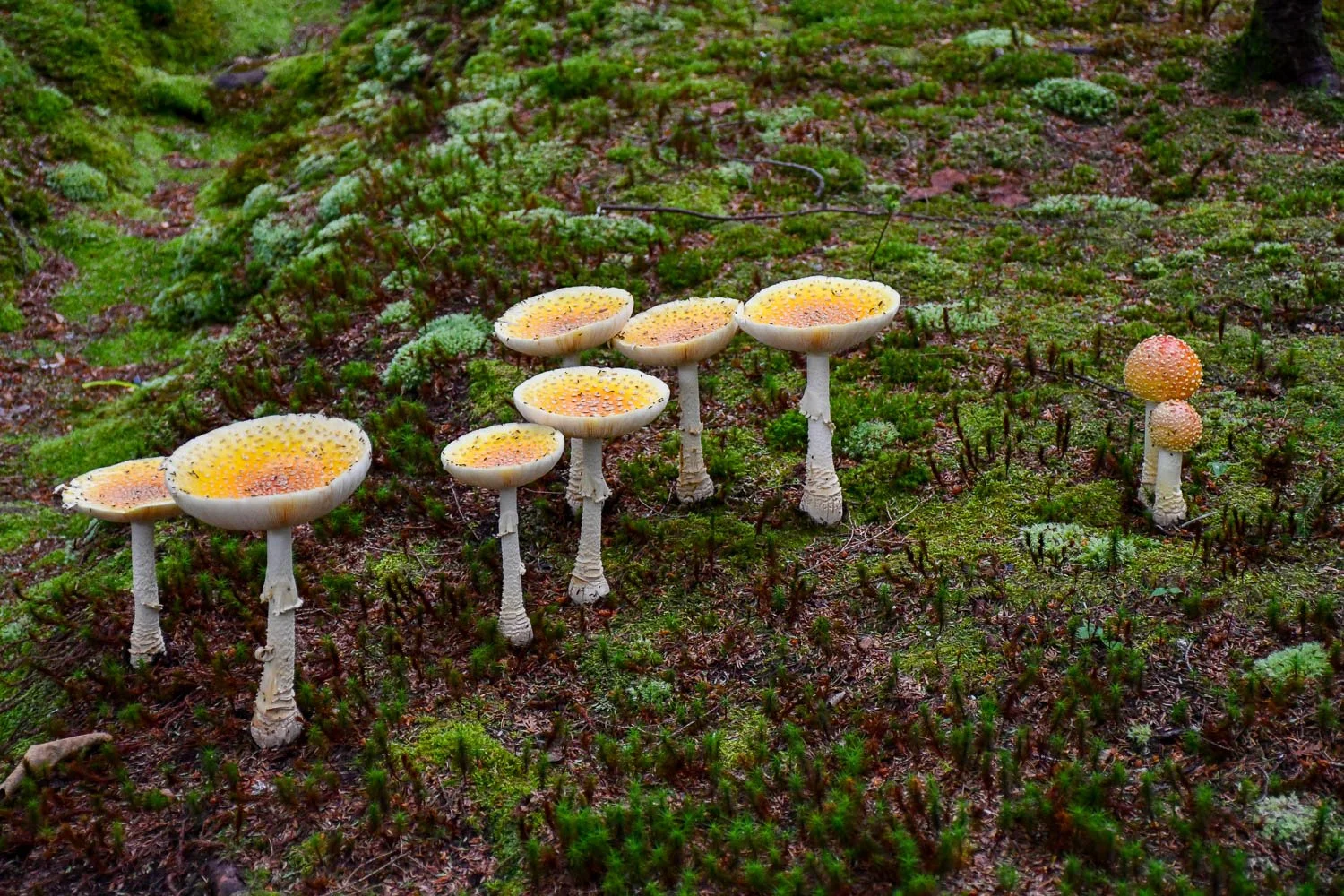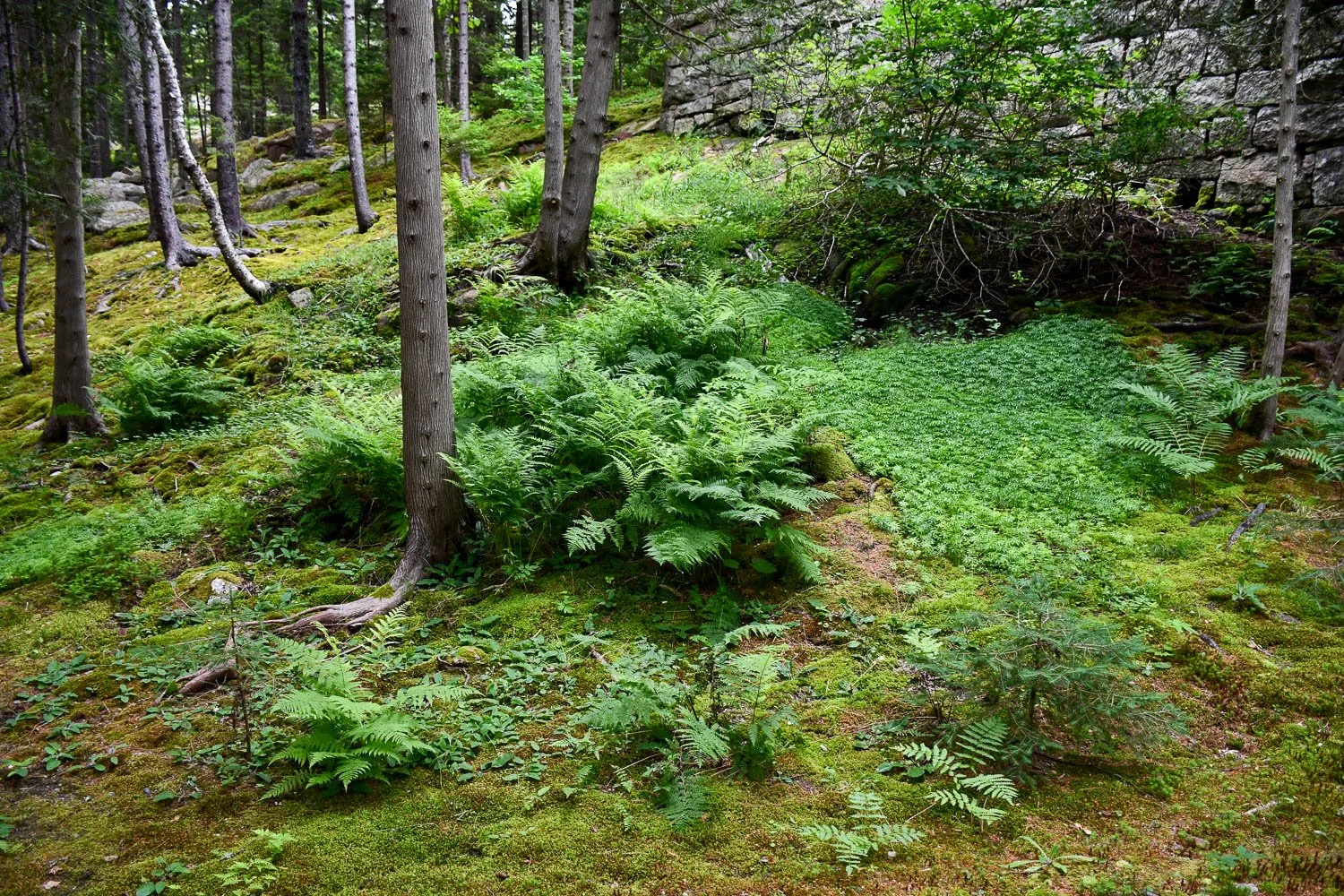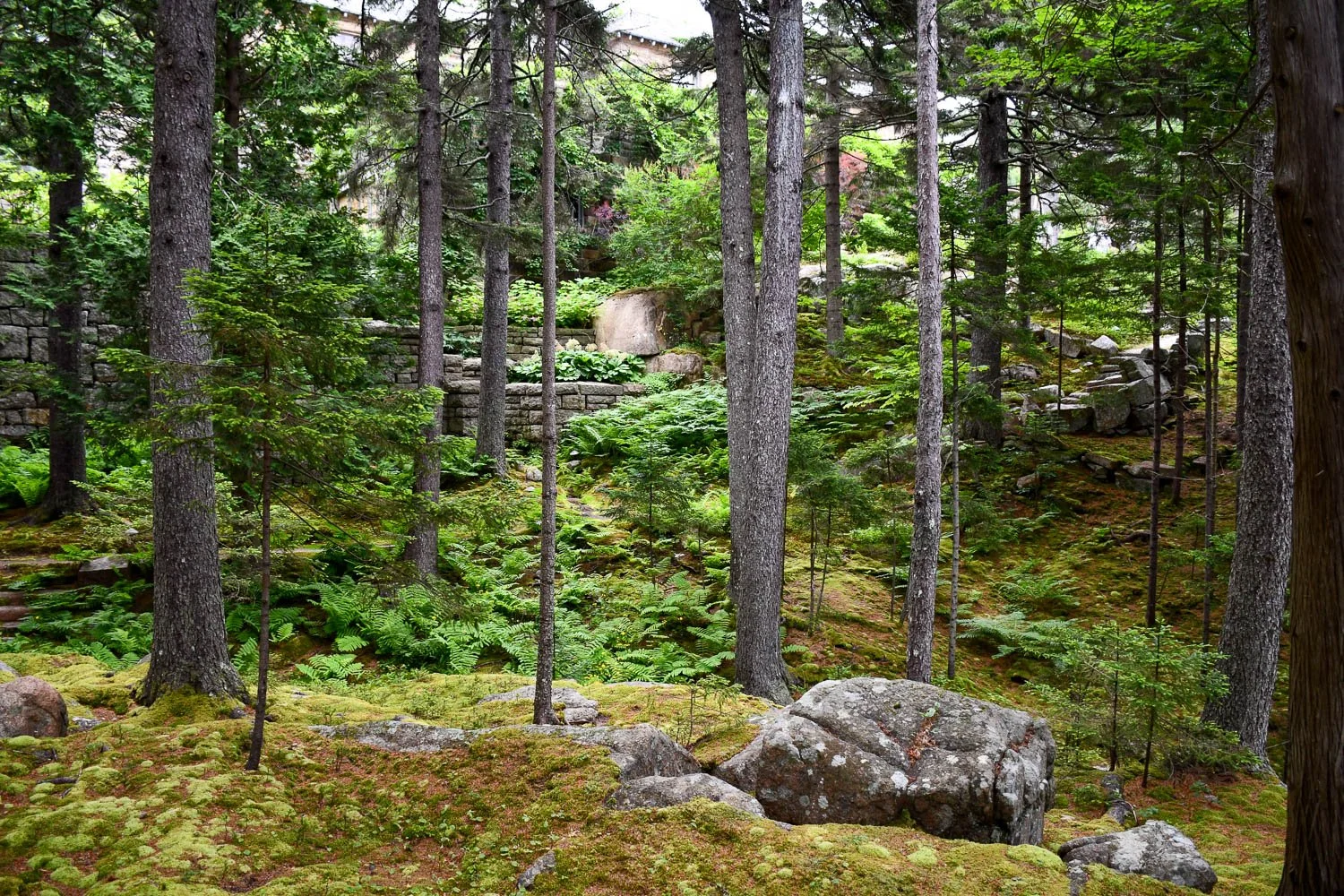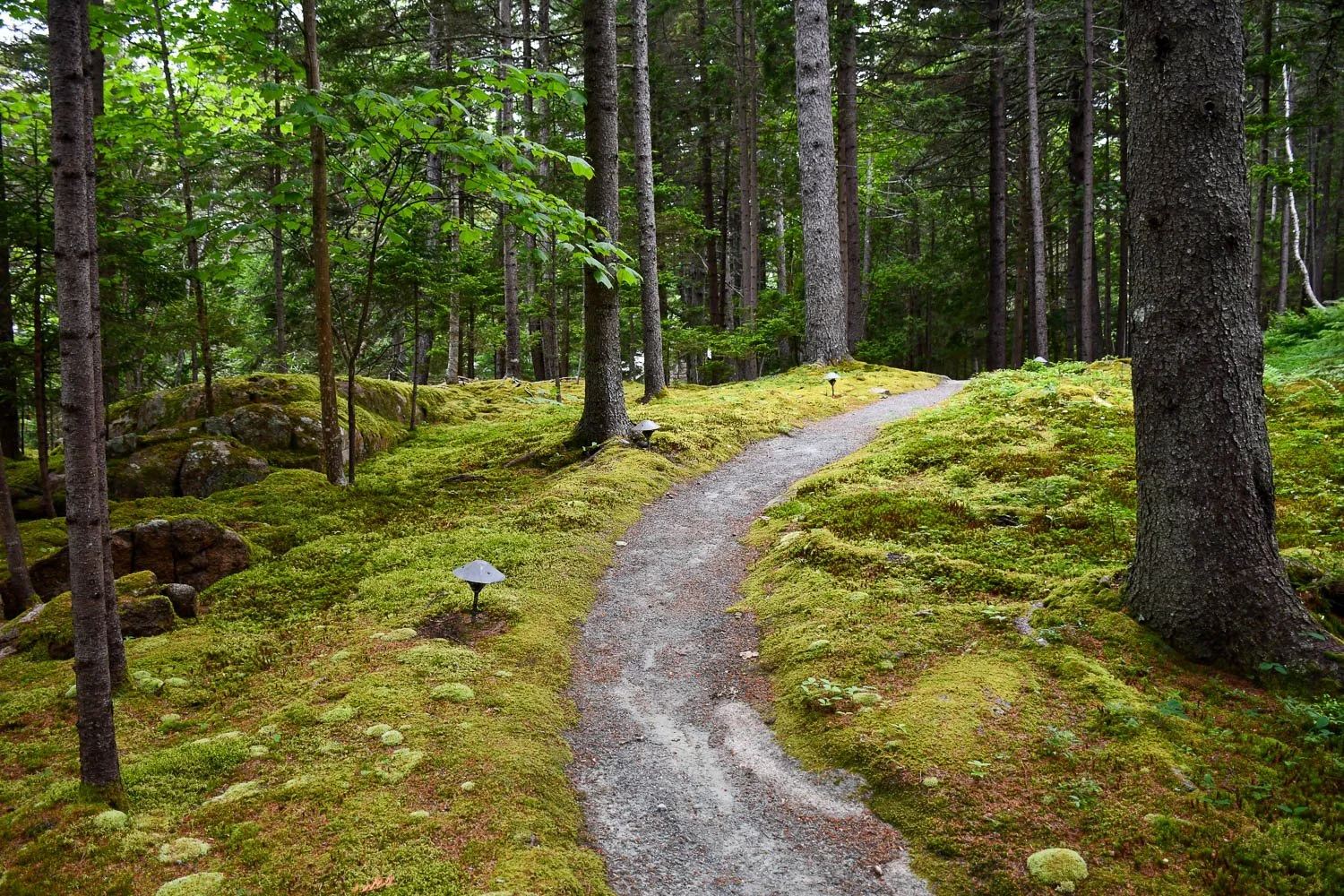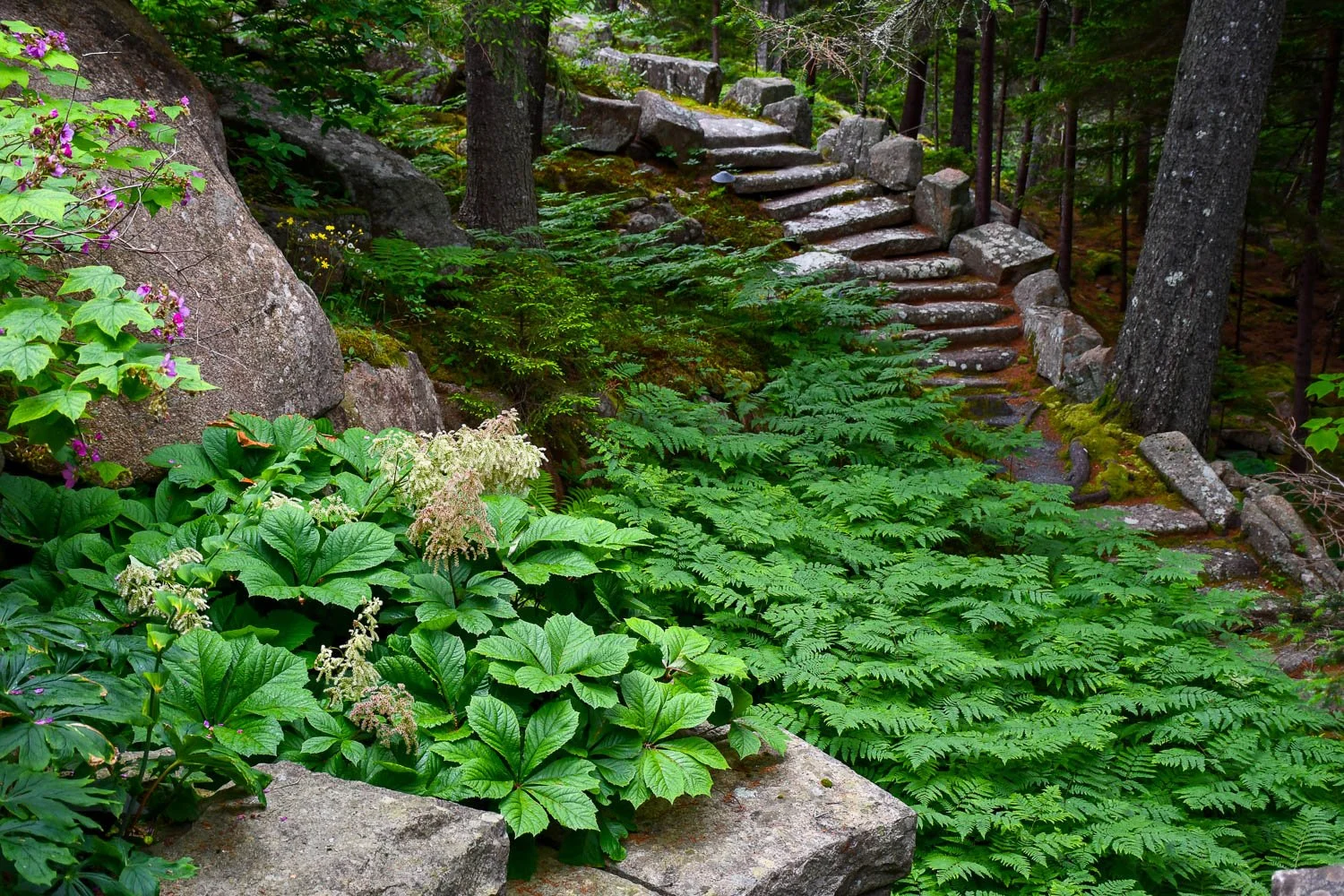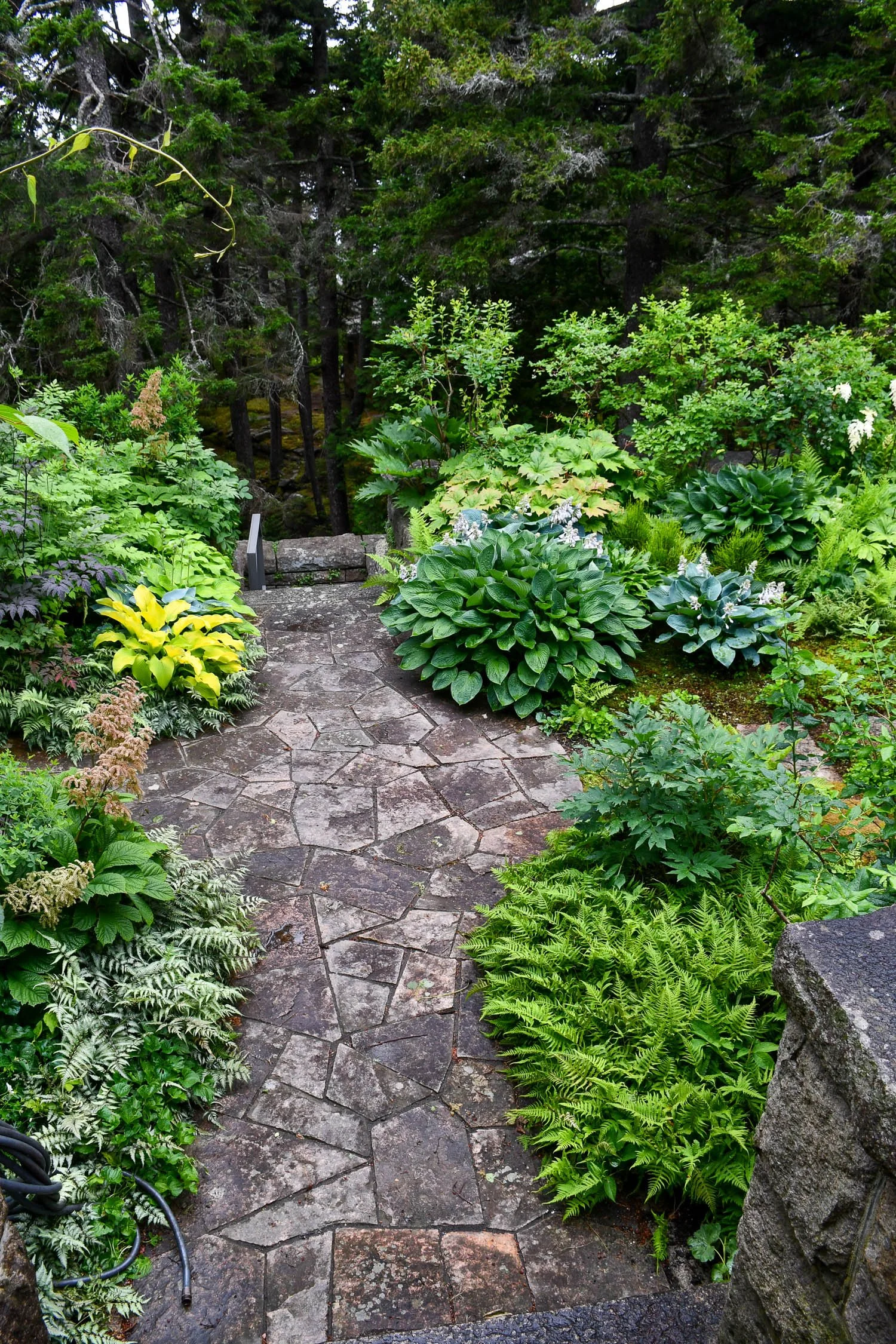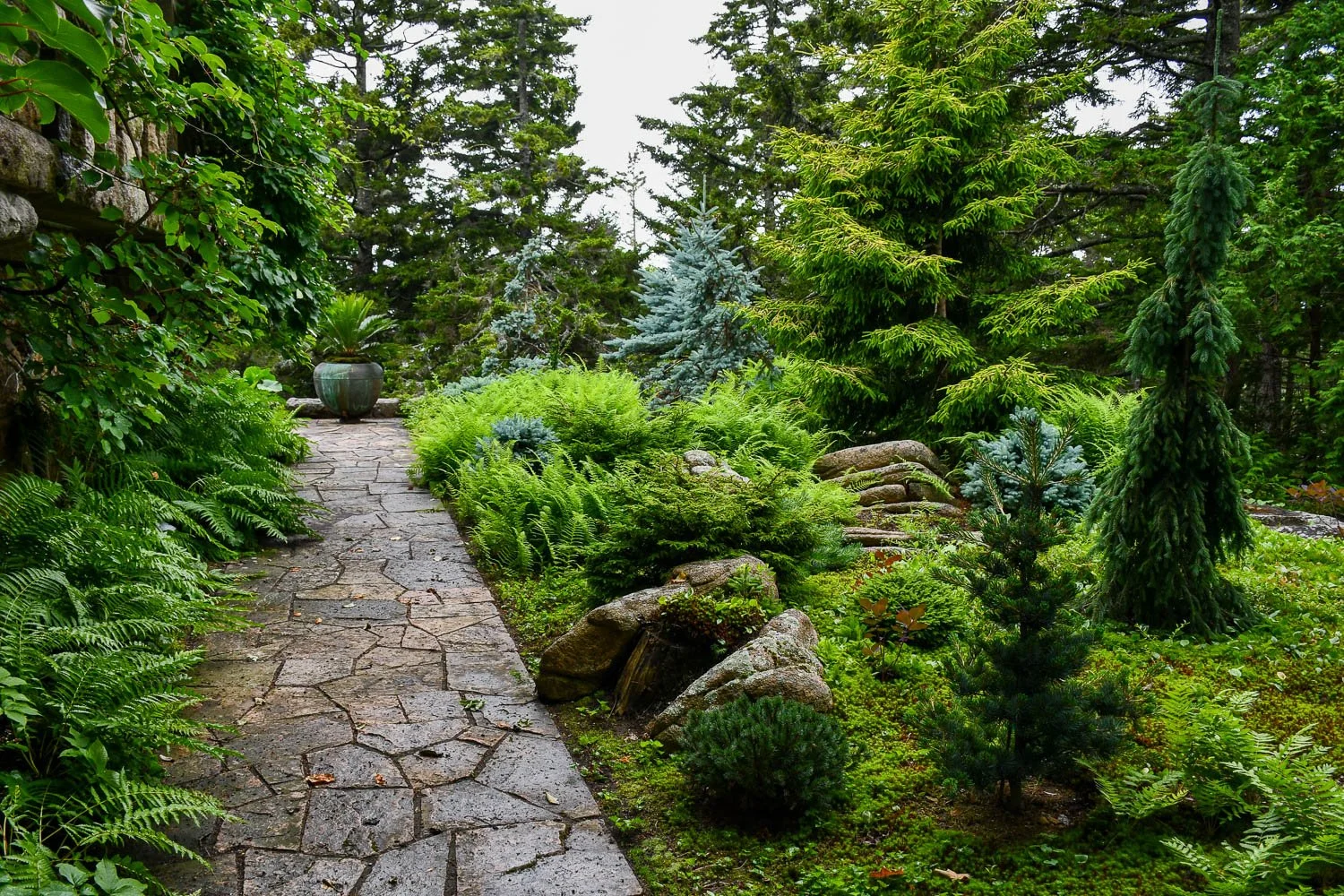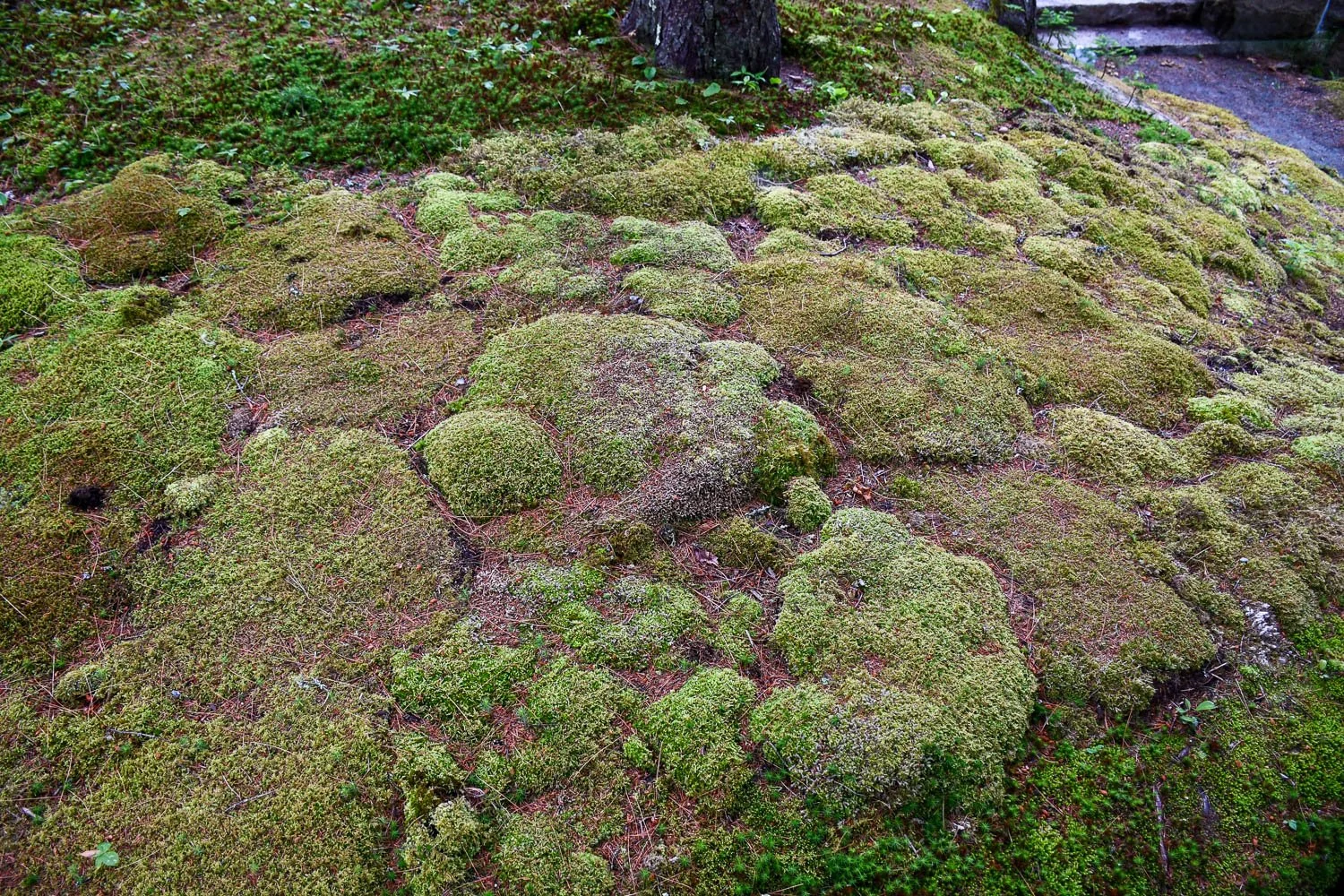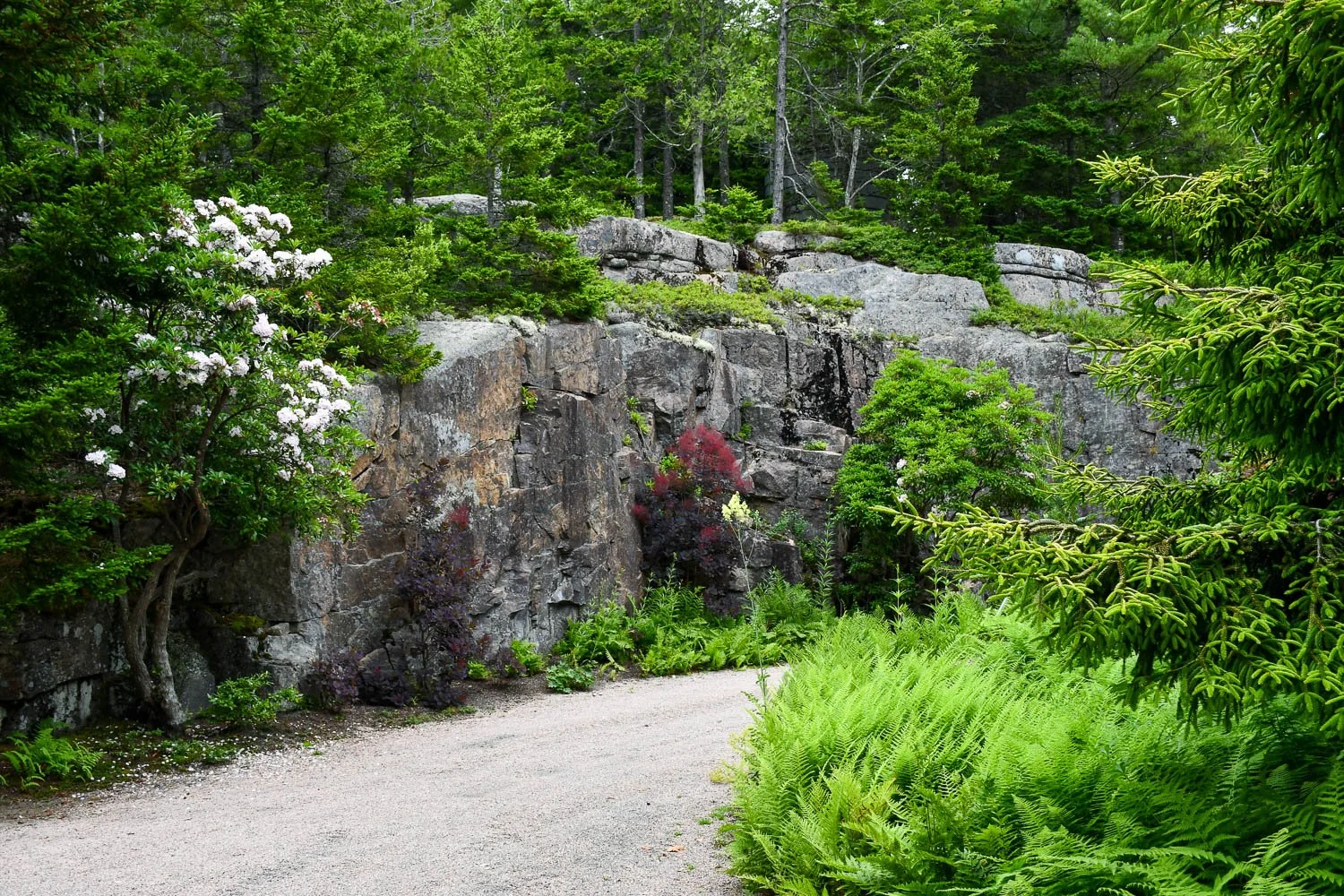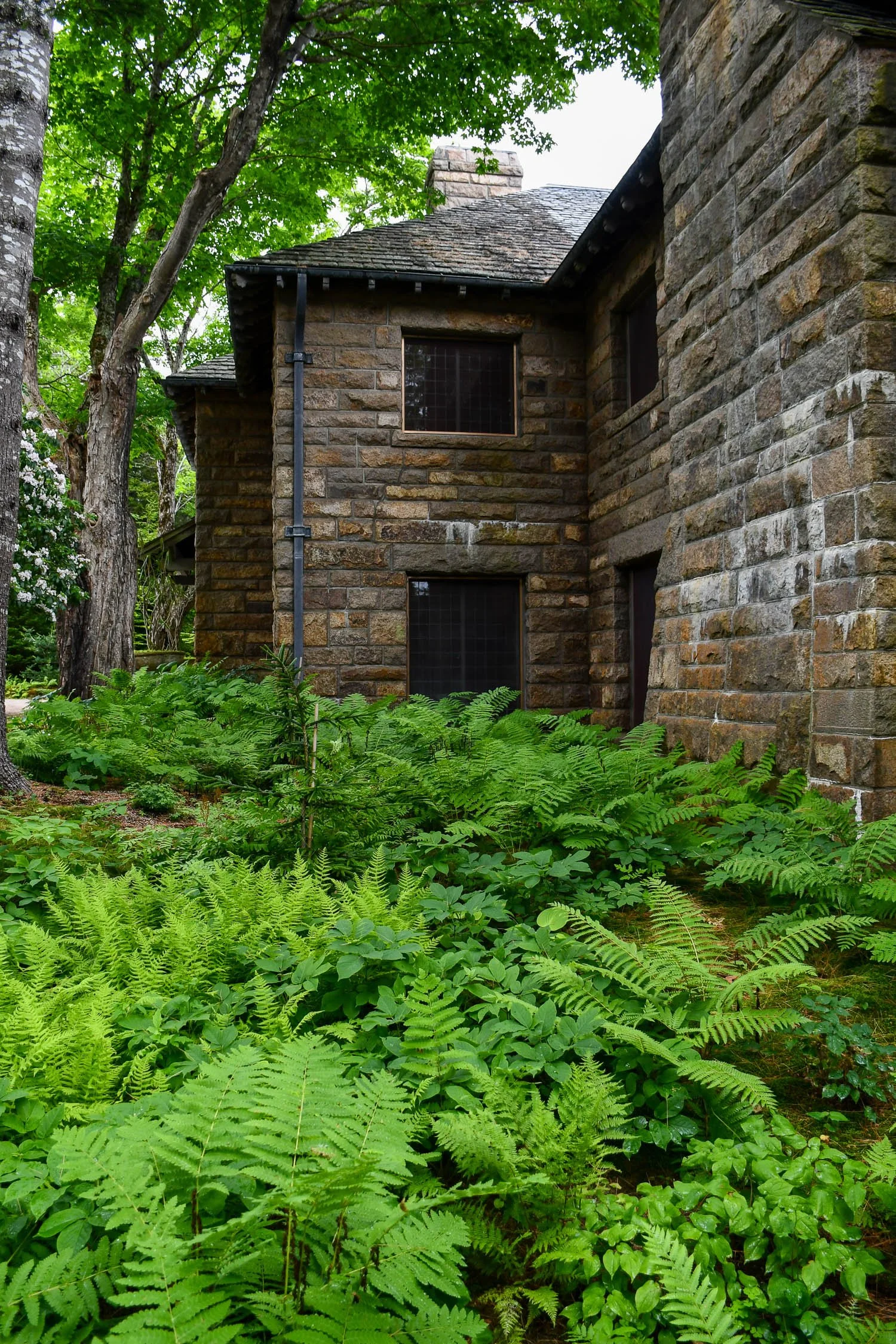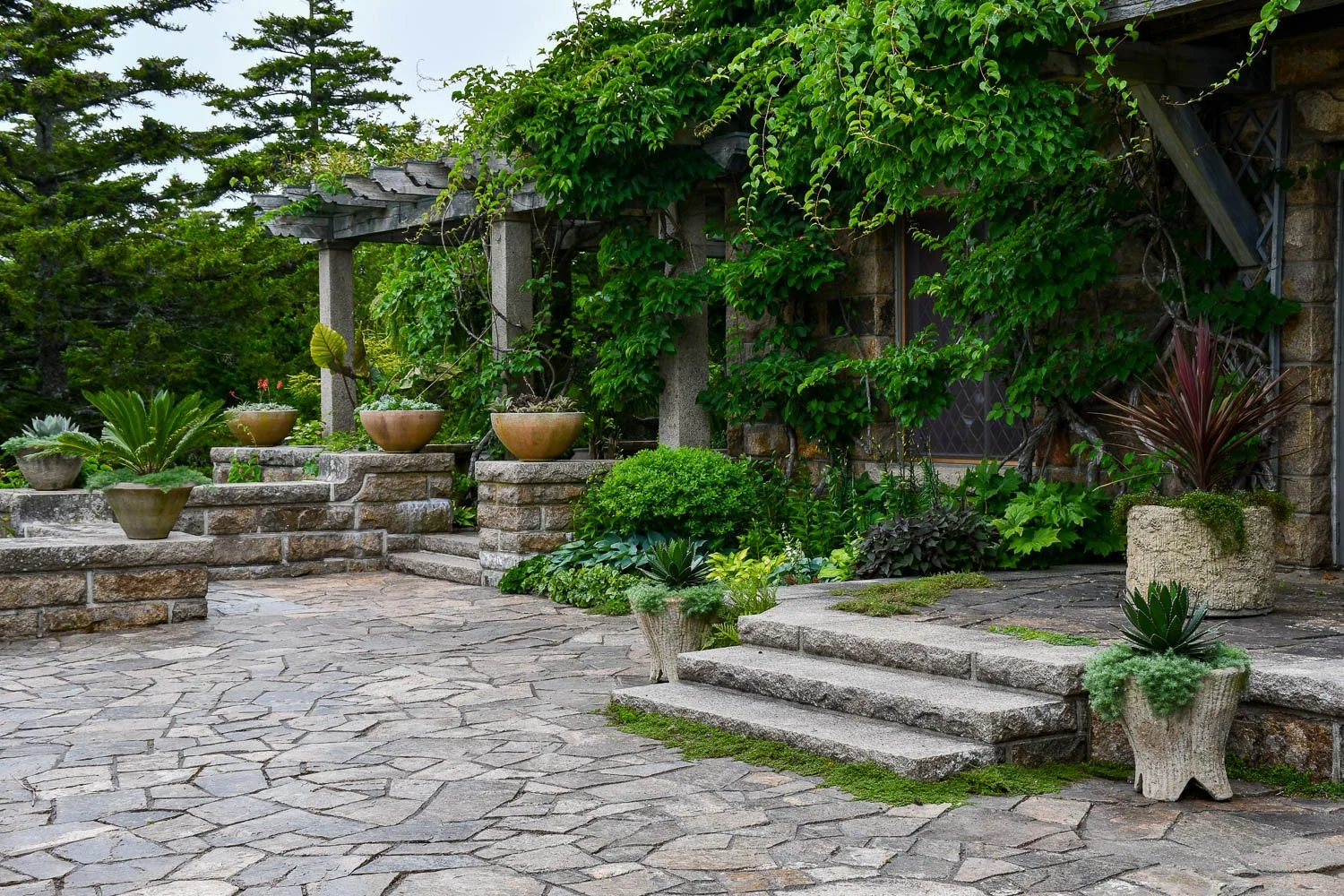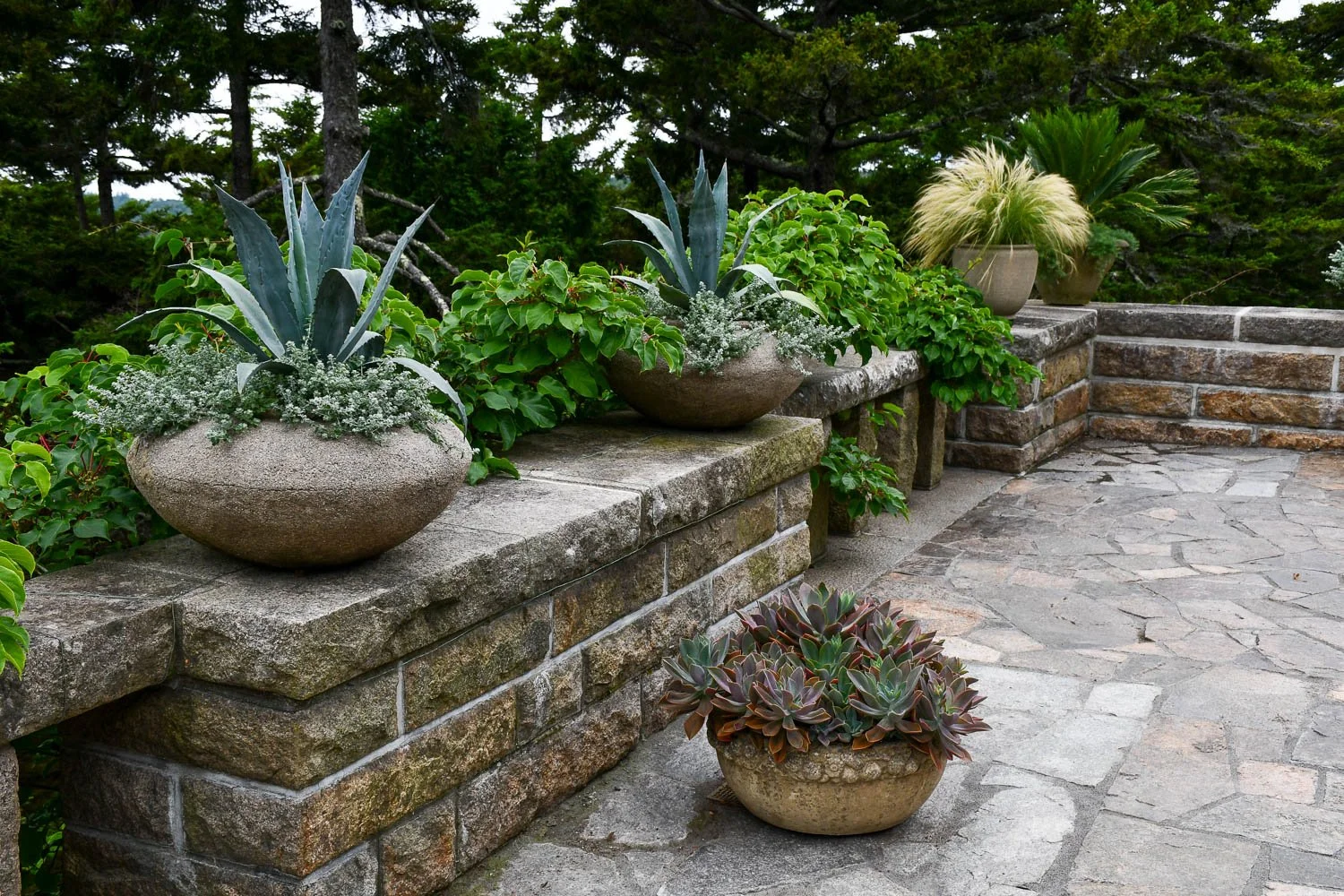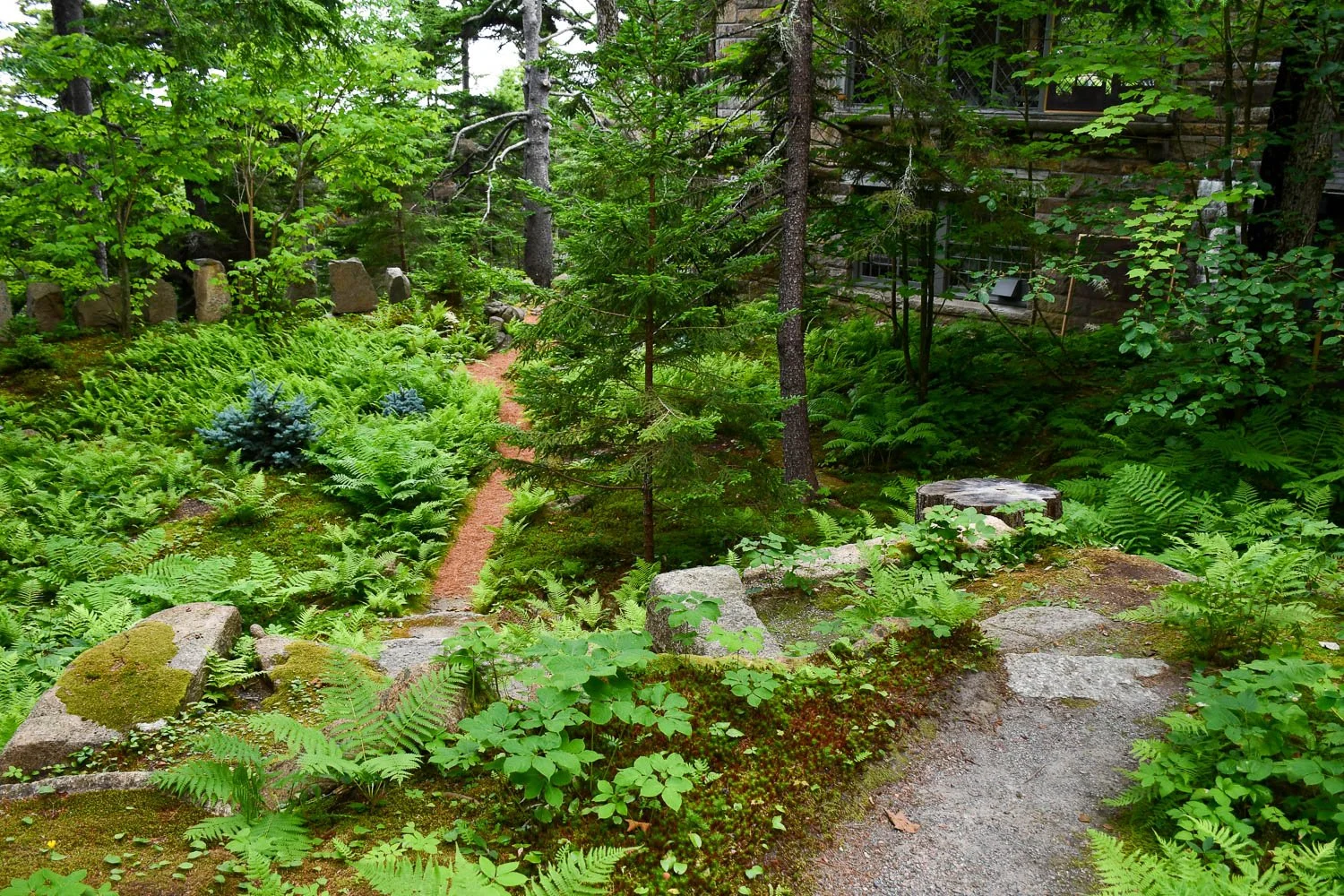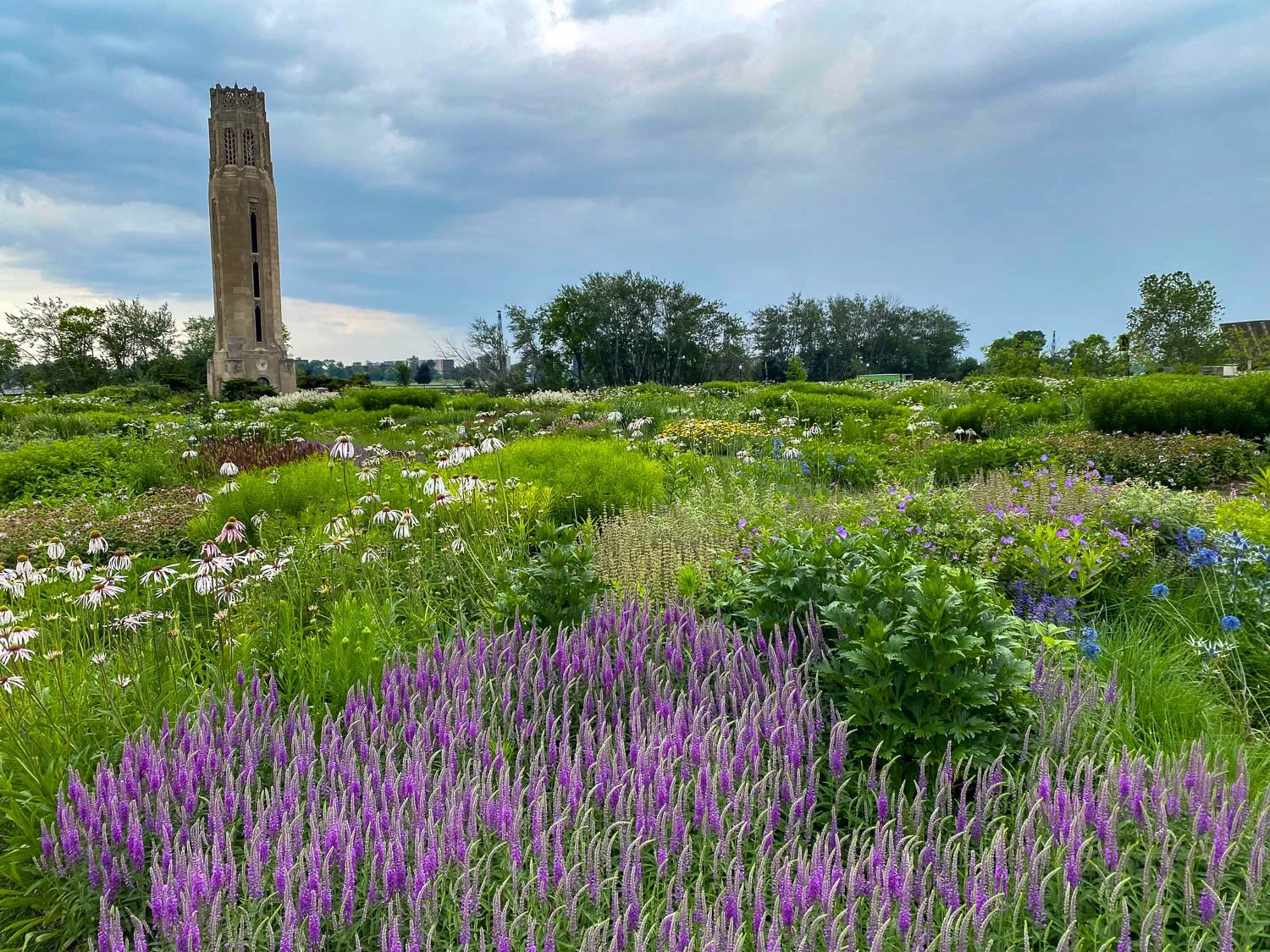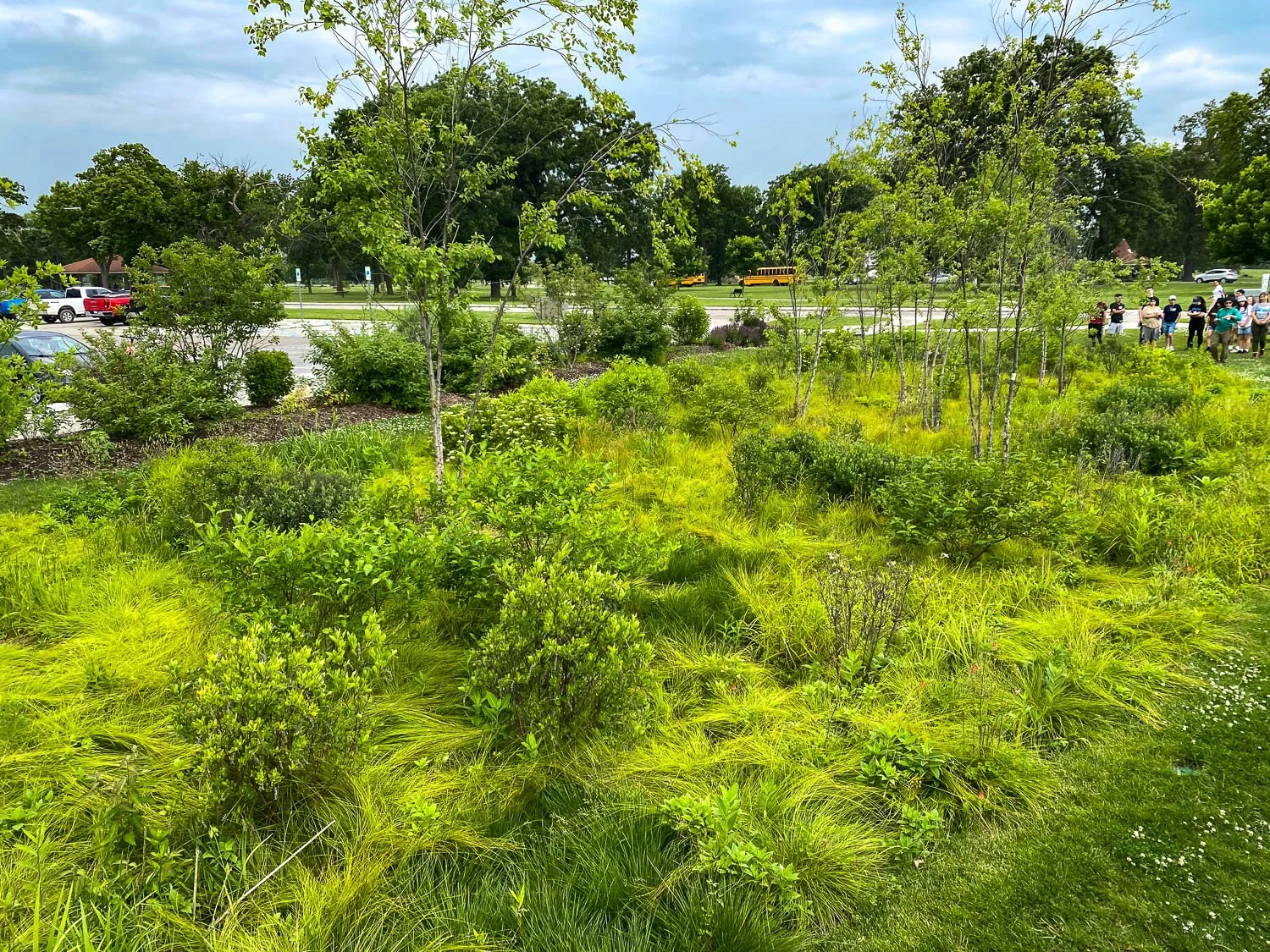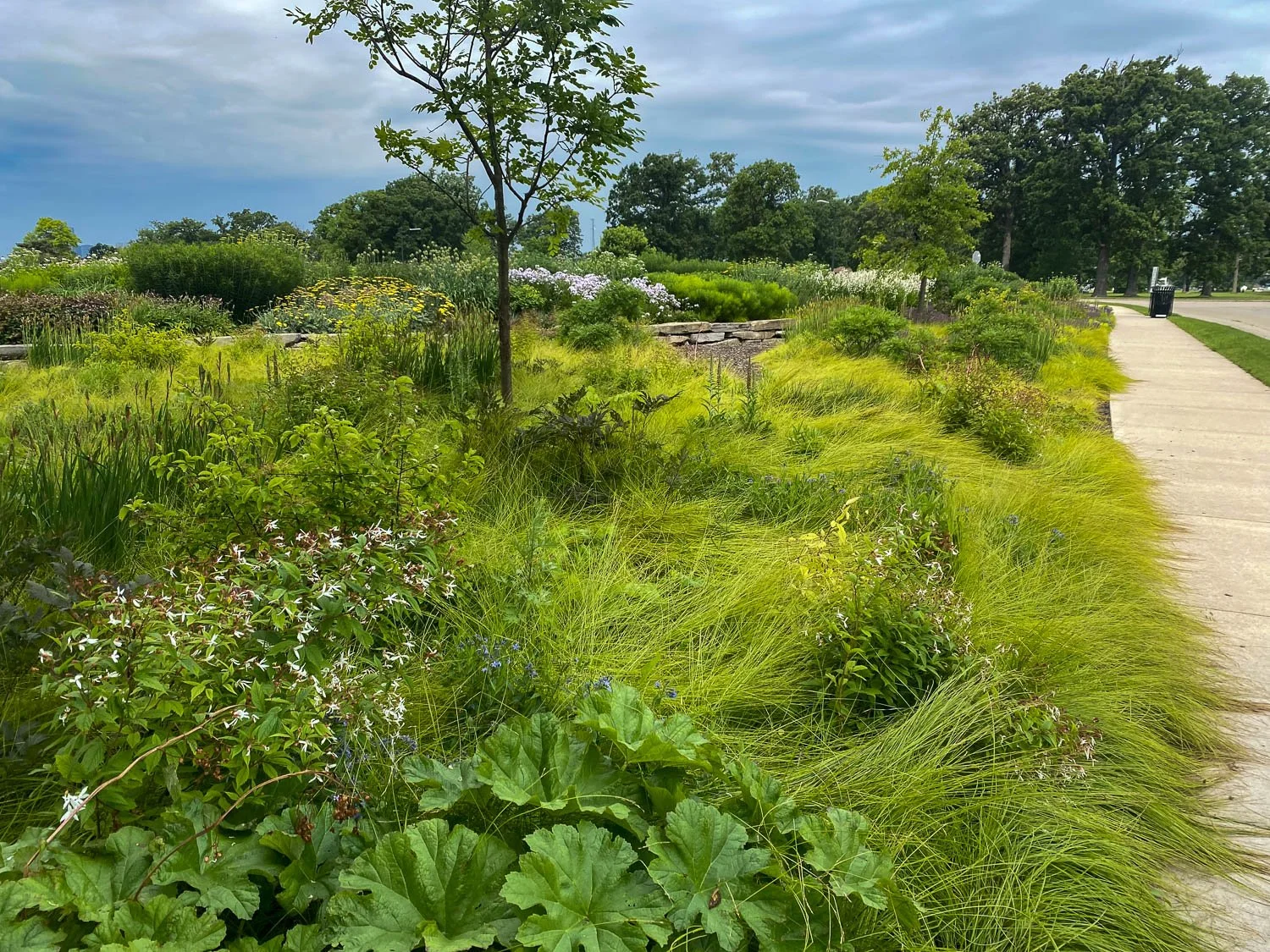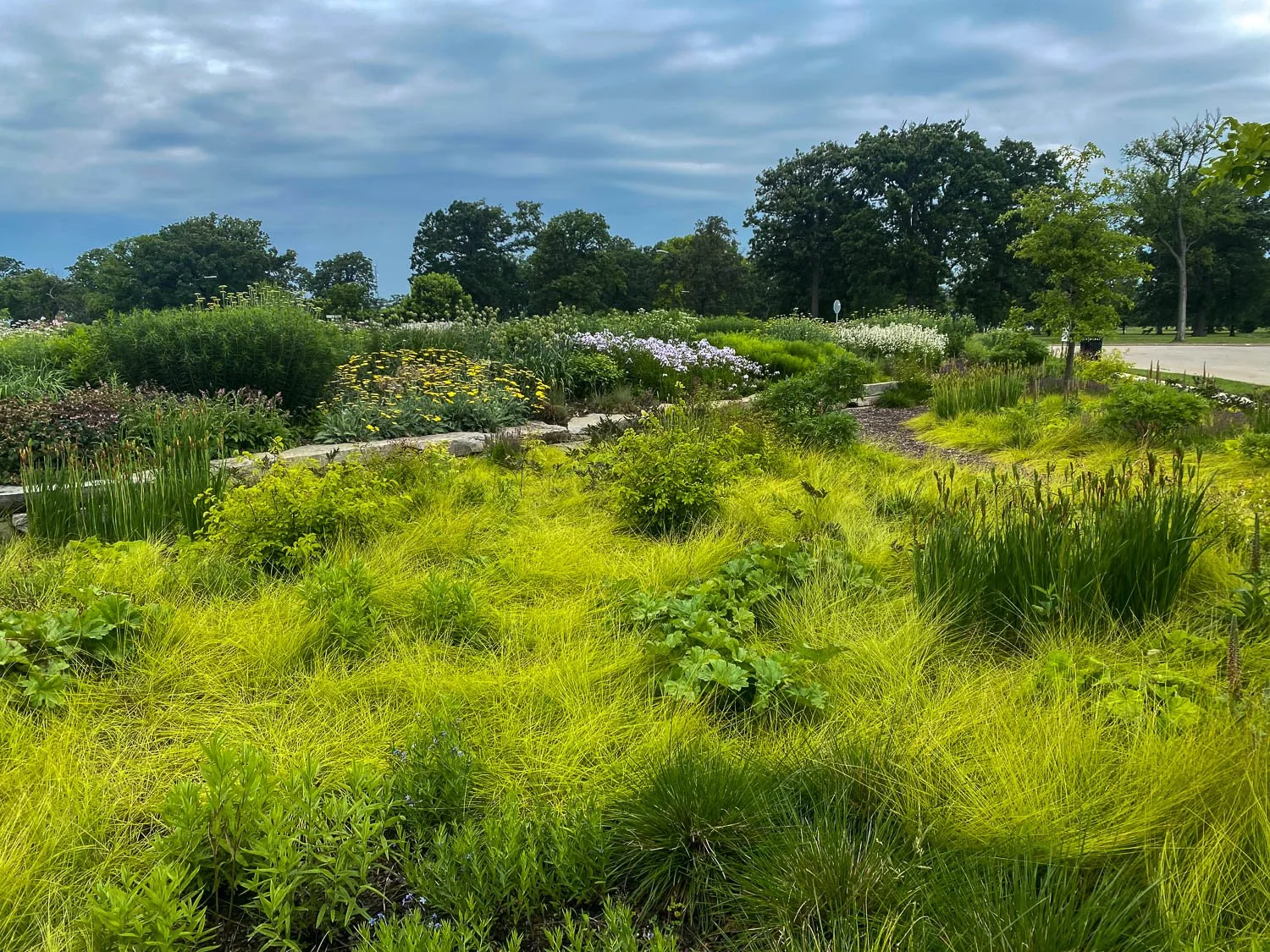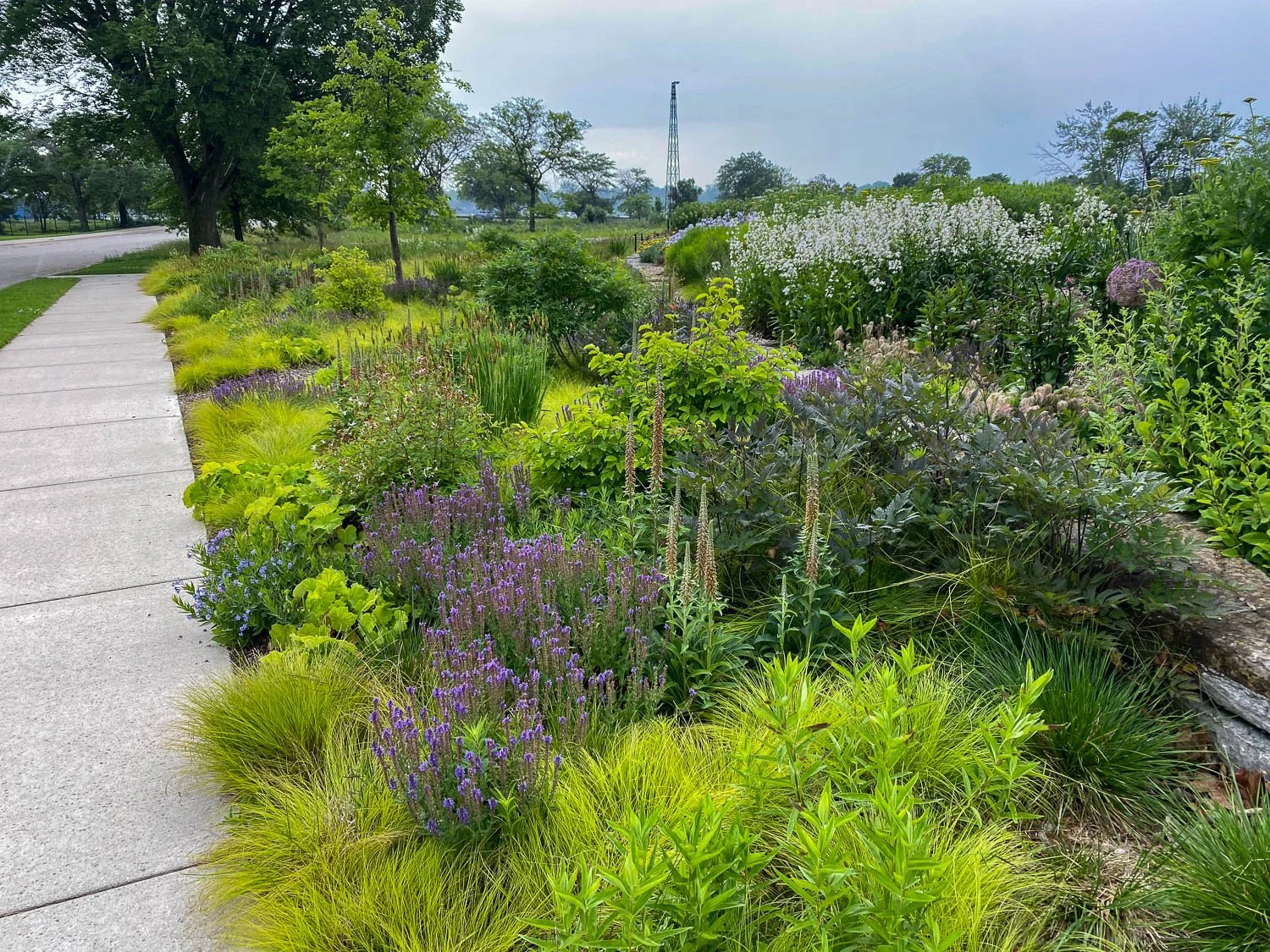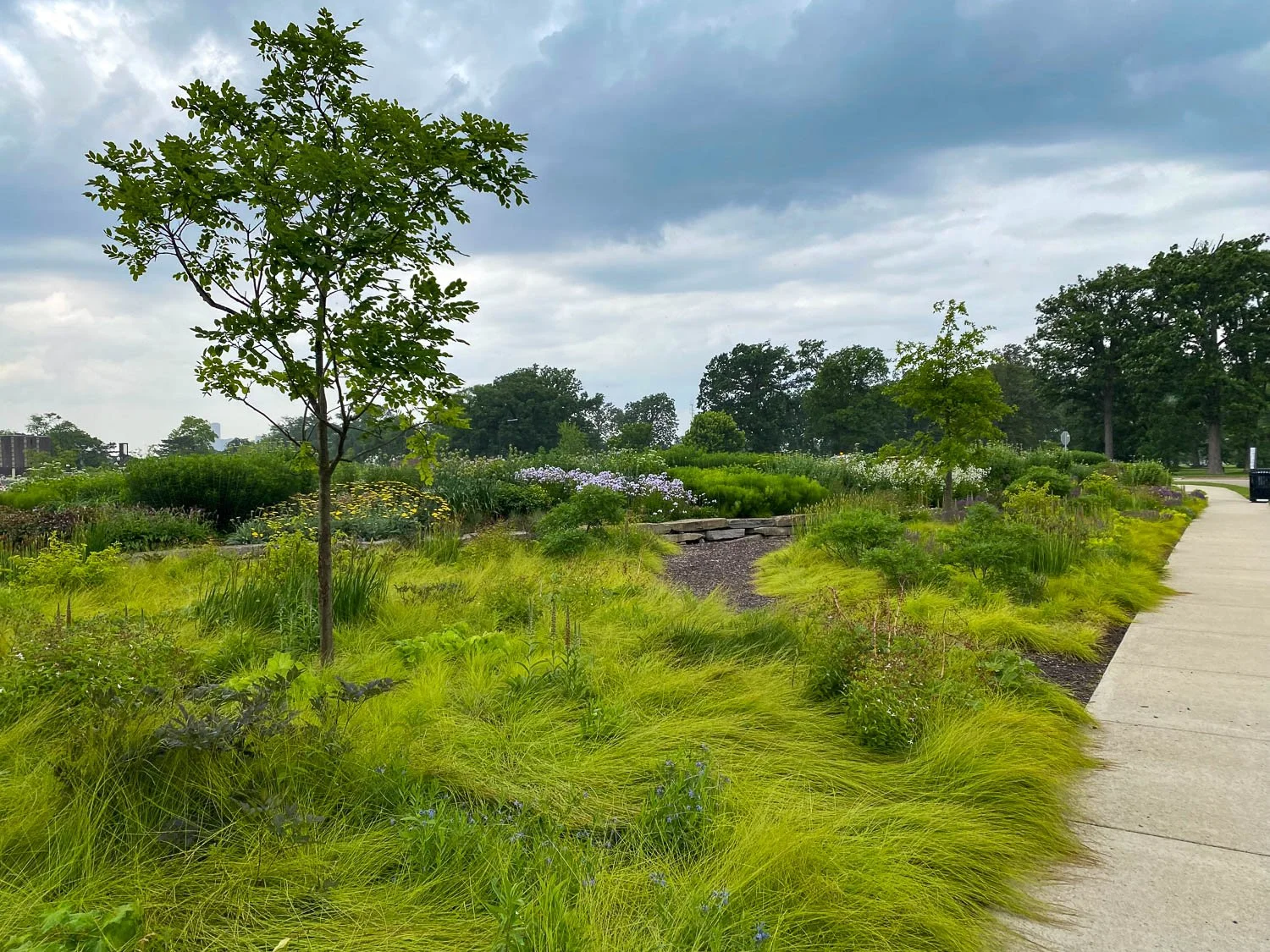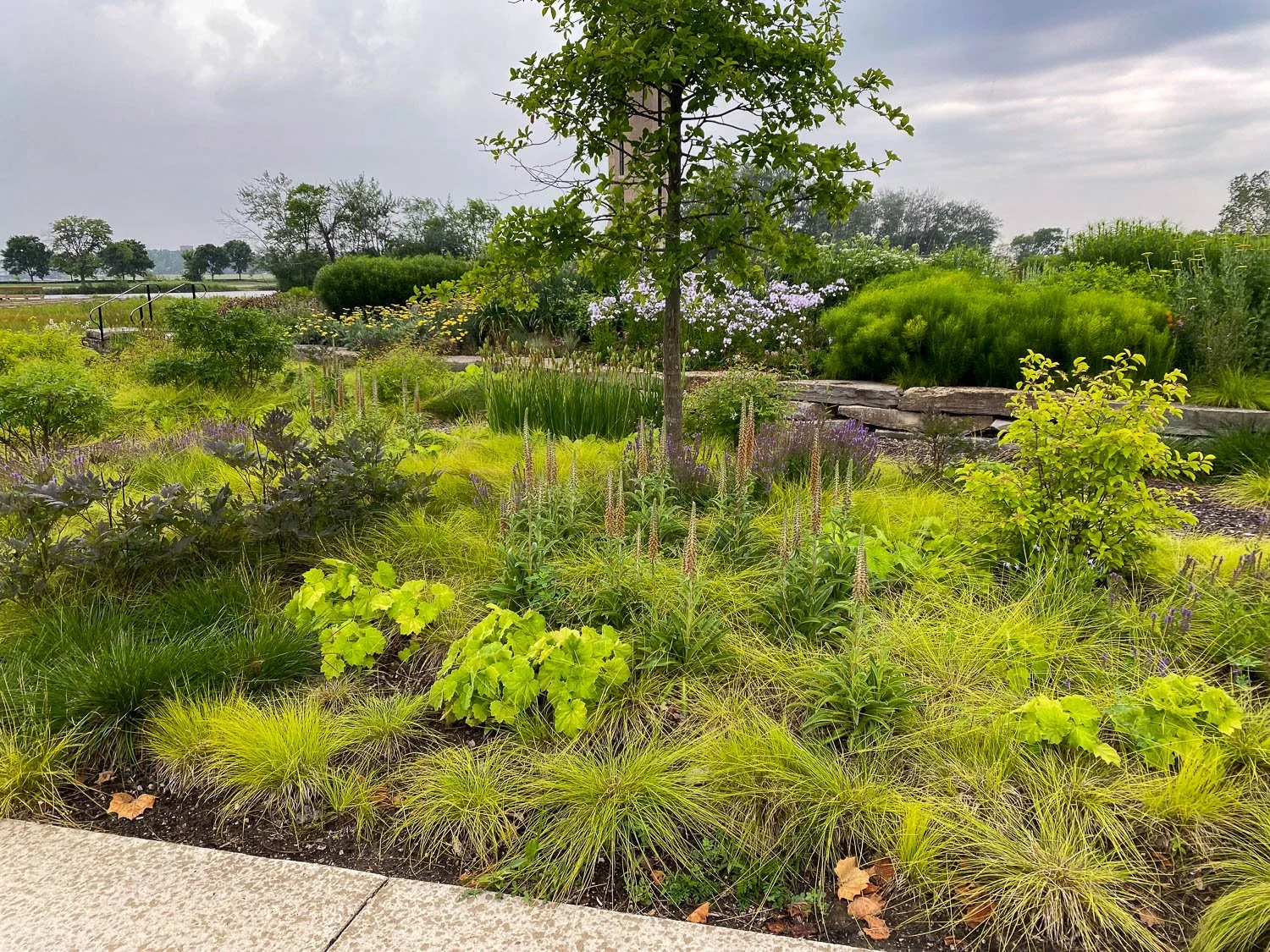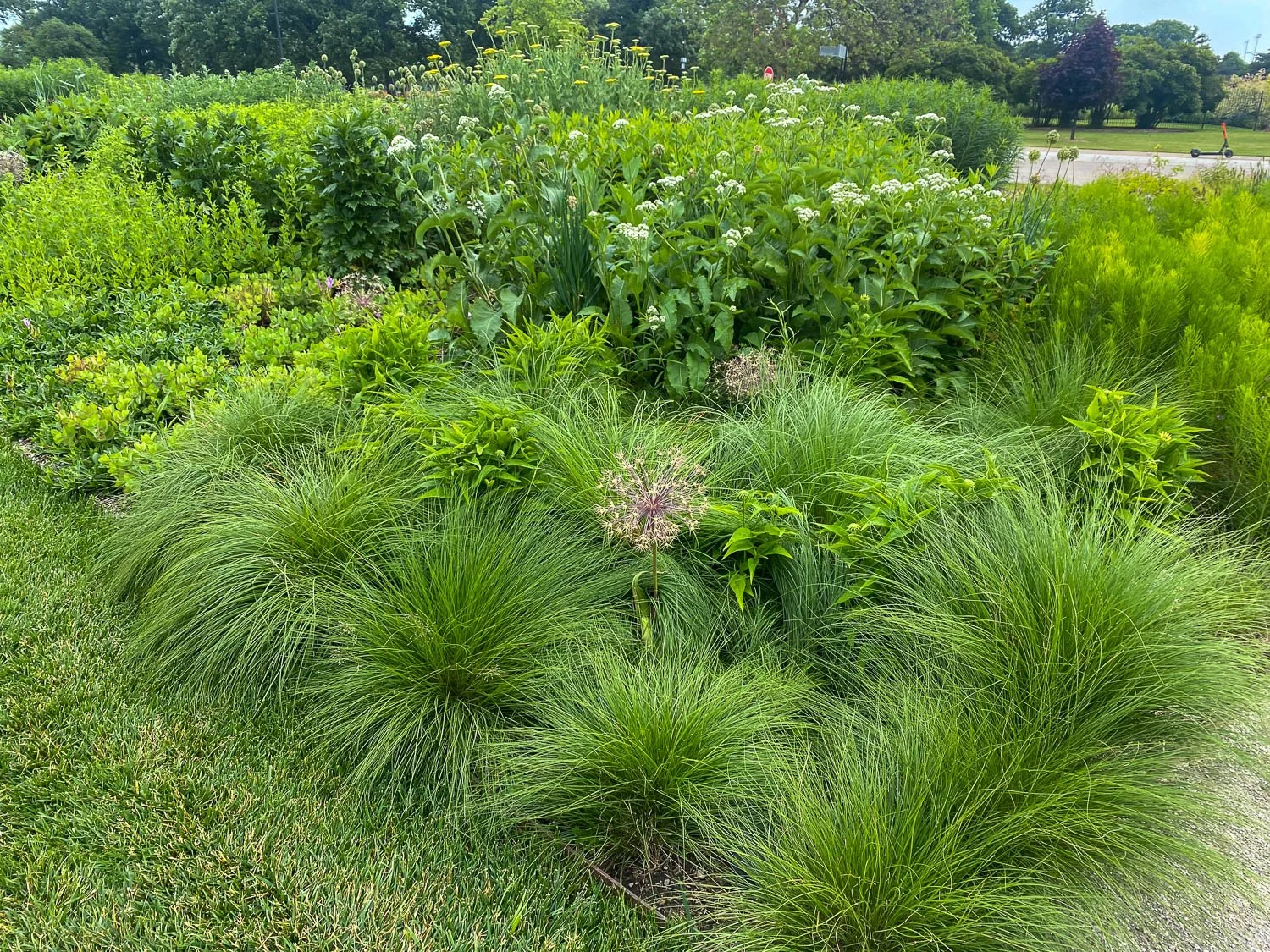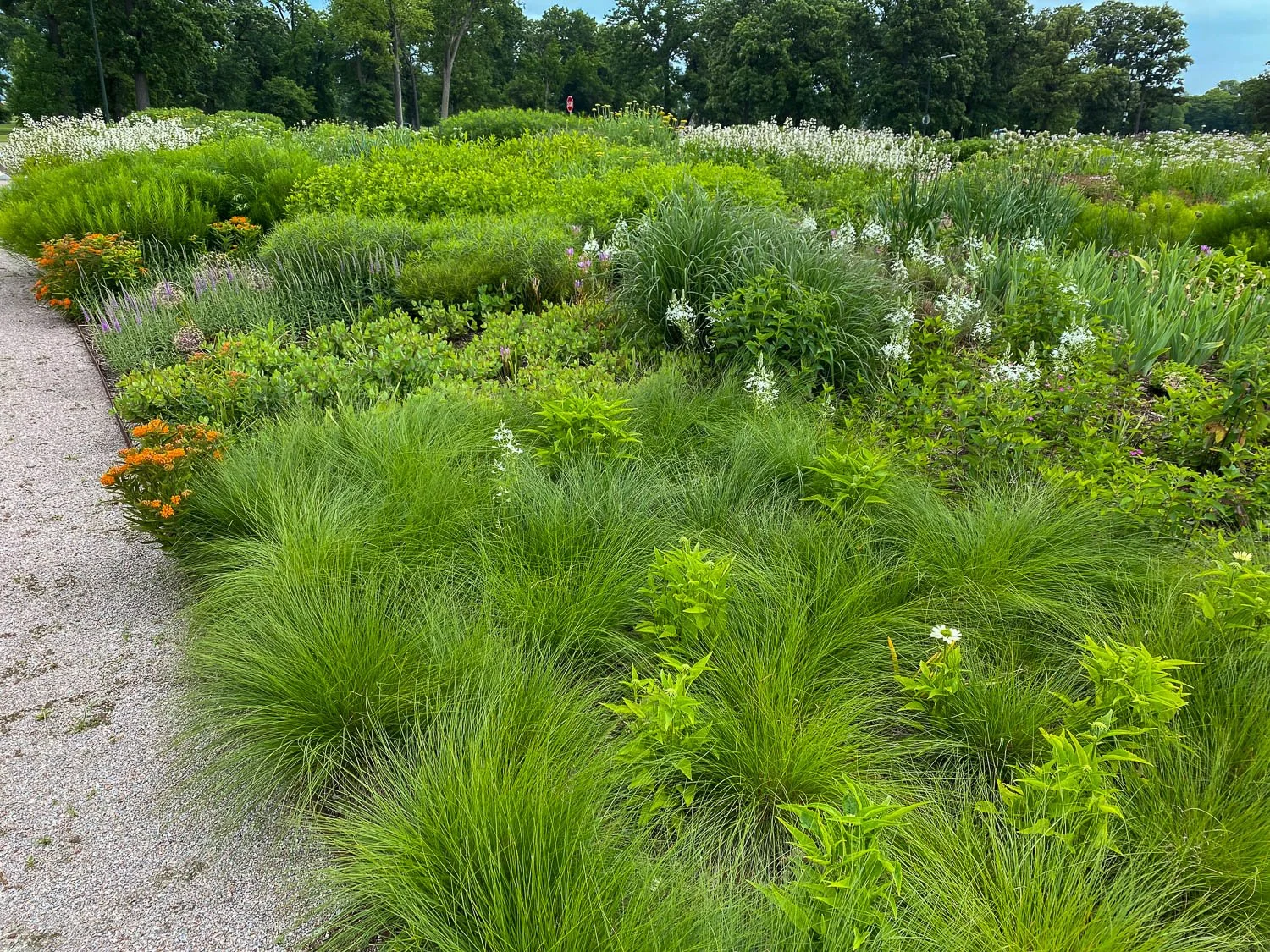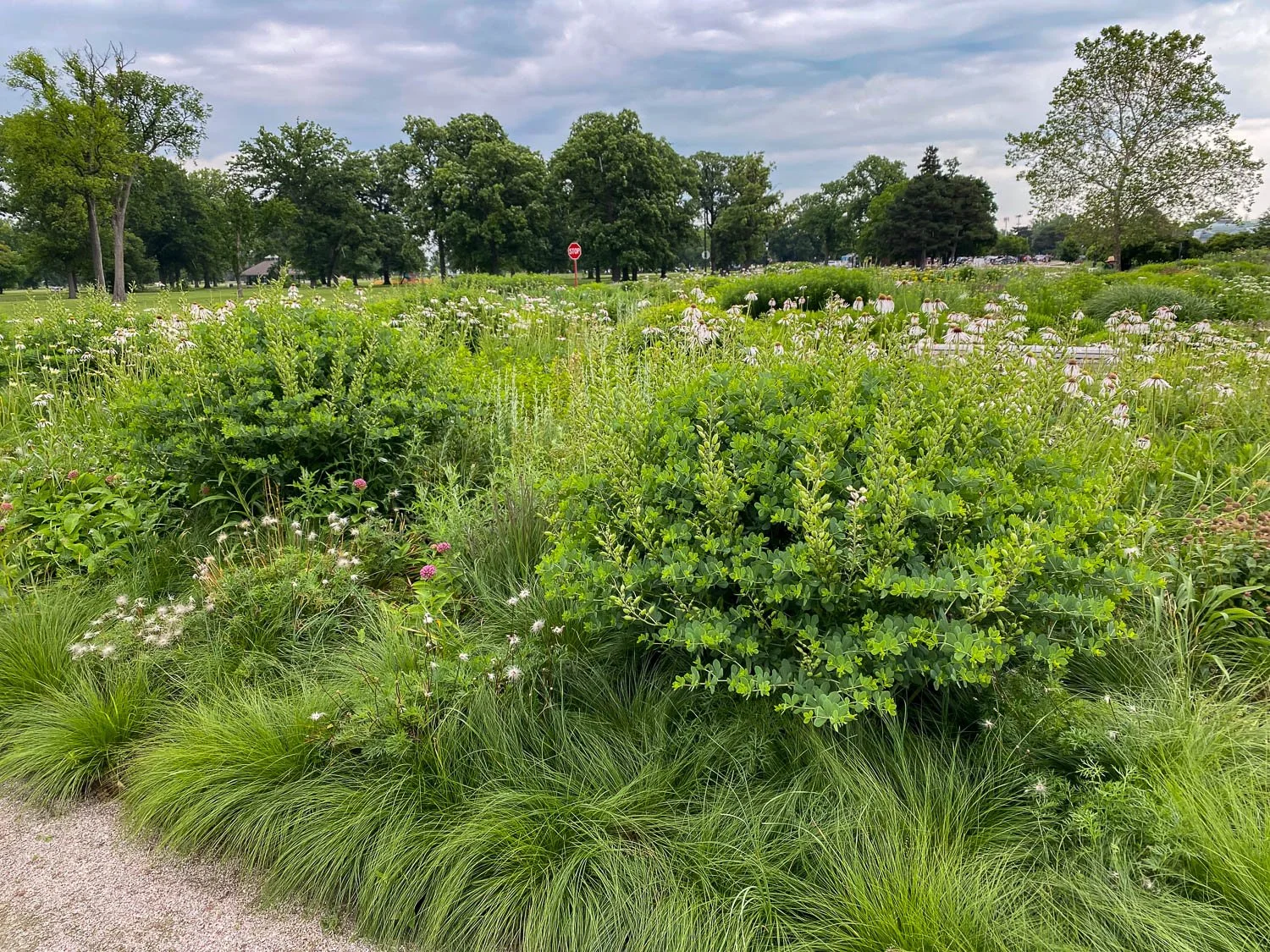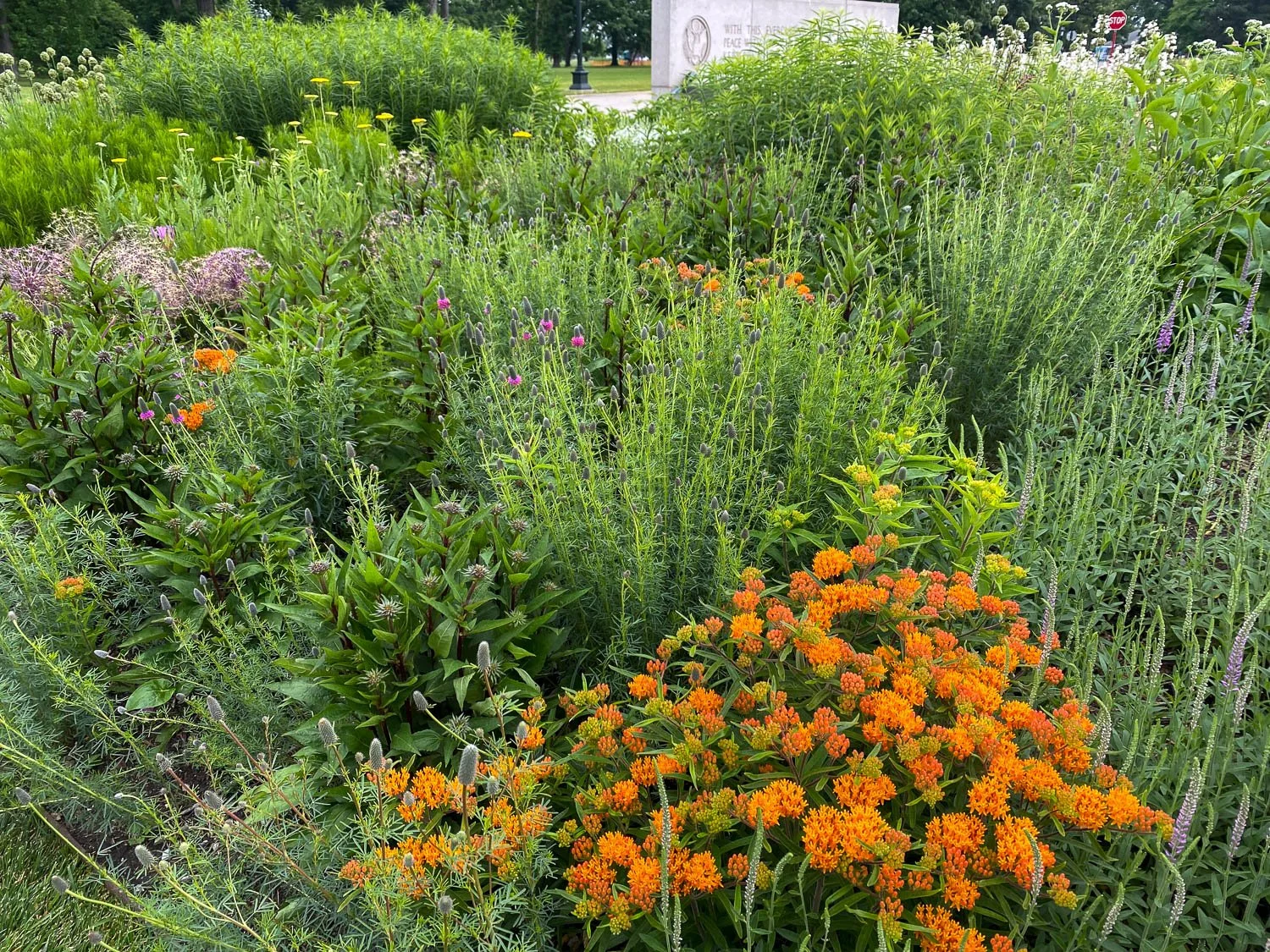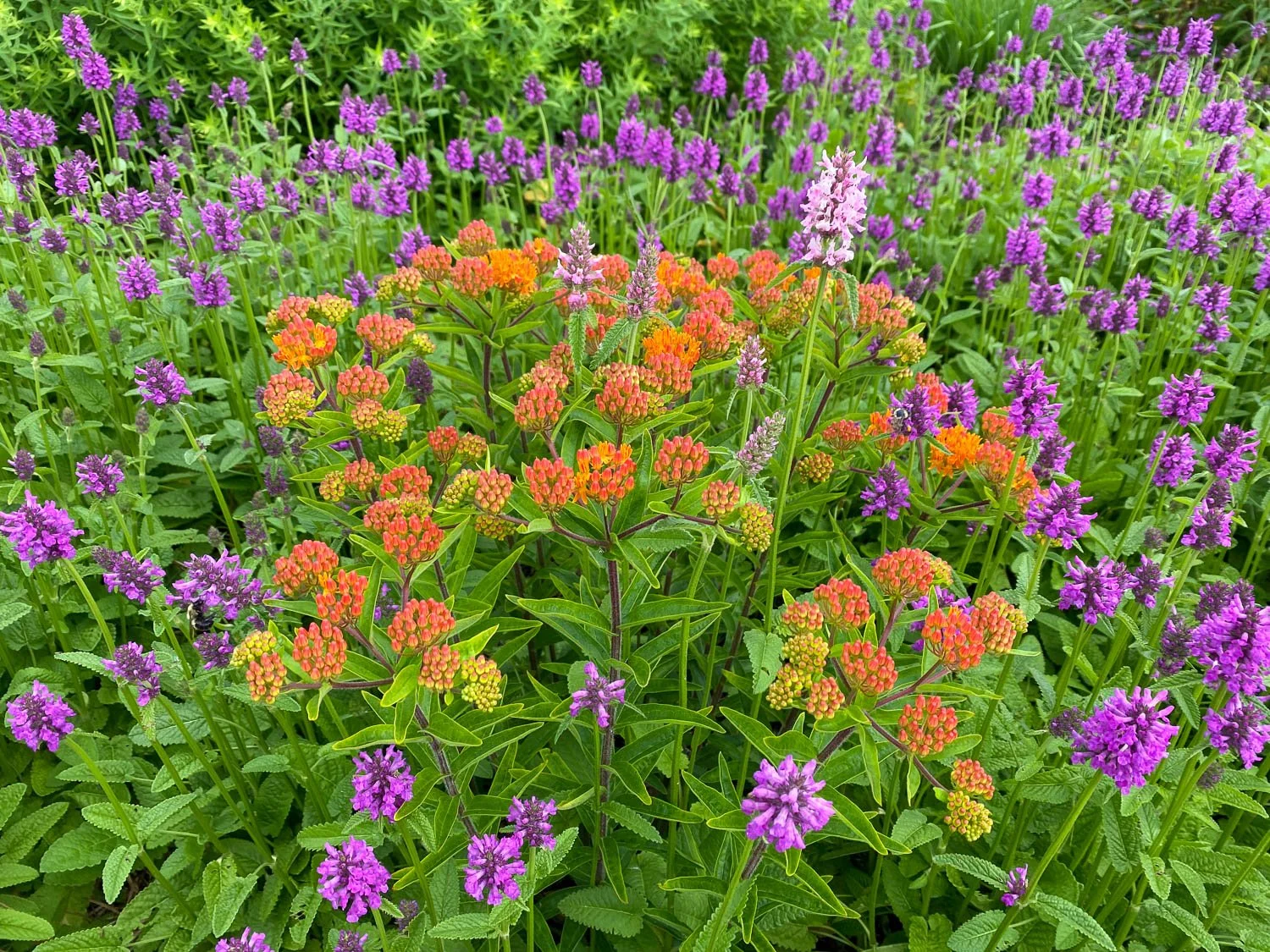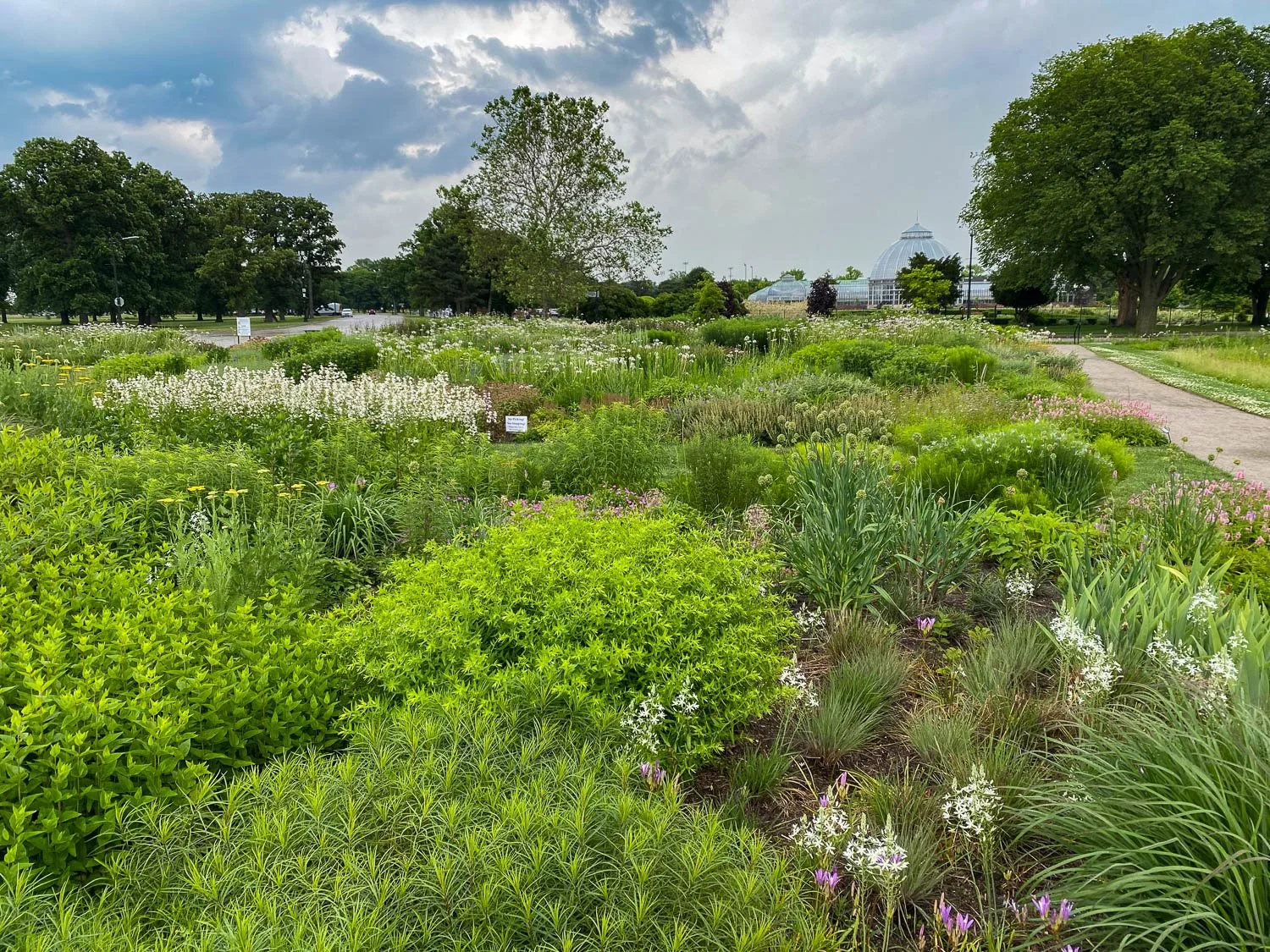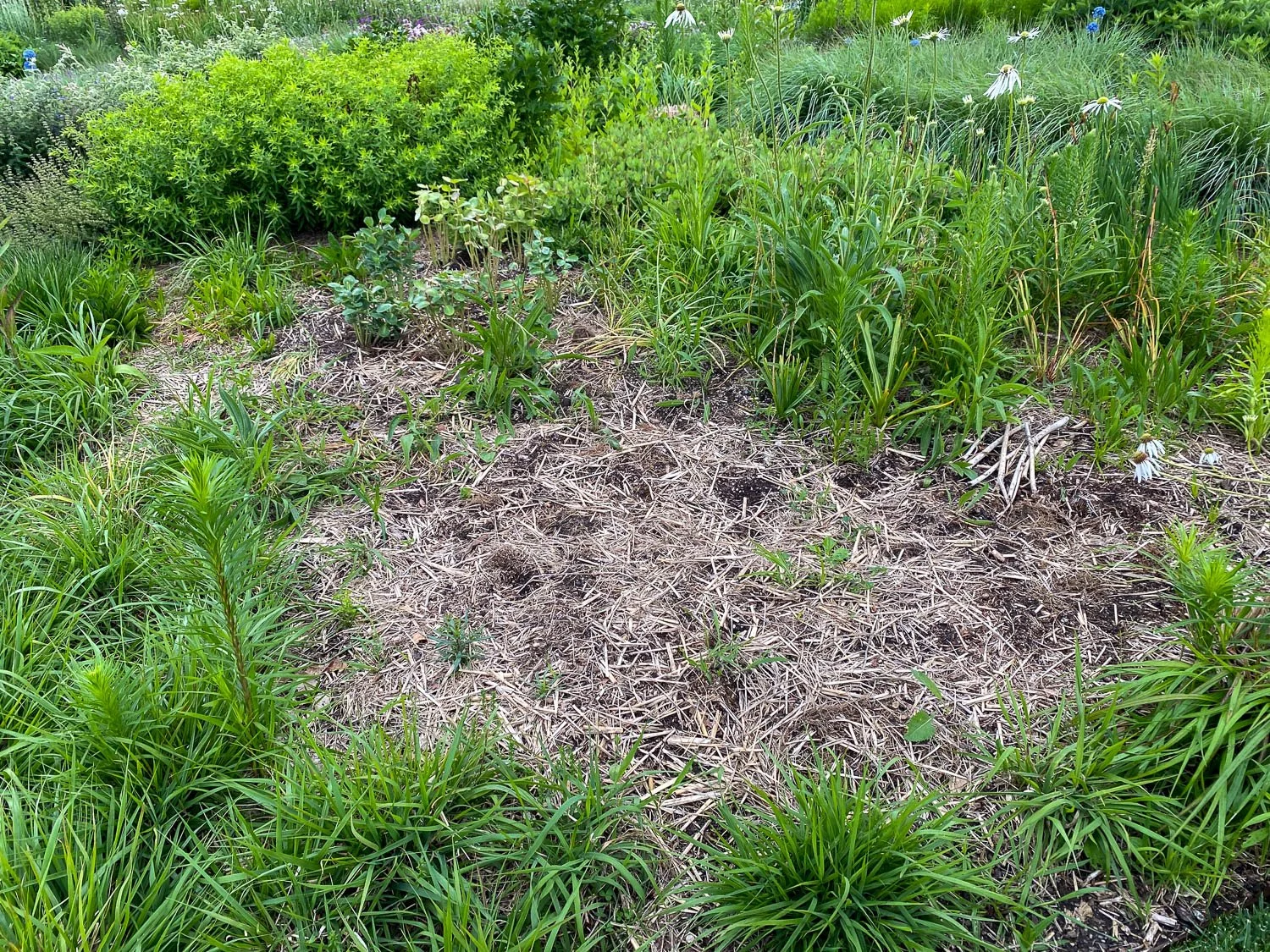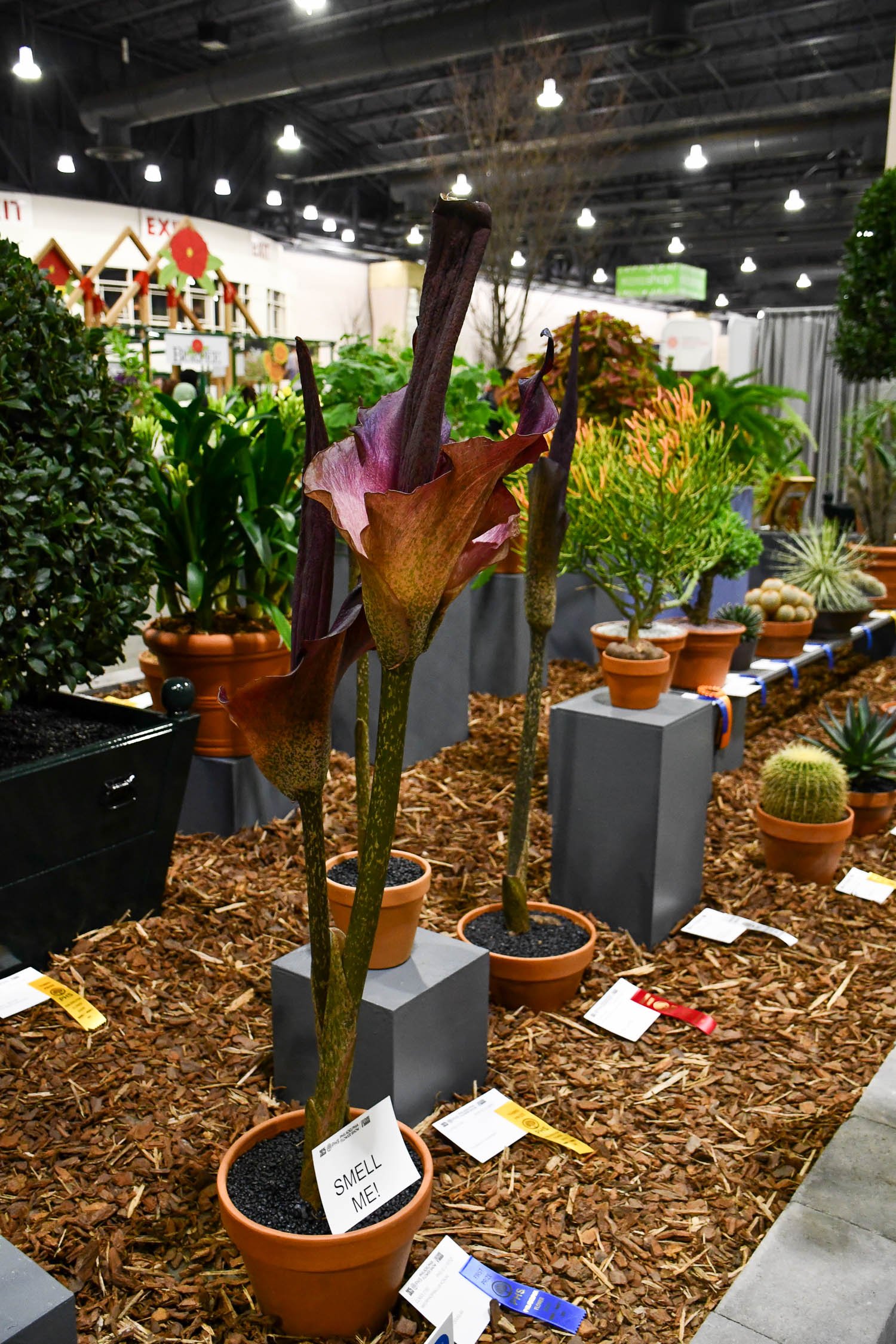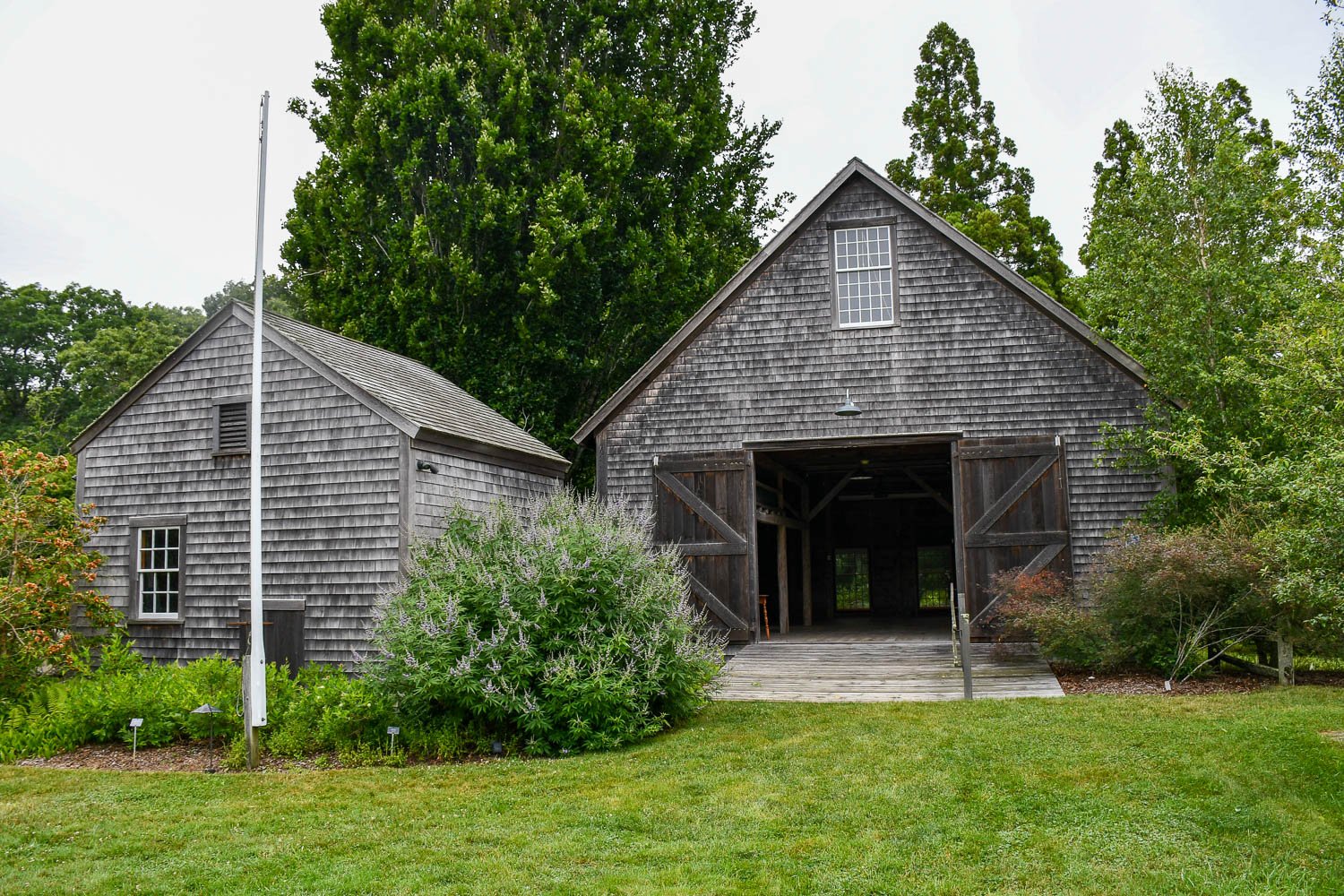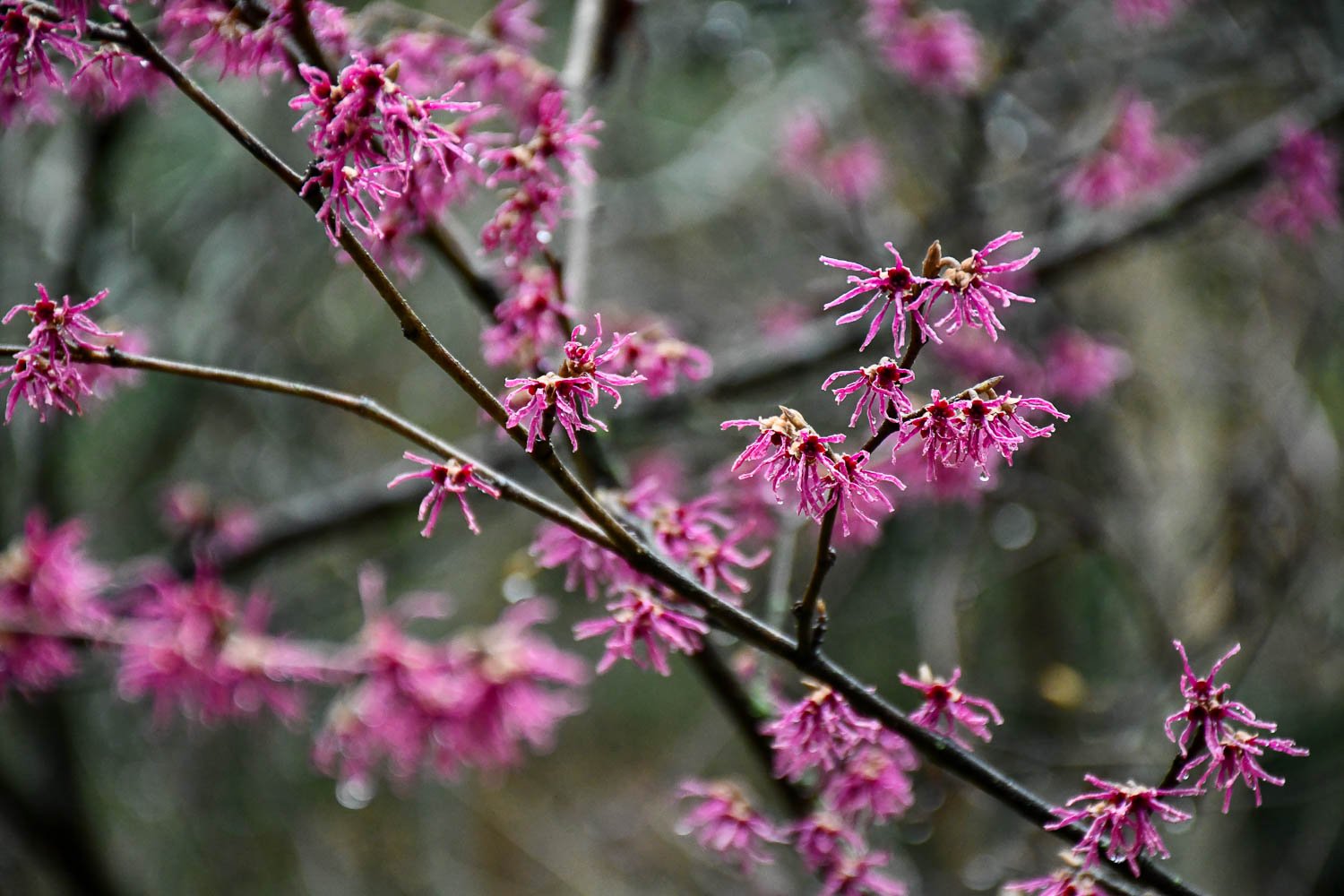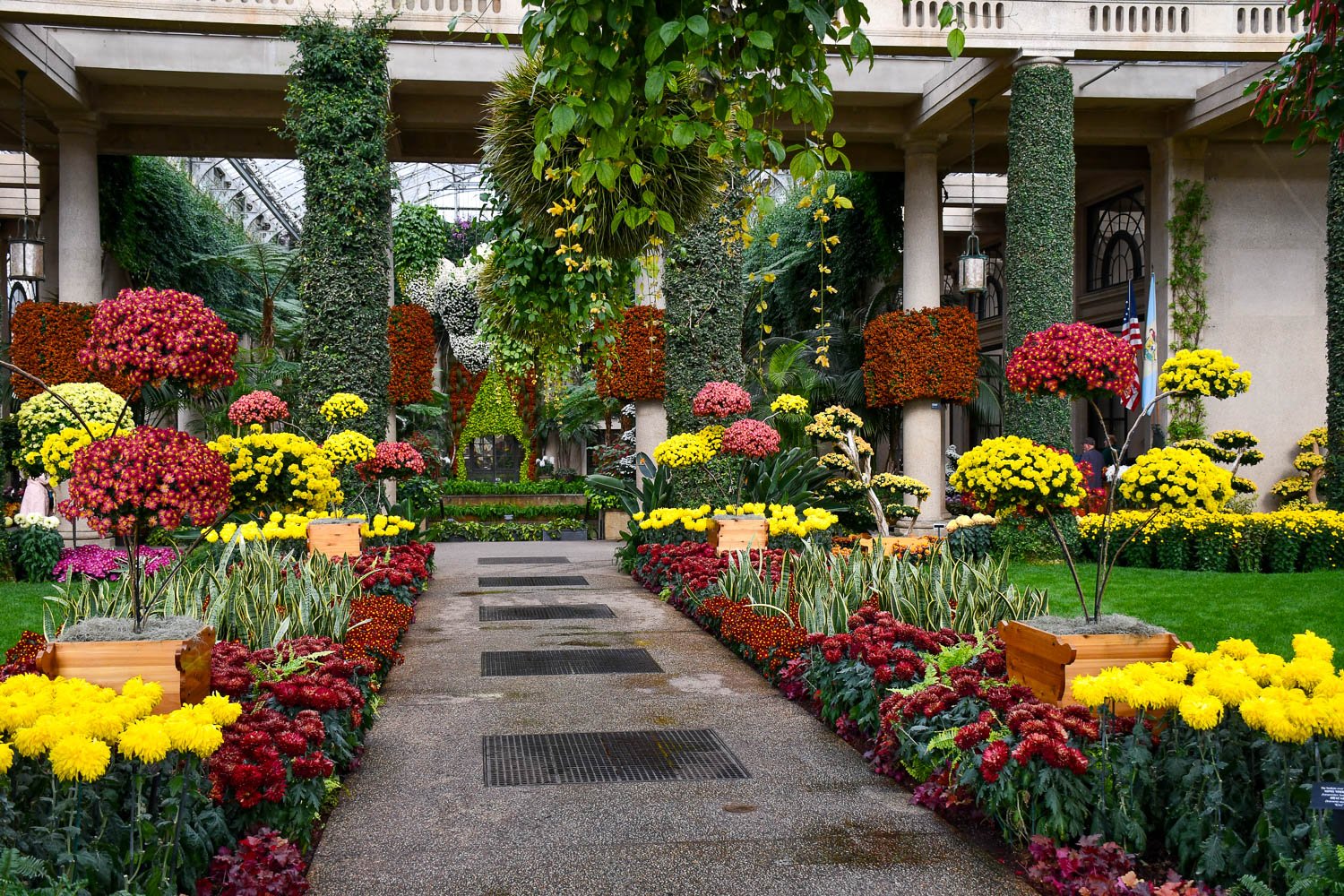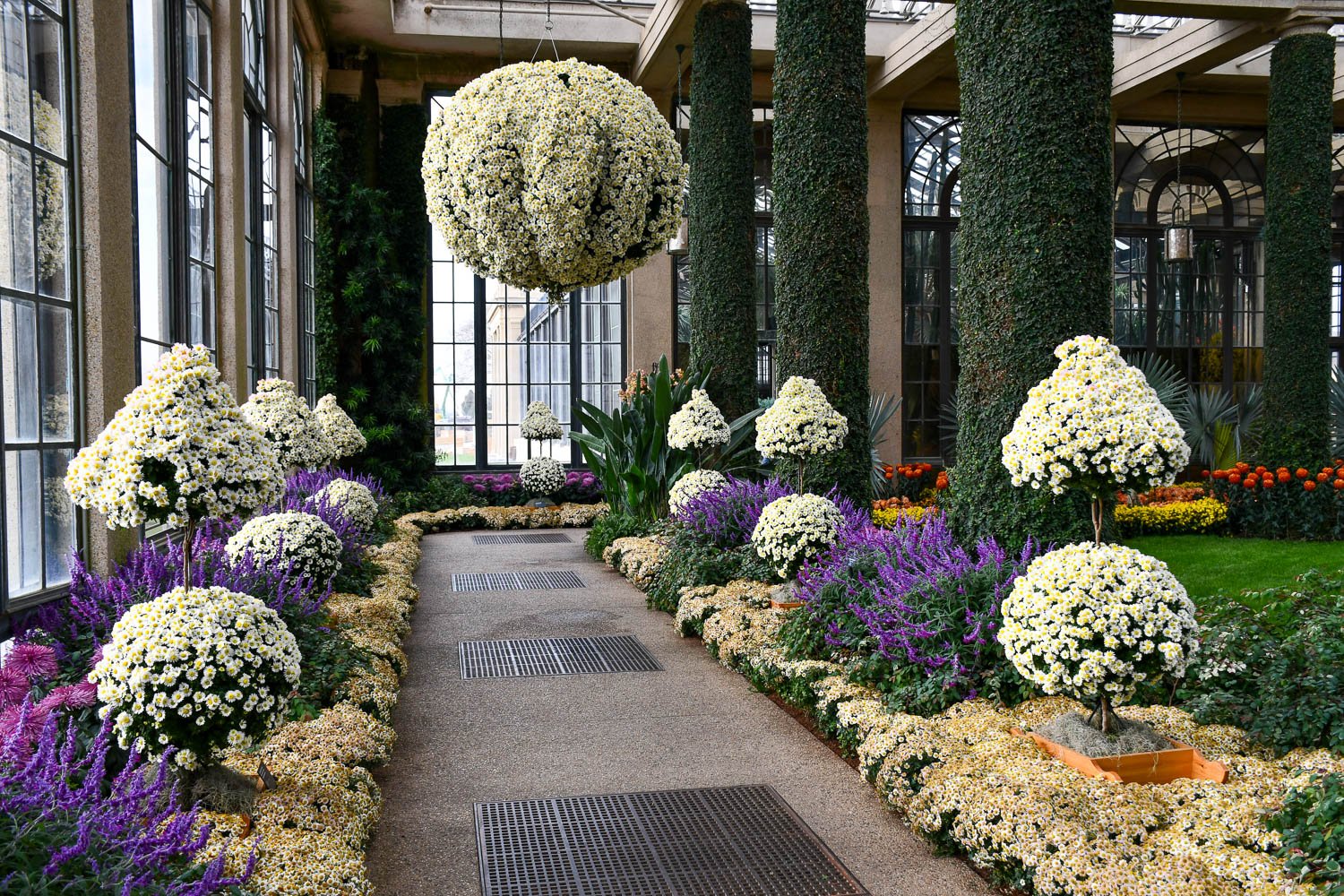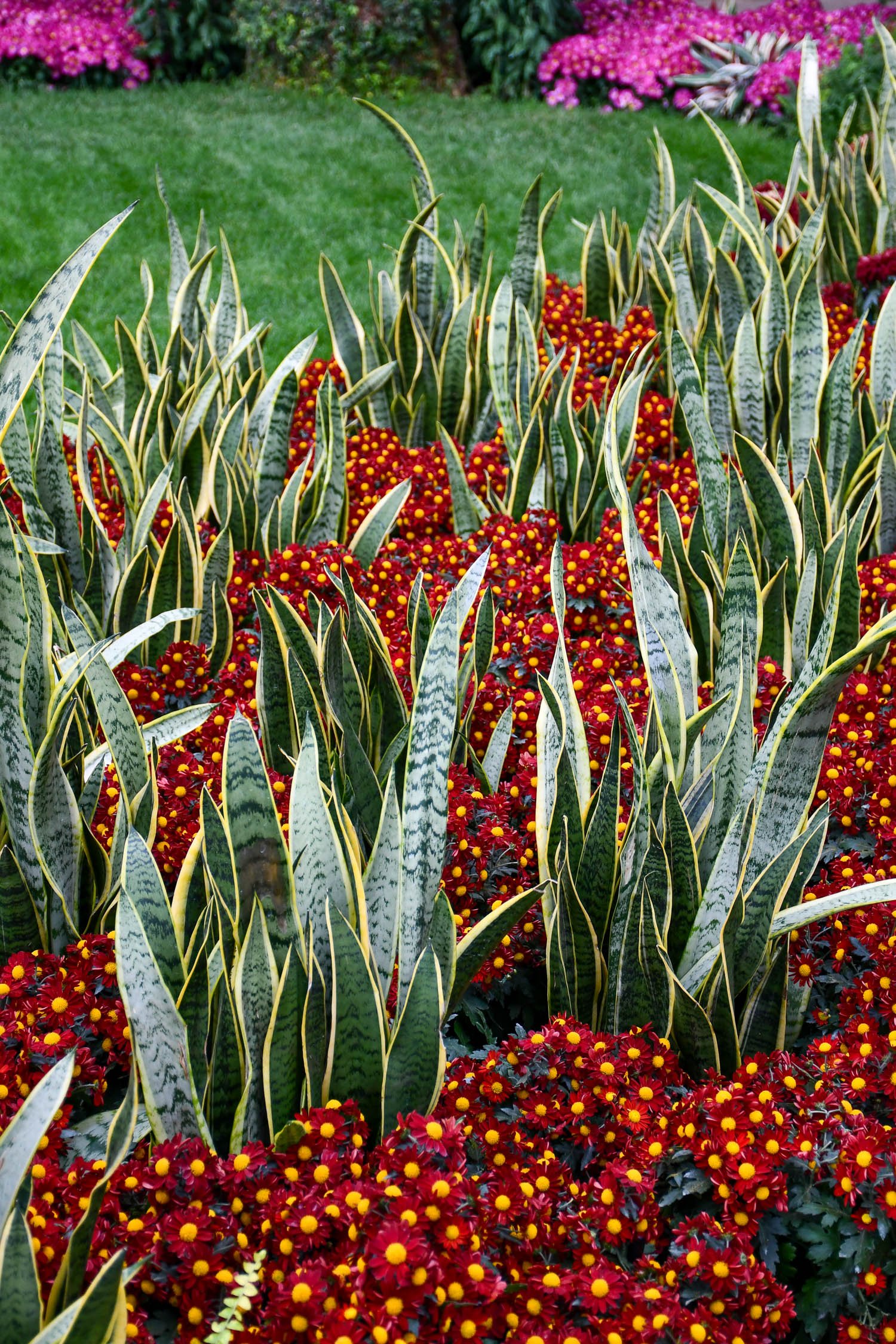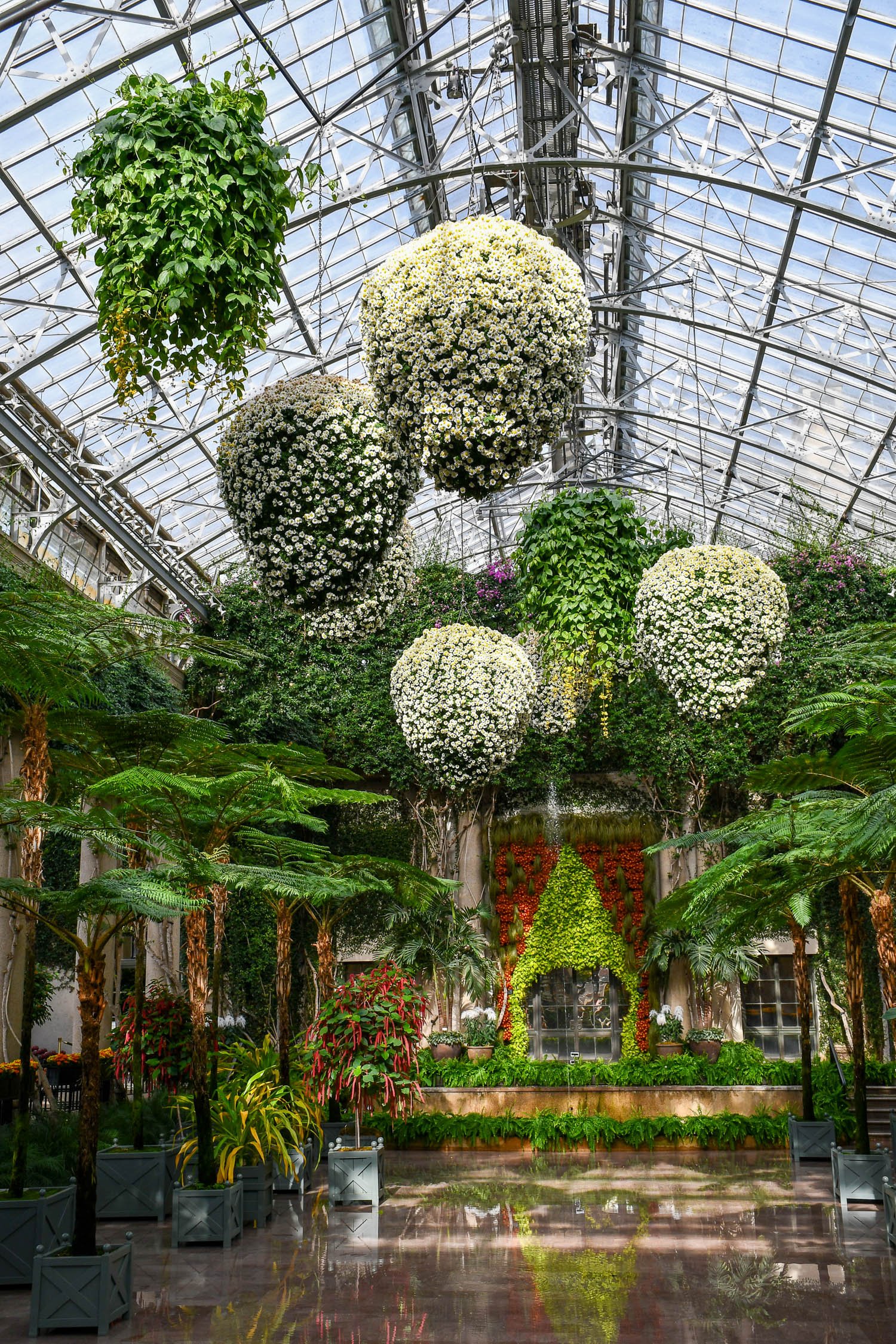THIS IS PART 2 OF 2 OF MY VISIT TO EPIC CAMPUS. FOR PART 1, CLICK HERE.
As promised in Part 1, here are the images from the rest of my visit. I appreciate the emails that people sent me after the last blog post. The one comment I got the most was about details on visiting Epic on your own. Here’s a handy link I found for those close enough to go see this amazing place. I’ve copied and pasted the same intro from part 1 below for those who may not have read Part 1 yet.
A few weeks ago, I shared that during my trip to Wisconsin to speak to the Wisconsin Hardy Plant Society I was fortunate enough to have Jeff Epping tour me around for the day.
Of all the places he promised to take me, I was most excited to see the Epic campus where he has been instrumental in developing their plantings. To be honest, the 1,670 acre campus has to be seen to be believed. And, as you’ll see from the photos below, much of it is fantastical. I asked Jeff why all this effort to make Epic HQ look amazing. He said that the founder Judy Faulkner knew she would be competing for talent with big coastal cities, and she wanted to make Epic an epic place to work.
While much of what you’ll see from these photos is really out of this world, there are still ideas and inspiration to be gleaned. And, the biggest inspiration I took away from seeing the plants and building designs was that we can think differently.
I should note for clarity the buildings have unusual names. I’ve capitalized them to help distinguish their identities, so if you see a random word like Oz, Heaven, Sci-Fi, or Alice, just know that’s the building’s name.
After lunch, we walked out of the King’s Cross cafeteria to find beautiful herbaceous plantings. The Calamintha nepeta subsp. nepeta (calamint) was in heavy bloom (also header image).
We next visited Alice, a garden and building themed after Alice in Wonderland. Card soldiers protect the entrance to the Alice building amongst an lovely planting of perennials.
Out front of Alice was a really thick stand of Ceratostigma plumbaginoides (hardy plumbago). I love the cobalt-blue flowers.
Have you gone mad? Nah, because inside Alice, one of the staircases was designed to make it look upside down.
And, how fun is this! A slide that connects floors in Alice. You can literally go down the rabbit hole.
Our next stop was the emerald Oz based on The Wizard of Oz. Out front a plethora of metal poppies adorned the landscape, and various plants played off the red theme.
I loved the repetition of the red metal poppies across the landscape. Also, notice the field of broomcorn in the upper right.
This long shot shows the repetition of the fine-textured Amsonia hubrichtii (Arkansas bluestar) with Persicaria (knotweeds), Canna (canna lily), and Echinacea (coneflower) seed heads for contrast.
A close up of the metal poppies with Solidago (goldenrod), Schizachyrium scoparium (little bluestem), and Amsonia hubrichtii. A combination that won’t put you to sleep!
We’re not in Kansas anymore. Near Oz, Jeff said they had struggled to grow corn so they had turned to broom corn instead.
One of my favorite areas was the gumdrop meadow in front of the Chocolate Factory based on Willy Wonka and The Chocolate Factory. This planting showed a creative approach to spruce up a perennial garden. Planting annuals like zinnias and marigolds can add some needed color during a lull in the season or early in a planting’s life.
Blue was the color woven through the landscape near Jules Verne. You can see the sea monster in the center of the faux fountain alluding to 20,000 Leagues Under the Sea.
After we visited Jules Verne, we headed toward Sci-Fi, and again, the design was very much on point. Jeff commented that most of the asters were seedlings that had come in from soil used in the project. And, while they were beautiful, he said they required some maintenance to make sure they didn’t overtake the planting.
Solidago drummondii (cliff goldenrod) and Sanguisorba ‘Plum Drops’ (burnet) made a great combination in another section that had filled in more.
A few shots from the outside of Sci Fi. This canyon resembles outposts from Star Wars Episode 1.
And this giant robot resembles something from War of the Worlds.
The inside of Sci-Fi looked, well, sci-fi! Like in the images I shared from Part 1, it’s amazing to see the level of detail that they invest on the inside of these buildings to cultivate the theme.
From the inside of Sci-Fi, we looked out toward Castaway. Jeff said that every plant on the island was planted as a plug to help it establish quickly.
As we climbed to the roof over Cafeteria 42, we looked back to see the naturalistic planting in front of Castaway.
Here is another photograph showing the same planting between Cafeteria 42 and Oz. In naturalistic planting, repetition is key, and you can easily see the repeating pattern of asters along the pathway. Immature trees will help to frame the planting once they mature more.
Right above Restaurant 42 was this long perennial planting that featured an eclectic mix of perennials and evergreens.
Jeff had said that these Solidago 'Goldkind' GOLDEN BABY had done really well. I love their short height, and you’ll see them along the front of beds in the above and below photos.
Oenothera lindheimeri (gaura) and calamint were in good bloom to add some froth to the planting.
On the rooftop of I really liked the color echo between Symphoricarpos ‘Sofie’ PROUD BERRY and Origanum ‘Rosenkuppel’.
One of my favorite combinations from the whole trip was this shady pairing of Eurybia divaricata (white wood aster) and Heuchera villosa ‘Autumn Bride’ (hairy alumroot) with an unknown fern.
As we headed back to the car past Heaven, we walked down this pathway featuring a number of white-flowering annuals.
And, as we left I had to snap a photo of the solar panels over the car park. Shade for cars and energy generation!
One of the last images I’ll leave you with is something I found fascinating at Epic. In every bathroom was hung on the wall their 10 Commandments, their principles, and the principles of their community. As someone who loves systems and processes, I loved seeing their beliefs hung in a place that would provide a constant reminder.
